This, like the last, will be another wordy and lengthy report! What else could you expect when I finally get to roam a spectacular terminal I had so far only seen in pictures?
Introduction
This is a continuation of my superlative Vistara flight from Singapore to Mumbai in March 2023, operated by VT-TVE, an A321neo (my first) with a special ’50 Aircraft Strong’ sticker. Long story short, I was originally going to take AI572 to Chennai, operated by the A320neo, but its departure time of 3:15pm made it impossible to connect from my incoming flight, which arrived at 1:40pm — especially when you factor in that Indian airports make it compulsory for arriving international passengers to clear immigration and collect baggage before proceeding to a domestic flight, and domestic gates close 60 minutes before departure.
As such, no amount of pleading with the check-in agents at Terminal 2 of Chhatrapati Shivaji Maharaj International Airport would lead me anywhere, and so the only option was to no-show for AI572 and book a new flight on the spot. I decided to continue with Air India and take its AI573 evening flight, which was operated by the ‘baby-bus’ of the fleet, the A319 — with the other option from T2 being UK823 on Vistara’s A320neo, which was a tad more expensive. The damages were not more than ₹4,000 INR, which isn’t all that big an amount, even for a last-minute ticket where fares are often known to skyrocket. Moreover, I had skipped online purchase — which for some reason wasn’t working anyway — and gone to the physical reservations counter, saving on a convenience fee of ₹300 for all online bookings.
Most people would have considered this to be a silver lining in a cloud, but for me there were no dark clouds to begin with, and indeed it was a blessing in disguise. Granted, some money was wasted in buying a connection I couldn’t possibly make, but it was a very small amount to part with for all that I gained: a comprehensive walkthrough in what I consider one of the best and most enjoyable terminals in the country and South Asia — with stiff competition coming from Delhi T3 and the shiny new Bengaluru T2, with all its hanging decorations that make mouths fall open in awe.
Incidentally, at the time I was reading a book by Mumbai-based author Rehana Munir — a novel loosely based on what she had experienced running a bookshop by herself in the mid-2000s — and when, the following day, she referred to Mumbai T2 as ‘ultramodern’ in a newspaper column on the coastal getaway of Goa, I could not help but nod vigorously in agreement at what an architectural marvel of a building this was. (She was writing, in fact, about the new North Goa (GOX) airport — which, it appears, is equally as über-luxe as BOM and BLR, if not more. The joys of an airport run by a private operator!)
Top Indian airport terminals like DEL T3, BOM T2 and the brand-new BLR T2 have something that the world’s most luxurious airports — in particular Singapore Changi and its Jewel, historically the world’s highest-rated and most extravagant, and Doha Hamad, which incessantly toots its horn as the World’s Best with its multibillion-dollar ‘Orchard’ — do not. These Indian airports have brilliant décor, architectural flair and opulence, but also cater to passengers from all walks of life with their diverse restaurants, shops and lounges, making them more a like a high-street mall where you can actually buy things (and fly) from, rather than a museum of Dior, Louis Vuitton, Chanel and Prada shops which can only be admired from the outside. And so I was thrilled to finally be able to visit Mumbai T2 for the first time ever, spend more time than originally planned and explore for myself the riches that it offered from touchdown gate to takeoff gate, over a span of four lovely hours — but also very tiring, given that I was traipsing with heavy carry-on bags and barely had any energy left when I reached my Chennai home.
And how about the Air India flight itself? AI might not have the polish of its merger partner Vistara, with its narrowbodies (whether old, rattling A319s or spiffy A320/1neos) being worse than even IndiGo’s spartan, efficient ‘lean, clean flying machines’, as they lack inflight entertainment of any kind. Ordinarily it would be foolhardy to fly an airline which has neither the trappings and little extras of a true full-service airline like Vistara nor the ruthless punctuality and unbeatable reach of the no-frills IndiGo — in addition to the friendly, personable girls on both (and boys on the former!). However, what AI could not match in terms of hard product, it more than made up for on AI573 with its heartfelt, above-and-beyond service from the lovely crew — in this case an all-female one, especially the cabin lead with her charming ‘Dear guests’ in every announcement — along with the simply unbelievable evening snack (I’m dying to have that chaat again) and the surprise juice on a flight which seemed to have none!
These made it a more than an enjoyable flight, along with the fact that I had scored my first A321neo AND my first A319 on the same day, and I cannot help but give the much-maligned Air India an excellent rating on these grounds. I do hope that, after AI acquires and kills Vistara, it can surprise and delight in this way with not only its catering and service but also its hard product. Indeed, the only Indian airline to have done better in terms of service was Jet Airways with its extraordinary catering, which I was lamenting on Twitter — my mother remembered the snacks and I the crew on my final 9W flights in 2018 — once the final nail in its coffin, its CEO-designate’s resignation, came to light on 28 April 2023. All the more reason as, since Jet Airways’ relaunch has completely gone up in smoke with no hope of revival — shattering thousands of hearts, including mine, into millions of pieces — AI will be India’s only full-service carrier for decades to come. (More than anything else, I’m pumped for the new logo, livery and brand identity!)
Flight routing
- 1
- 2AI573 | Mumbai to Chennai | 25 March 2023 | A319 | VT-SCR
- 3UL122 | Chennai to Colombo | 2 April 2023 | A330-200 | 4R-ALB
- 4UL308 | Colombo to Singapore | 2 April 2023 | A330-200 | 4R-ALB
Government-run Indian airports have long lagged private ones — but Chennai’s NITB might finally be catching up
The four big Indian private airports — Delhi, Mumbai, Bengaluru and Hyderabad — have left no stone unturned in recreating a premium, globally praiseworthy experience for passengers, while those airports in Chennai (MAA) and Kolkata (CCU), the other two big Indian metros, are perennial stragglers, never being able to escape government clutches, and they have lost out tremendously in terms of routes, passengers and growth while the big four have gained. I am only too glad my family is shifting to Bengaluru and leaving Chennai behind — in particular as BLR has continued to grow by attracting a Qantas flight to Sydney and Emirates’ A380 service, in addition to newcomer Akasa Air establishing its main base there — though they will likely disagree as coastal Chennai is overall a far cleaner and better organised a city than its overpopulated, congestion-stricken neighbour. I especially love that private Indian airports have a wide range of spaces and offerings that serve those with all kinds of pockets, in stark contrast to Changi and Hamad, whose luxury boutiques explicitly cater only to the well-heeled jetsetter crowd, especially of the Insta-influencer kind.
I have been to BLR (only T1) and HYD a couple of times over the past year, and, combined with this transit at BOM, I can finally understand how much residents of these cities have prospered with these lavish facilities while MAA and CCU have suffered in government hands. The only one I have not been to in the past so many years is Delhi, firmly the largest airport in the country by all metrics, and particularly its Terminal 3 — but I’m afraid I may not have the chance to visit it any time soon, my last being a transit in 2015, and before then only in 2008/9! Indeed, I haven’t been a lot to the north of the country, though I am eager to correct that omission in the near future. I could not help but think how much I stand to gain as my family leaves Chennai, our home city for two decades, and moves to Bengaluru, which has a far superior airport by a country mile but is shockingly lacking in many other areas of living quality, especially traffic and pollution. This just as MAA’s long-delayed integrated terminal is finally ready to welcome passengers, but I won’t be among them.
Now, after years of postponement, Chennai has finally managed to open its New Integrated Terminal Building (NITB) for international flights in April 2023, after decades of using a 1980s-era ‘cattle shed’ which made a terrible impression on arriving passengers — and I must admit that, indeed, it actually looks spectacular, with passengers on test arrivals like this little girl from Dhaka gaping in awe. However, it has not yet been fully inaugurated, and in any case the state-owned Airports Authority of India has decades to go in terms of maintaining the facility to the high standards of the big four private airports, as well as smaller ones like Kochi, North Goa (GOX) and six more acquired by the Adani group — Ahmedabad, Guwahati, Jaipur, Lucknow, Mangaluru (Mangalore) and Thiruvananthapuram (Trivandrum) — which it runs alongside CSMIA Mumbai and the upcoming Navi Mumbai airport. Like MAA, Chennai’s upcoming Parandur airport — which takes the cake for being the furthest from an Indian city centre, beating BLR and HYD by a huge distance (literally) — will likely also be managed by the AAI, and not a private operator, which is bad news.
Still, the NITB finally takes one of the largest cities in India a step closer to its more prosperous rivals after years of disappointment, and I can only hope that the new building and resultant increase in capacity will result in more services, especially as Chennai has lost a number of prepandemic destinations like Malé, Jeddah, Hong Kong and Tokyo, which have direct flights to other Indian cities. (Cathay Pacific Airways and All Nippon Airways have both refused outright to return to Chennai, the former switching to Bengaluru instead, and the latter preferring to send more premium planes to Europe out of Haneda than serve small Asian destinations from Narita — though its rival JAL remains committed to BLR with 3x-weekly services that are mainly used by techies connecting to San Francisco, where Air India also operates a non-stop flight. Also, Air Austral’s Réunion flight (India’s only A220 flight) has been suspended due to regulatory reasons.) But MAA has at least managed to add services on Ethiopian Airlines and Air France during the pandemic, and with a bit of luck and proactivity that the AAI has not shown much so far, it might succeed in catching a new destination or two — fingers crossed.
The connection that wasn’t
Saturday, 25 March, continued. Into the immigration hall I went, with all the passengers arriving from UK106 traling behind. Immediately I was struck by the ornate objets d’art that lined the corridor, enclosed in cordoned-off areas.

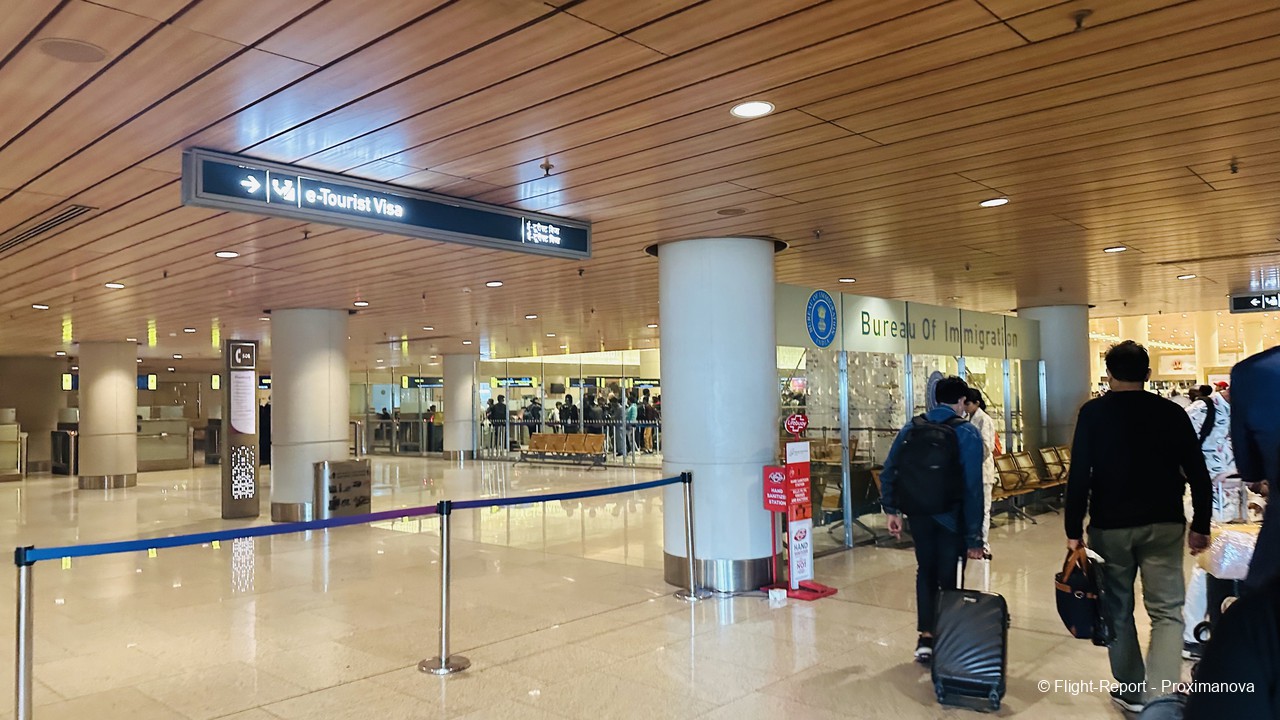
The huge, multlingual ‘Welcome to Mumbai’ mural I had neither seen nor anticipated before, and the immigration hall was from every angle a picture of opulence, though of course the queue scarcely looked anywhere except ahead. Much in line with the immigration counter at BLR’s Kempegowda Airport (where I’d been standing at the stroke of midnight) — though far more lavishly decorated than that — and as stark a contrast as possible to the dreary ‘cattle shed’ at Chennai.

This was also the first airport I’d seen with a duty-free shop immediately behind the immigration hall! Fortunately, immigration was over and done with in just ten minutes, as another counter had been opened to accommodate the passengers on UK106. It continued to keep me in the hopeful illusion that I would probably make my connecting flight!
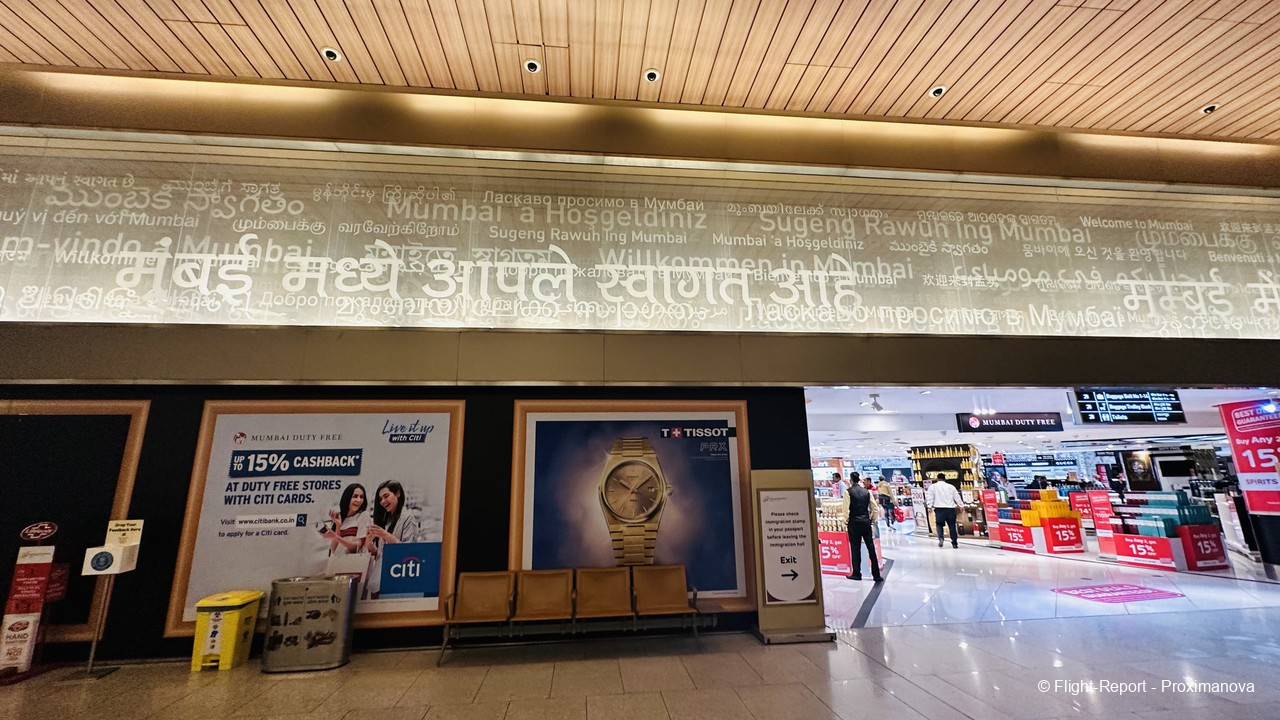
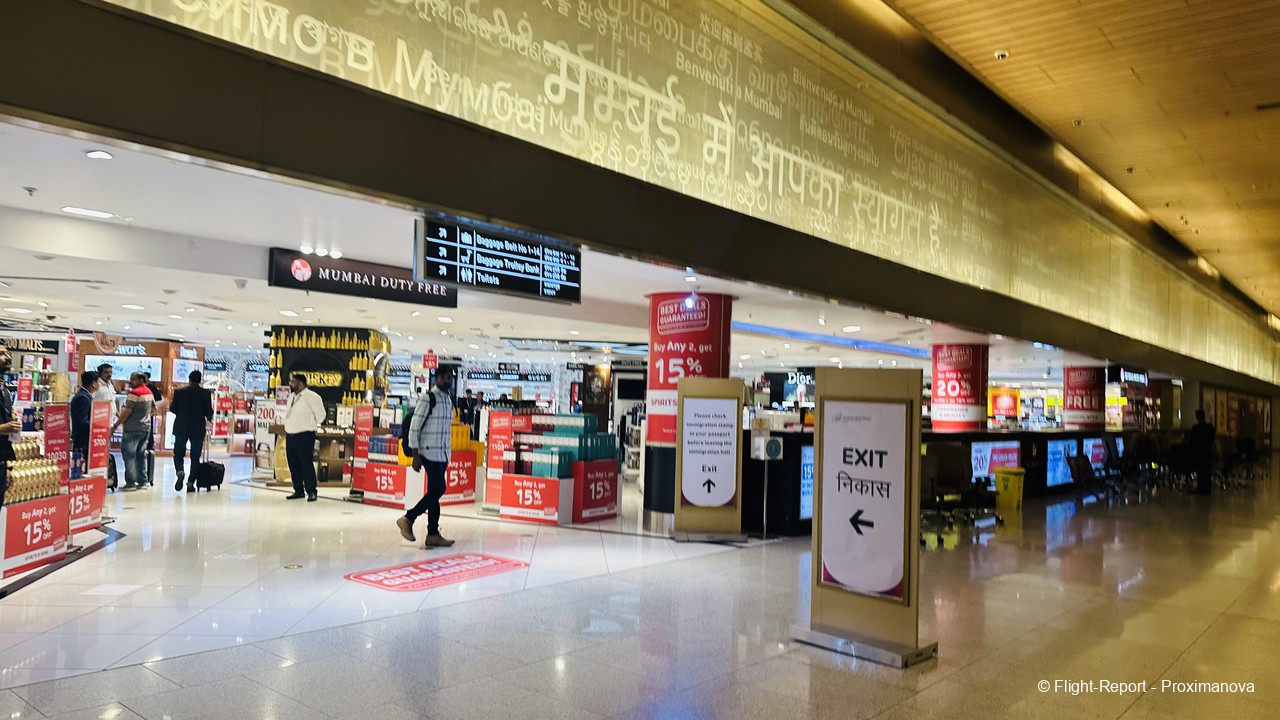
The duty-free was filled with your typical cosmetics, liquor and fashion products, as well as foods (especially chocolates) and knick-knacks. For the most part, barring the liquor, it looked no different from the beauty section of your typical Indian department store, be it our homegrown ones like Lifestyle, Westside and Reliance Trends, or foreign imports like Marks & Spencer and H&M.
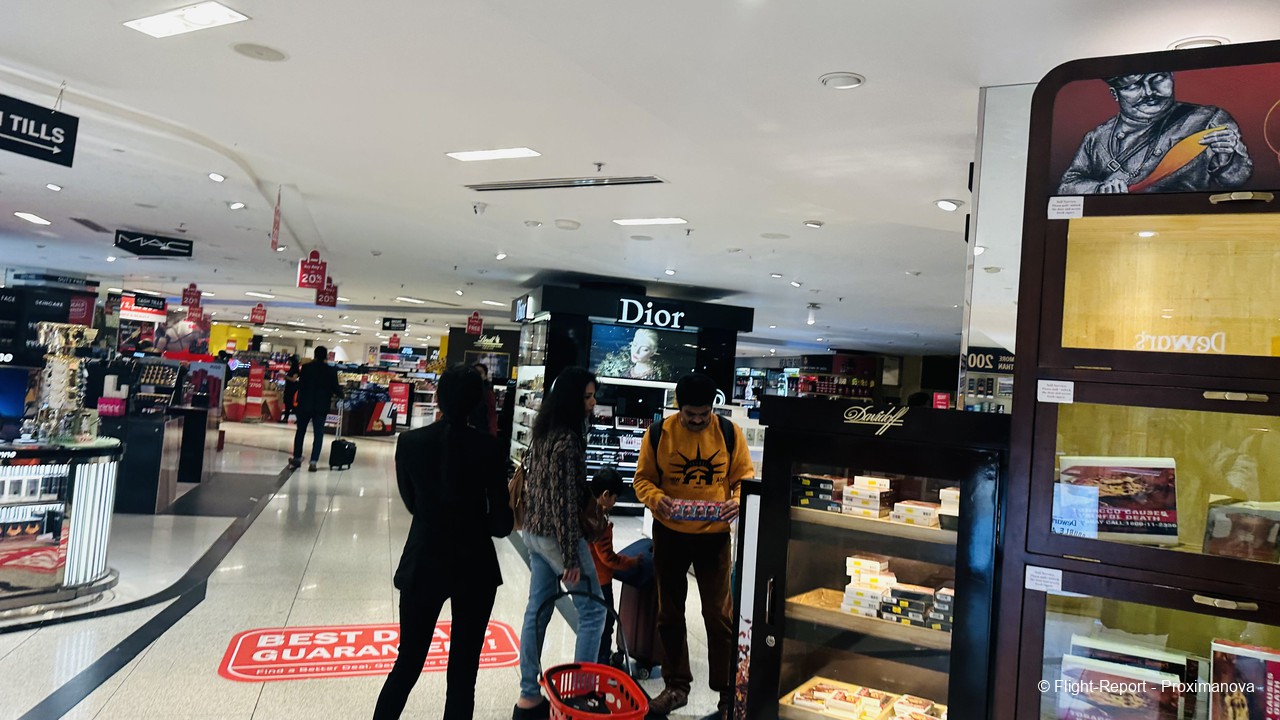
And then we were out into the towering immigration hall, with its wooden ceiling and sweeping pillars, and the trademark square-pixel numerals that are such a distinctive feature of Mumbai airport.

My collectibles turned up at belt number 8, in as many minutes.

Two of the Vistara flight attendants were also at the baggage belt. Out of curiosity I approached one of them, Riya, to enquire about the domestic transfers area, and she pointed me to the customs section straight ahead, after which I would have to take a left and go up a few levels. I also wished them great success for their Air India future, which I had also done on board while deplaning, as well as the BLR–HYD flight on the eve of New Year’s Eve.
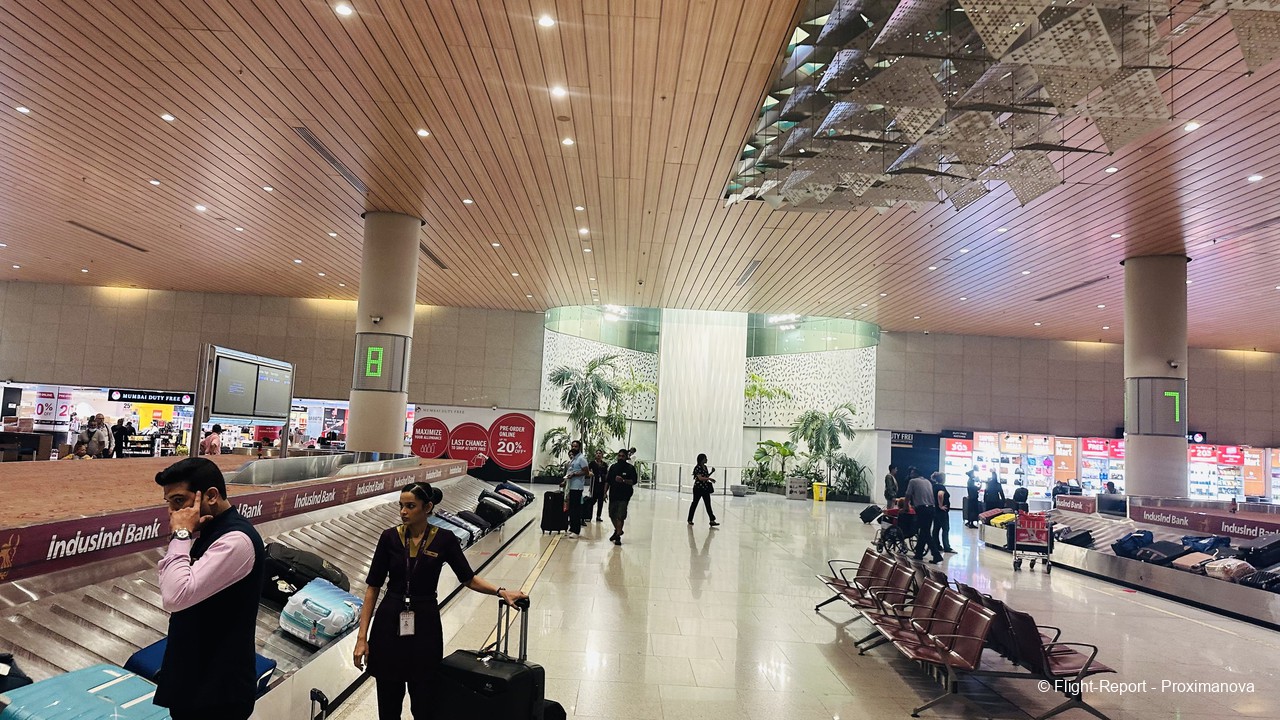
The customs section was as pretty as the rest, with tilde-shaped patterns on the wall above, and it was followed by a post-arrival security screening.


All clear, I now proceeded to the domestic transfer section to the left…

…which had a Relay bookshop, an EbixCash money-exchange counter and a few other outlets.
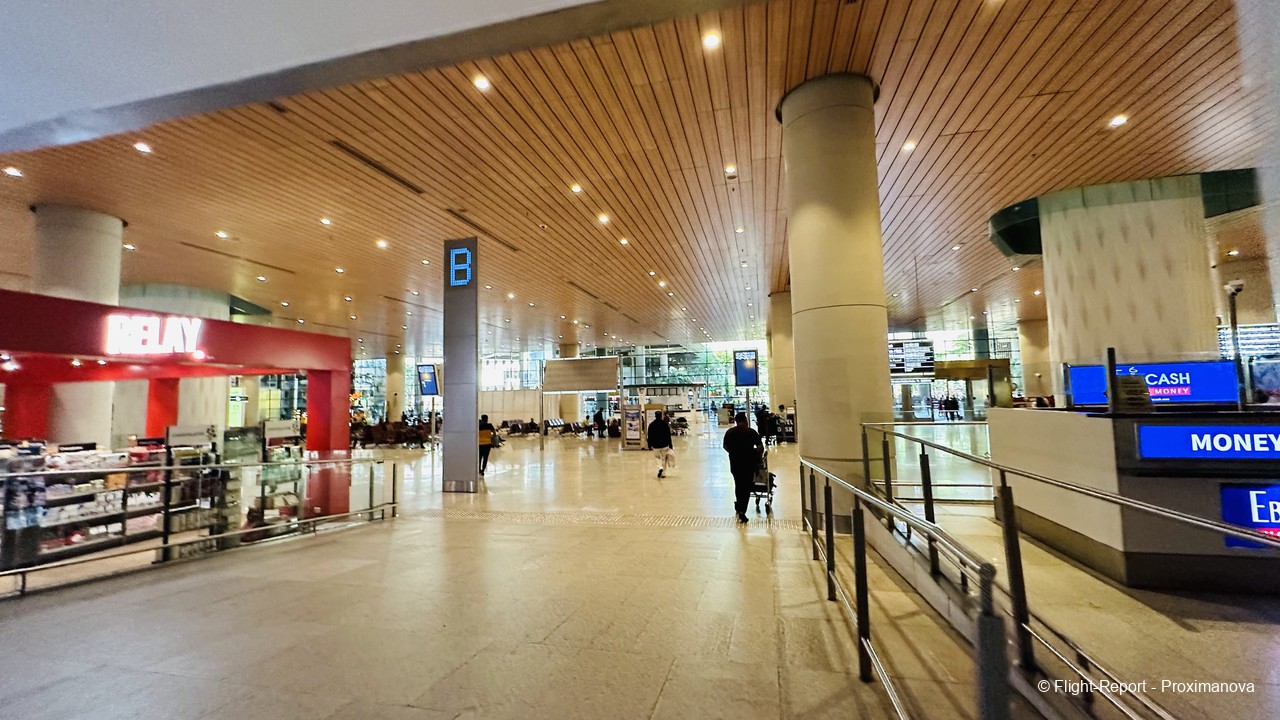
I turned left and confronted ads for the nearby Taj Santacruz five-star hotel on either side. The iconic hotel chain’s two most famous properties in the city are the legendary Taj Mahal Palace near the Gateway of India — one of the main targets of the 26/11 attacks in 2008 — and the Taj Lands End in the luxurious seaside residential district of Bandra, where much of Bollywood lives.
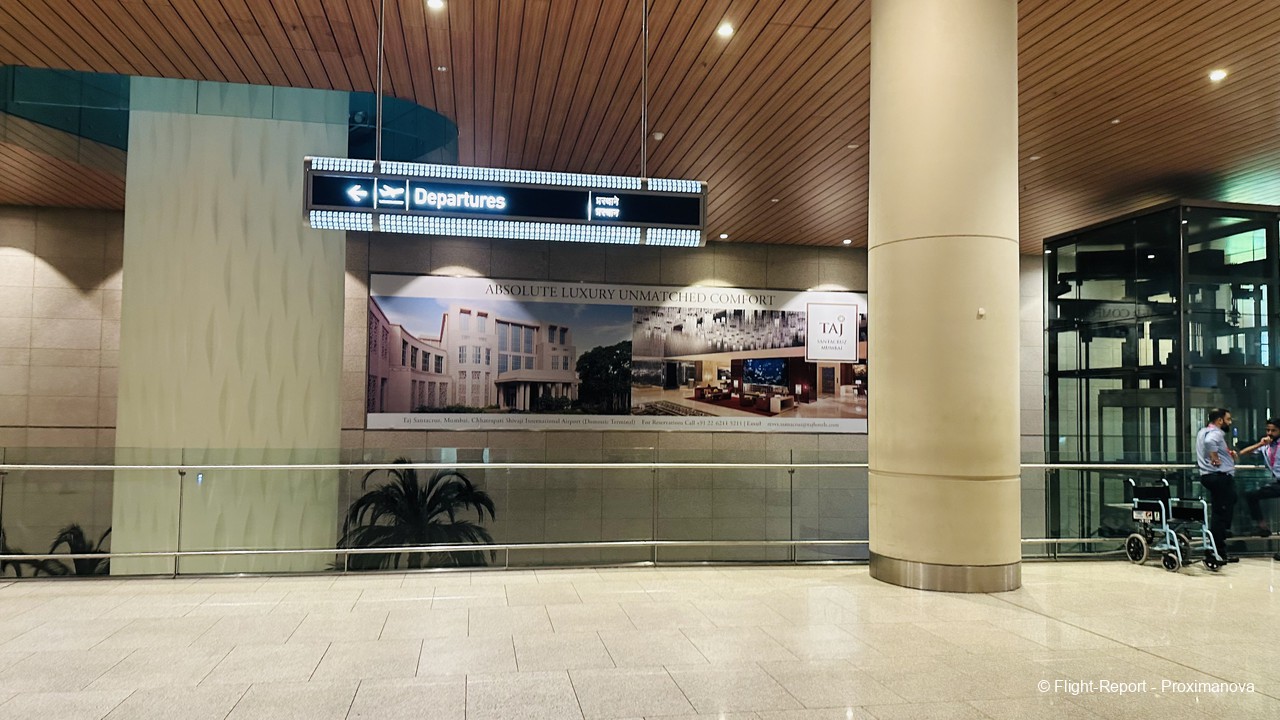
At 2:30 I took the huge, suited-for-factories elevator a level up and reached a mezzanine level, which had this IndiGo office to the left. An escalator loomed ahead and I trudged on to it with my big suitcases and bags.
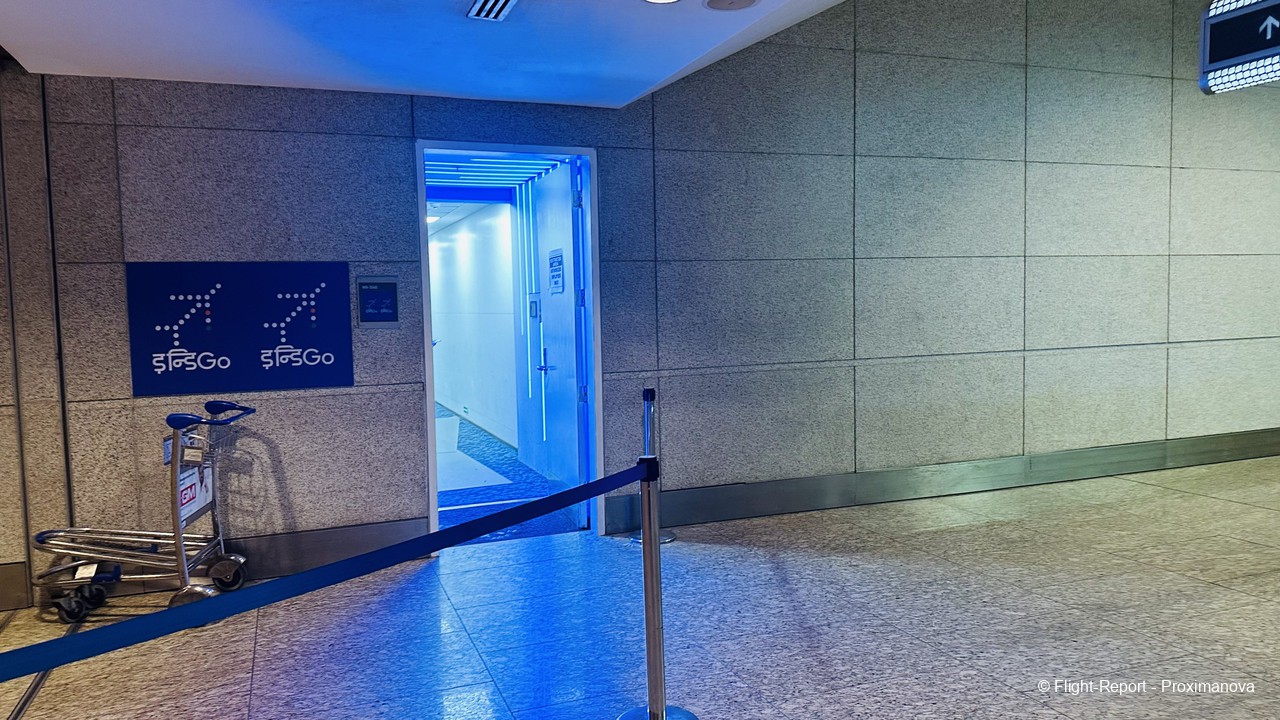
Now I had reached the main departure check-in level, the one that makes Mumbai T2 so recognisable with its tall pillars, blue square-pixel lettering and sweeping perforated ceilings. It was the first time I had been to the terminal, and I bet it won’t be the last.
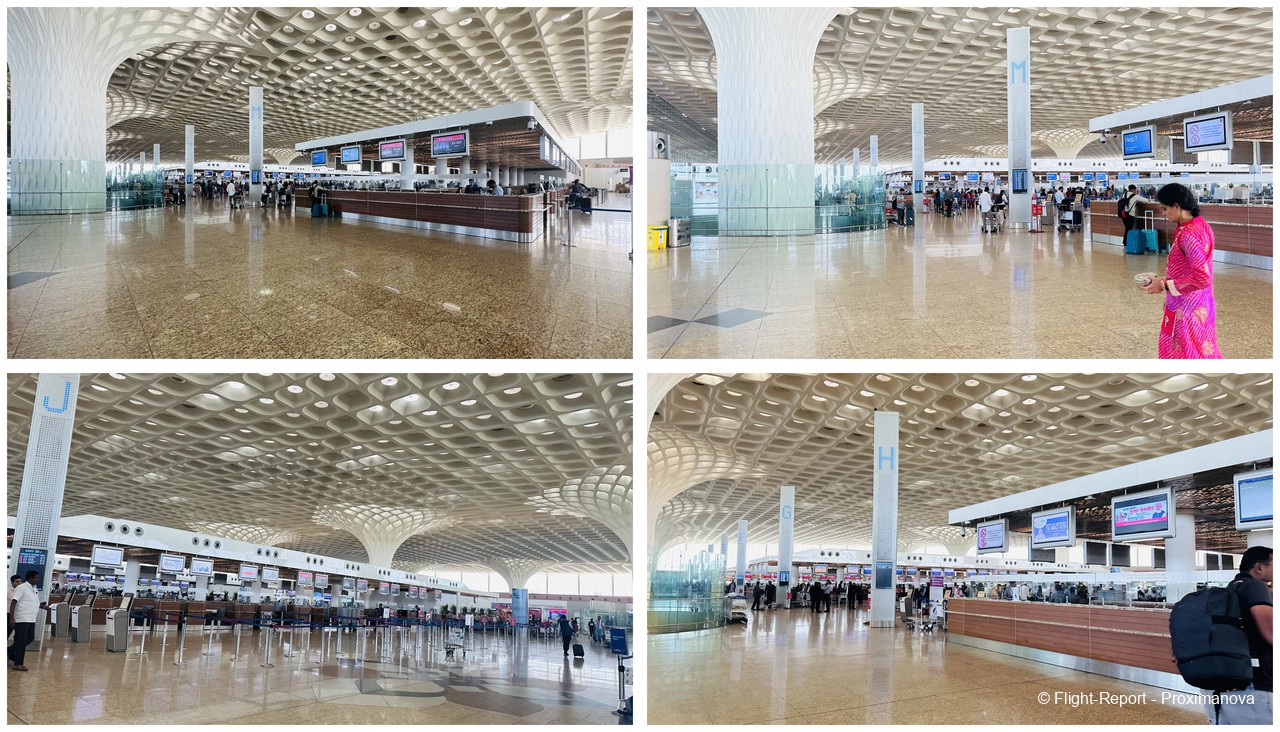

Here is where I understood that I wouldn’t make the connecting flight. I spoke to the Air India customer service agents and they confirmed that I was too late for AI572’s check-in, and that I would have to book another flight. Adding some spice to the proceedings was the fact that the two pilots of AI572 had also turned up late, but of course they were allowed to go through, though I turned this into an interesting excuse to tell my parents, instead of a simple ‘I was too late for my flight’ approach that would make me look like an idiot! Also, many other passengers on other flights were queueing up at the support counters, and it wasn’t easy to get in touch with the agents, but when I did, the road ahead — or rather the flight home — became clear.
As a passenger, it was completely on me for not properly taking into account the minimum connection time, but at least my folly was evident now, and a solution was not hard to get and required parting with only a nominal amount of cash. The gate staff for AI572 called, and I confirmed that I would have to no-show due to my incoming flight arriving late. In any case, I had already decided to go for AI573, though I wanted to book at the reservation counter instead of online as the website was not accepting my payment.
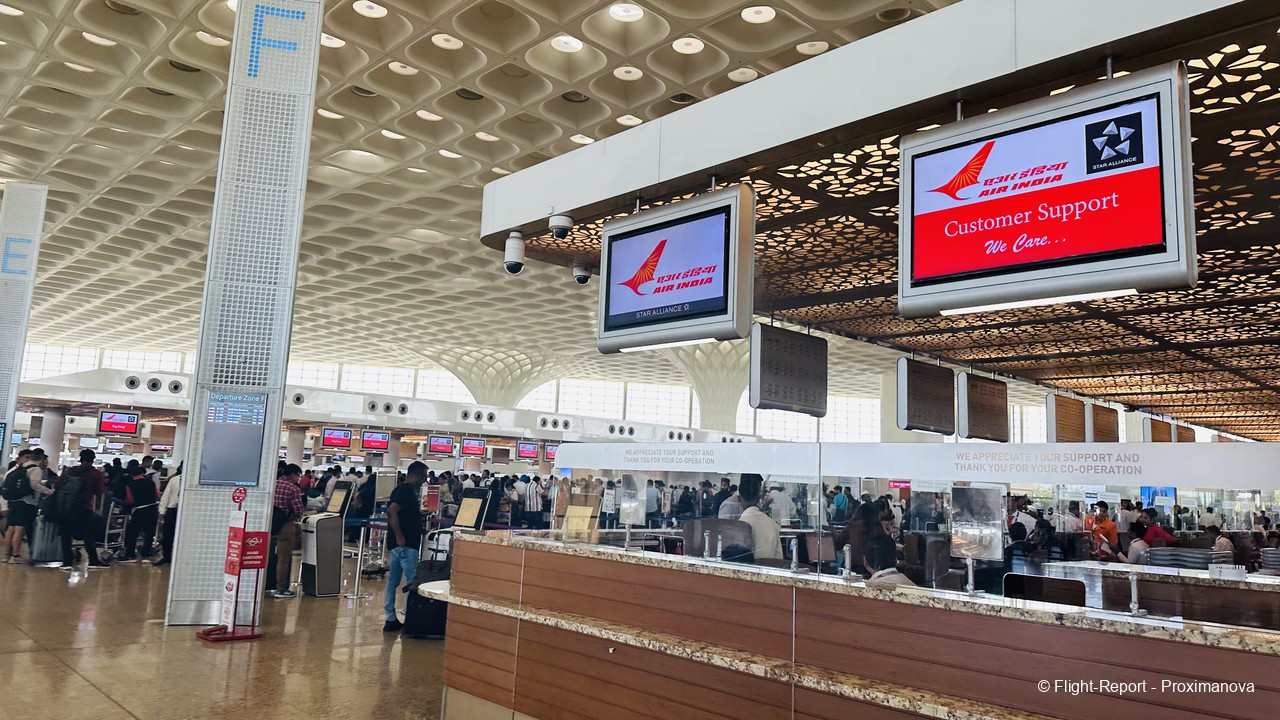
As far as the question of letting me out of the terminal to enter the AI reservations counter was concerned, there was a bit of back-and-forth between the Air India agents — who, as per their lanyards, were contracted by the Turkish-based ground-handling company Çelebi Aviation — and the ones at the nearby Vistara desk. Each initially shirked the responsibility, directing me to the other airline’s staff: the AI ones refused because I had arrived on a Vistara international flight, and the UK ones declined because I would now be taking an AI flight. Finally, an AI agent relented and she spoke with the security at the entrance to allow me to leave, then asked me to write down my name and time in her register.
In any case, the Vistara counter had a ‘Celebrating 8 years’ sign — which is kind of sad since UK will disappear shortly after its 9th birthday and not make it to the decade mark — while above was a big notice warning passengers against unruly behaviour.
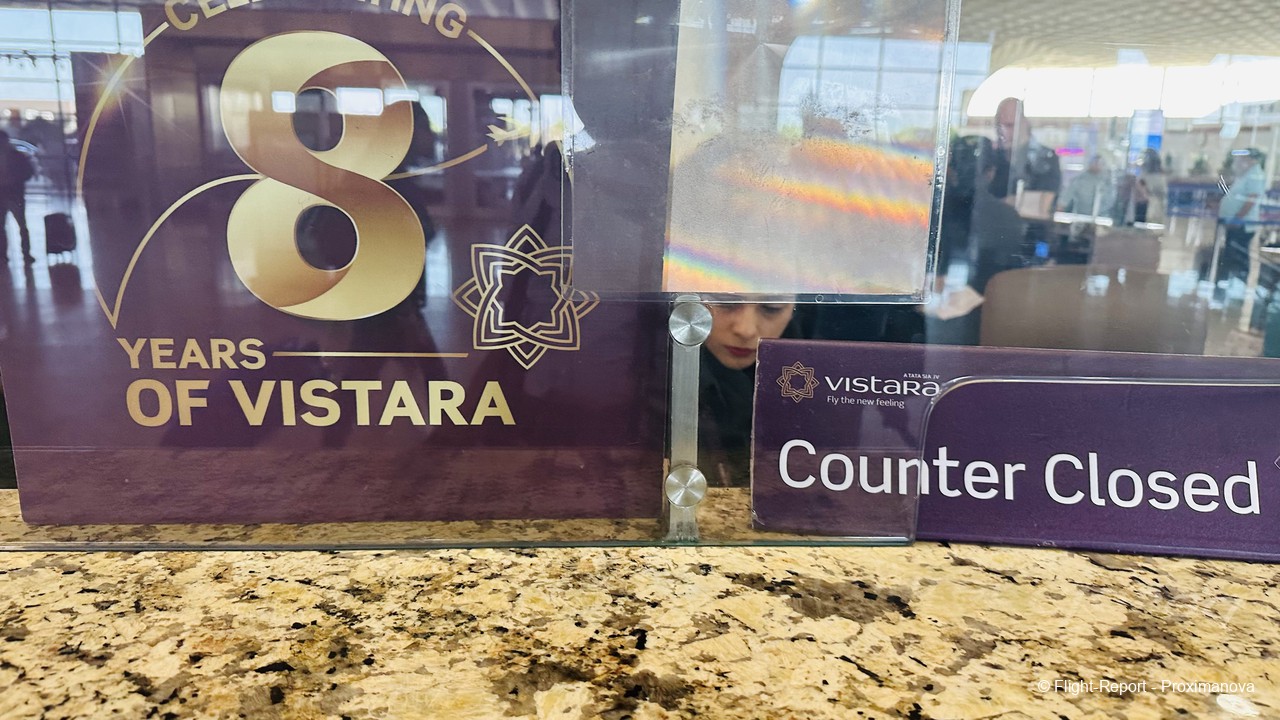
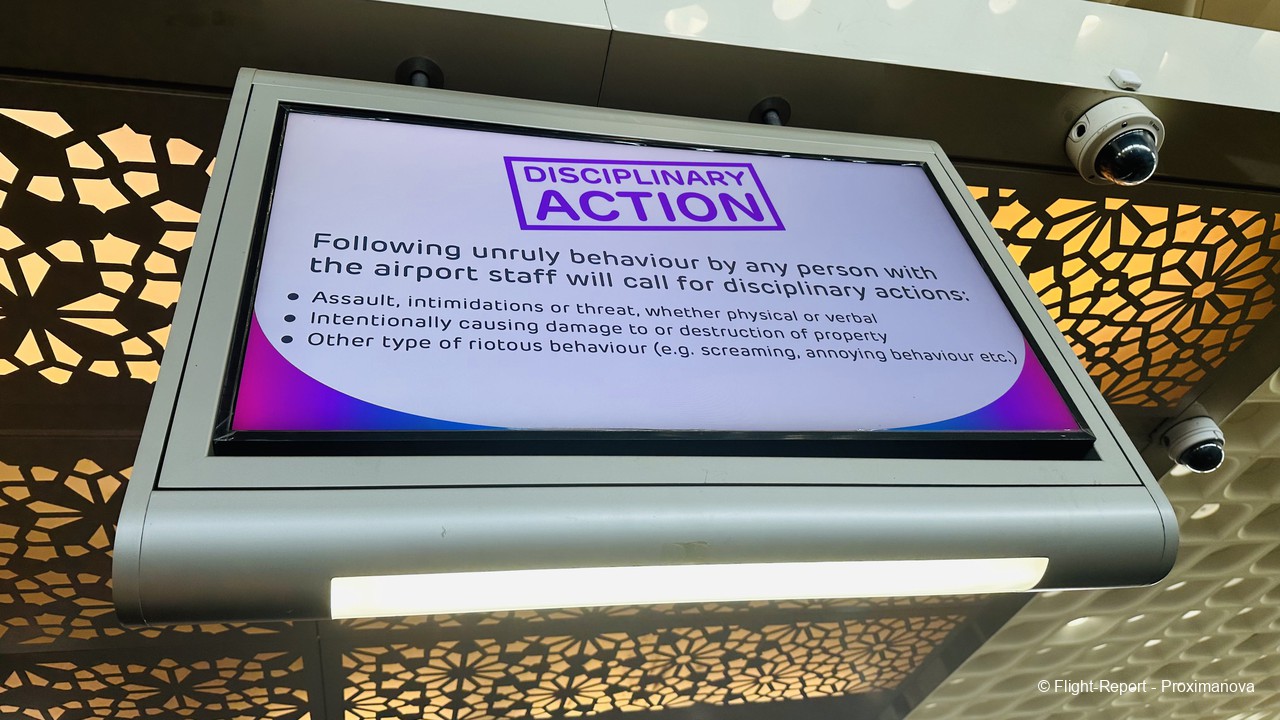
At length, I was escorted to the AI reservations counter, cutting through the queue of departing passengers. Now I was face-to-face with the vast drop-off area of the airport, from where travellers from near and far embarked on missions big and small, often bidding farewell to loved ones.

Some of the gates had self-check-in kiosks, but Mumbai is nowhere on the list for the rollout of the new DigiYatra system that uses facial recogntion. It is so far present at two major metro airports, Delhi and Bengaluru — where I had seen it on the Vistara flight in late December — as well as a smaller state-run airport, in the northern temple city of Varanasi. Four other airports (Kolkata, Hyderabad, Pune and Visakhapatnam) are expected to launch it in due course, but neither Mumbai nor Chennai has anything confirmed.
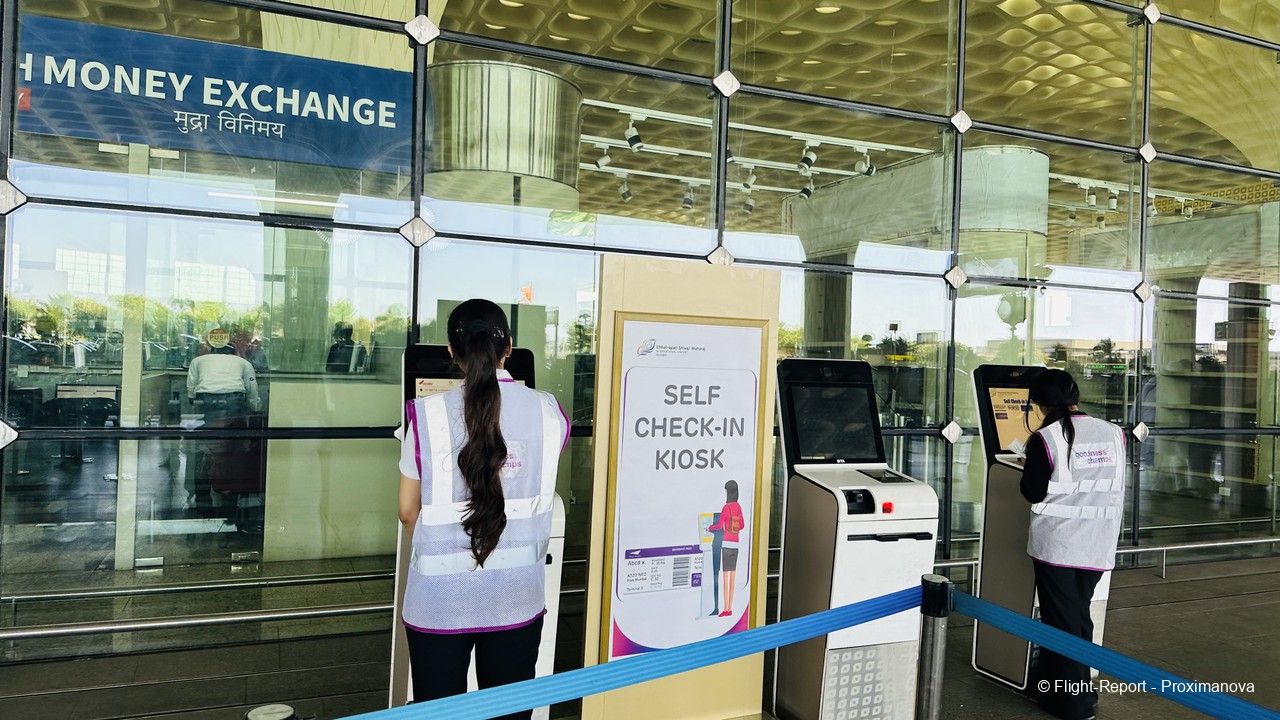
By now AI572 had taken off, operated by VT-EXP, an A320neo which I had no real interest to adding to my log. I had flown a bunch of VT-EX* aircraft before between Chennai and Singapore in 2018–19, and another from the VT-CI* series; there would be no benefit to add an aircraft devoid of inflight entertainment. While of course my A319 was older, from a 2009 vintage, and had broken, rattling seats, I wouldn’t exchange the catering and service for anything else, and ultimately I took the right decision — though I should never have booked AI572 to begin with!

In time, I was presented with a boarding pass, having paid the sum of ₹3,969 at the reservations counter and hence saving on a convenience fee of ₹300 for all online transactions. I appreciate Air India’s colourful boarding pass with the Maharaja in a corner. While Vistara’s and SriLankan’s at least have a coloured band on top — with the latter even handing them in a UL-branded envelope — the likes of Singapore and Malaysia fail badly with their boring white passes.

Soon enough I was through security on this domestic sector, after reassuring my mother that despite not making it for the previous flight, I was well on the way home, and I would take learnings from these experiences on how to better plan travel in future. Now I would be going down to the departure gate level, which was less a sterile terminal and more a glorified and fancy shopping mall, with shops from major brands both Indian and overseas.
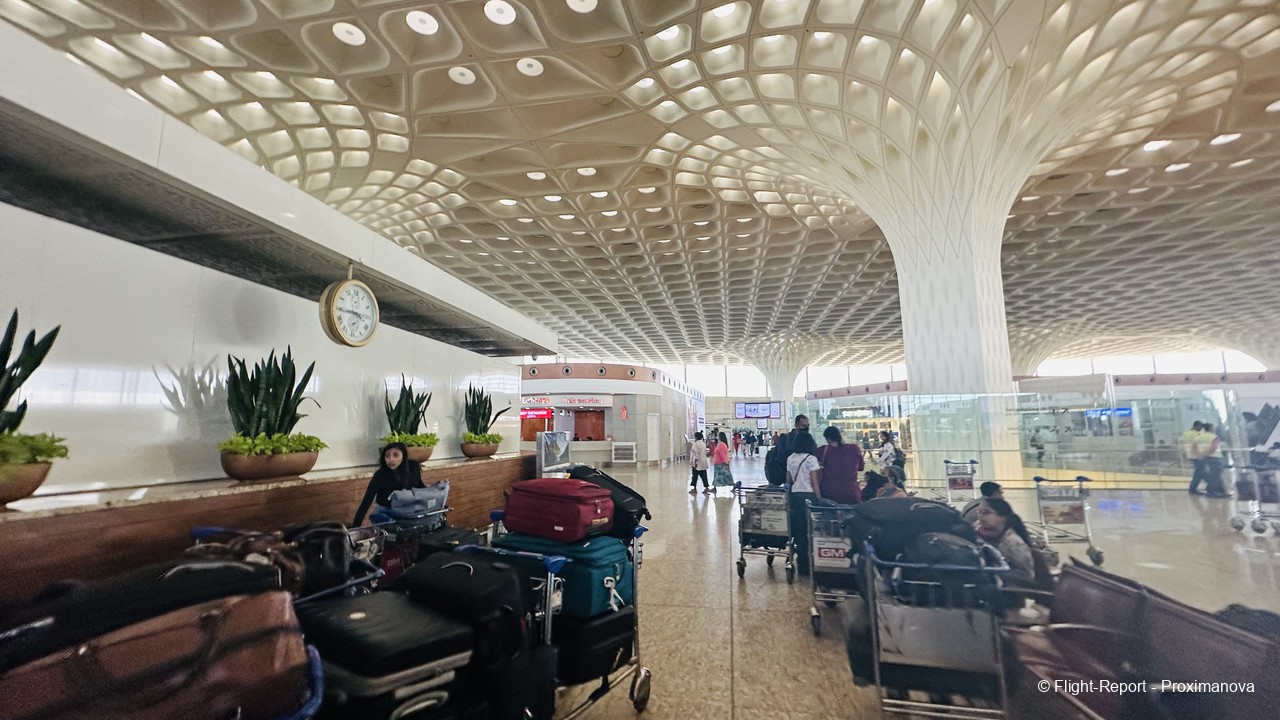
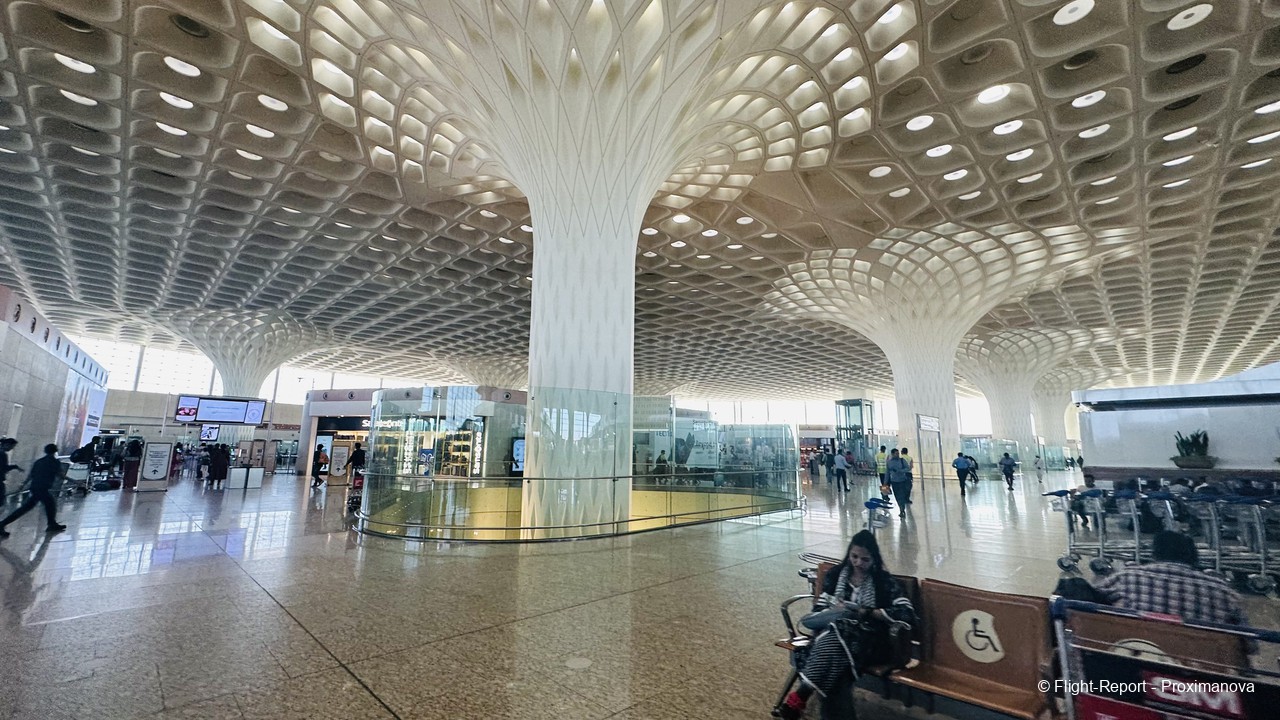
There was an interesting ad for a jewellery brand endorsed by Bollywood celebrity Karan Johar, and another for the MacBook Air. (For the record, India’s first-ever Apple Store has now opened at Apple BKC, not too far from the airport, in the spanking-new Jio World Drive mall. Two days later it was followed by Apple Saket in Select Citywalk, Delhi, one of the capital’s topmost luxury malls.)
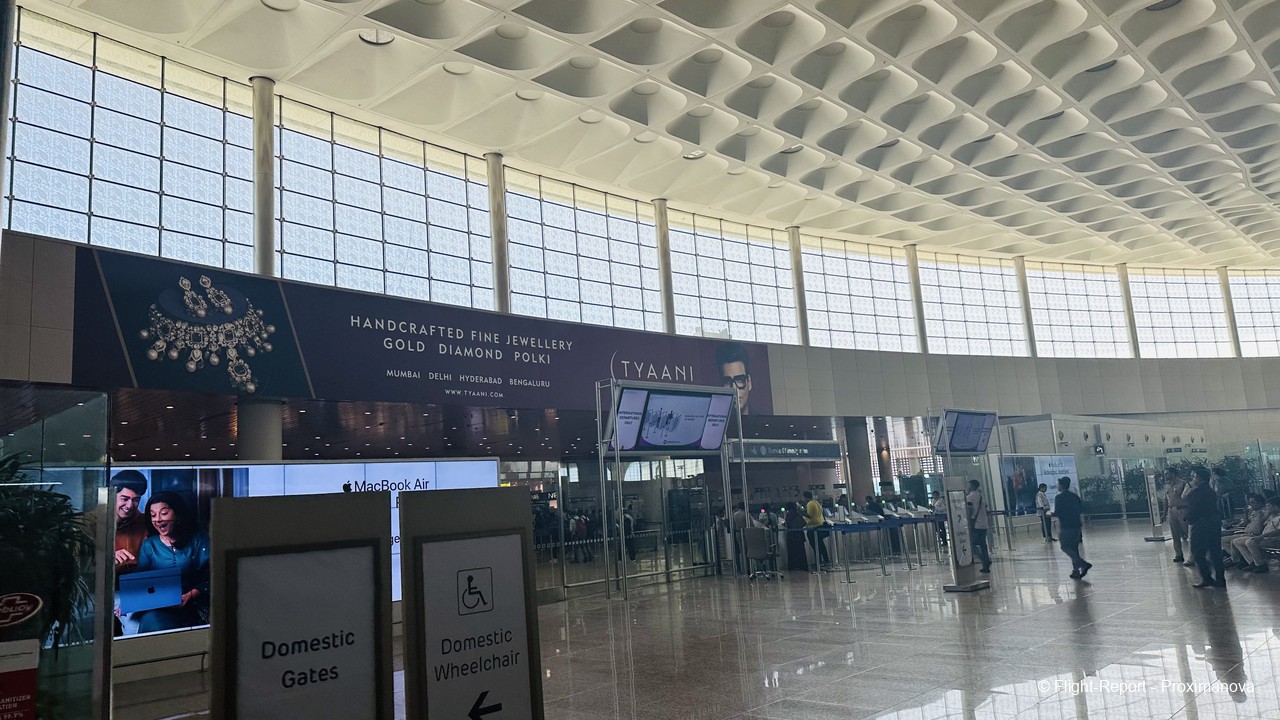
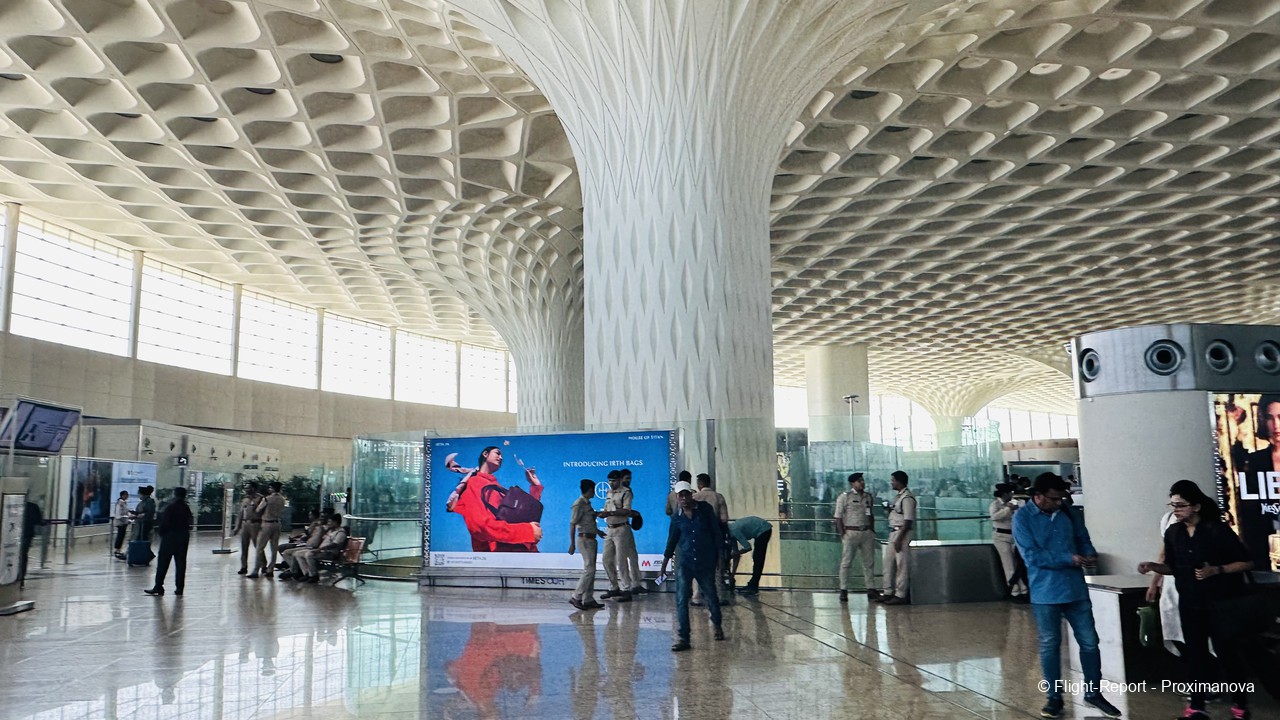
Now I was heading down to visit India’s original lifestyle shopping mall with attached gates and lounges, and it made me reflect on just how poorly state-run airports’ amenities tend to be. One should be lucky to get a KFC or Pizza Hut in Chennai, a far cry from all these outlets — though Chennai is developing an ‘Aerohub’ beside the airport, and Hyderabad already has an ‘Aeroplaza’ of its own. However, these landside facilities may not be used by most passengers, certainly not by those transiting. Which brings us to the next section.
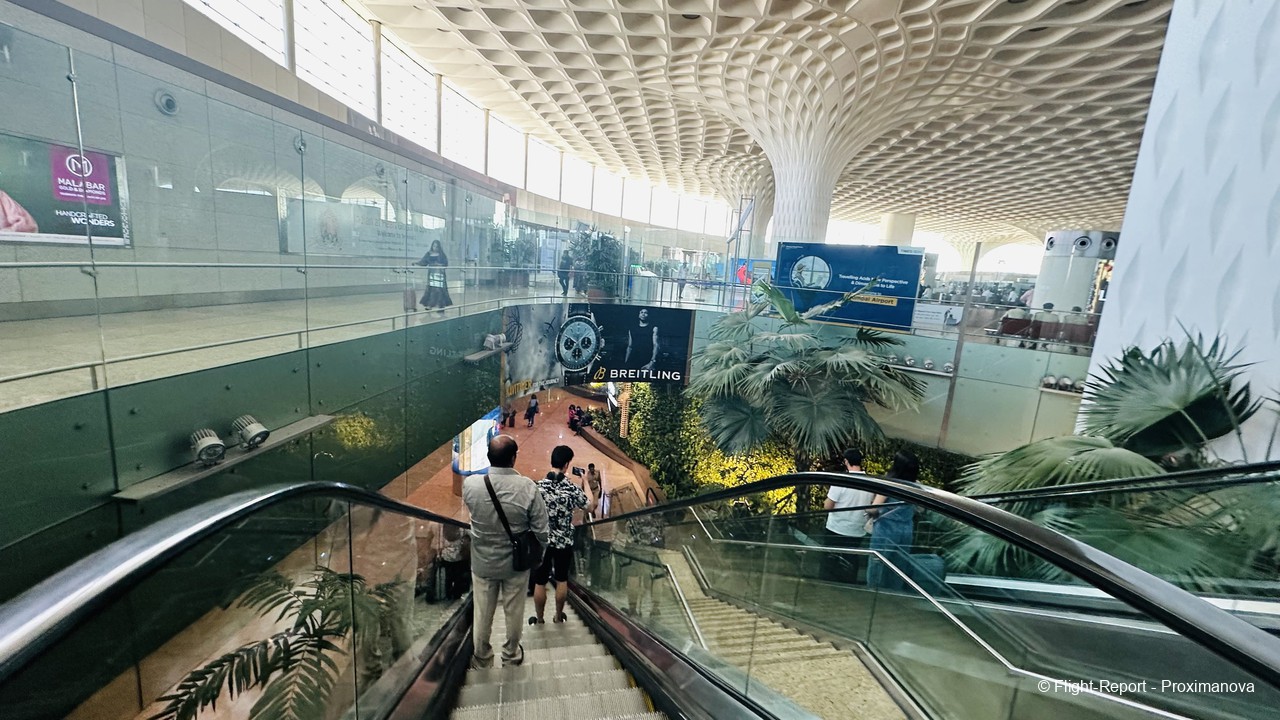
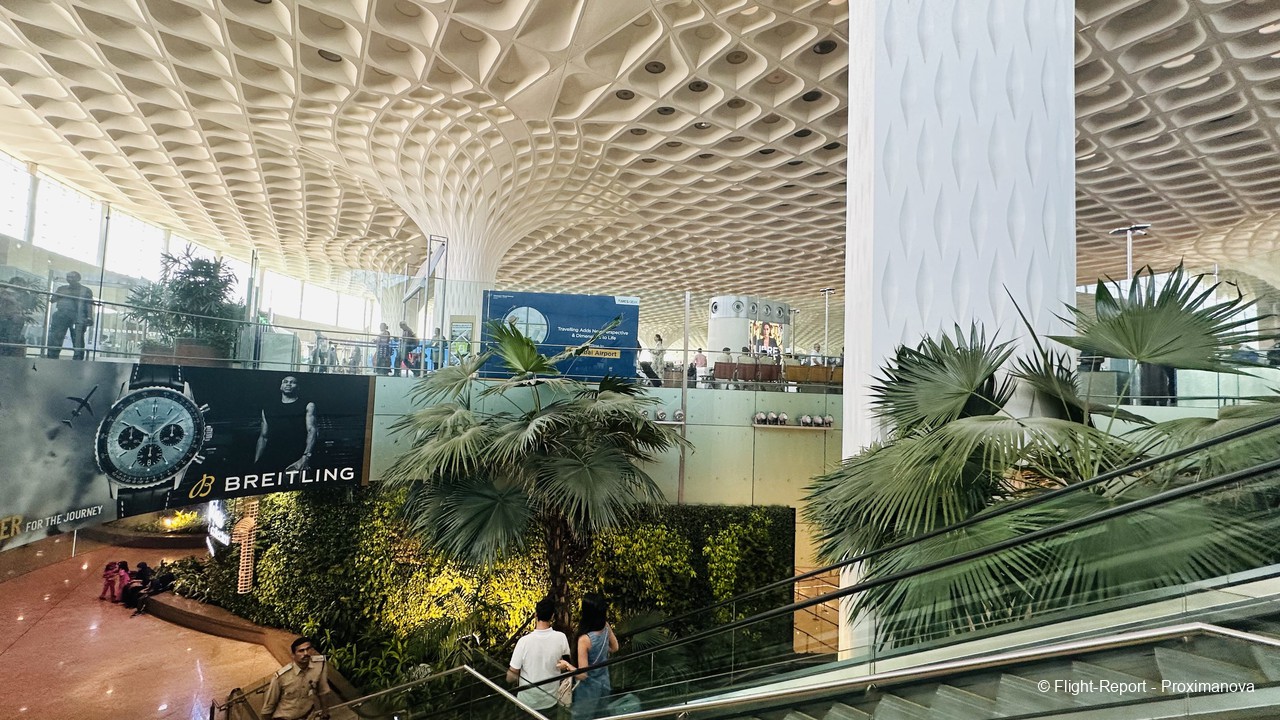
Retail therapy at a posh outlet mall in Andheri East — with lounges and gates
On reaching the lower floor I was surrounded by ads for tile and bathroom companies Kajaria and Hindware, with the latter occupying a landscaped wall for its Italian Collection, as well as one for jeweller Tanishq on the left.
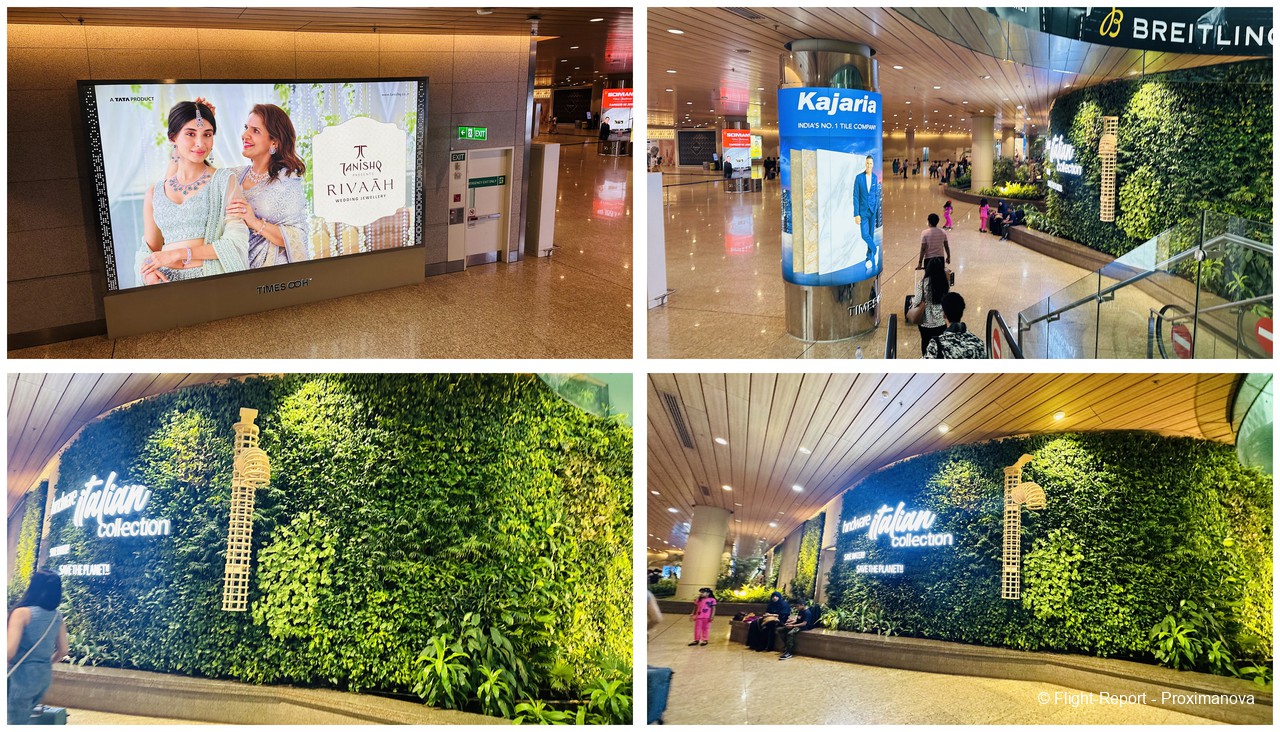
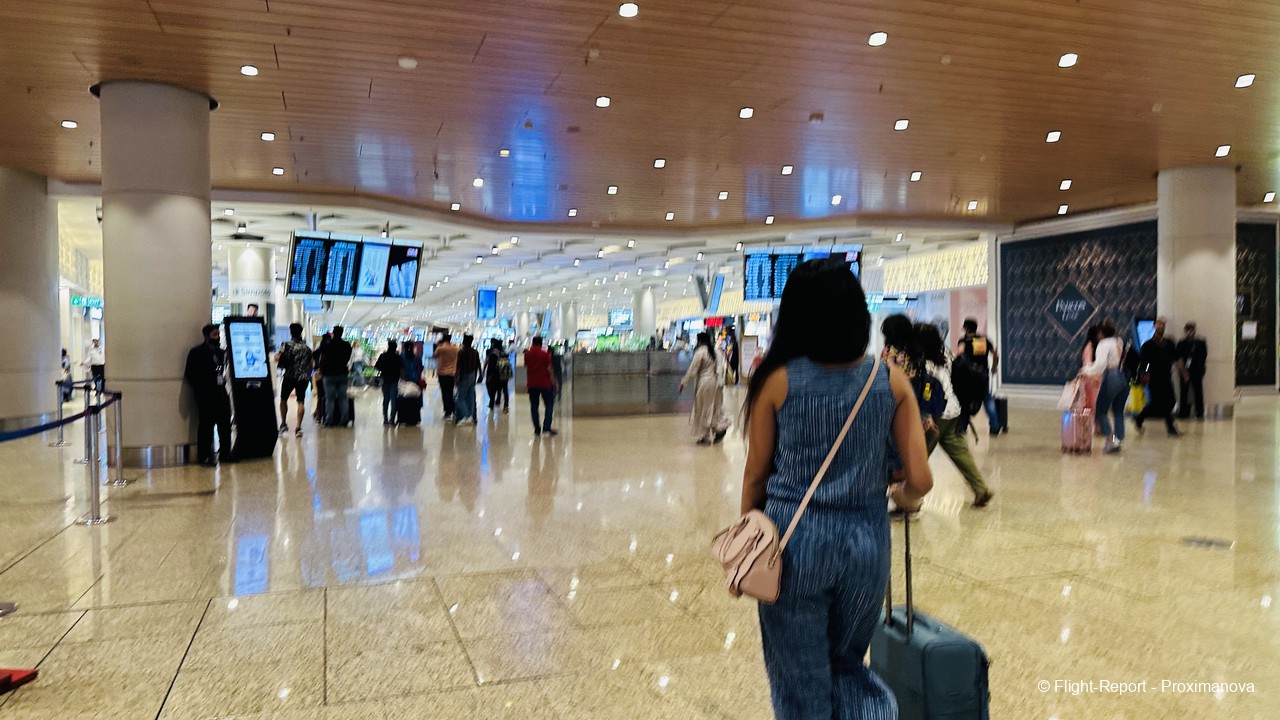
All around was an oasis of extravagant, spectacular décor with a smörgåsbord of restaurants, shops and other retail outlets of every kind, bringing a taste of a typical upscale Indian shopping mall to travellers from all shores. Too bad the images cannot be enlarged too much, but you can well see for yourself how BOM T2 ranks among the finest in the country and, in my opinion, the world — which is what BLR T2 is trying to leapfrog.
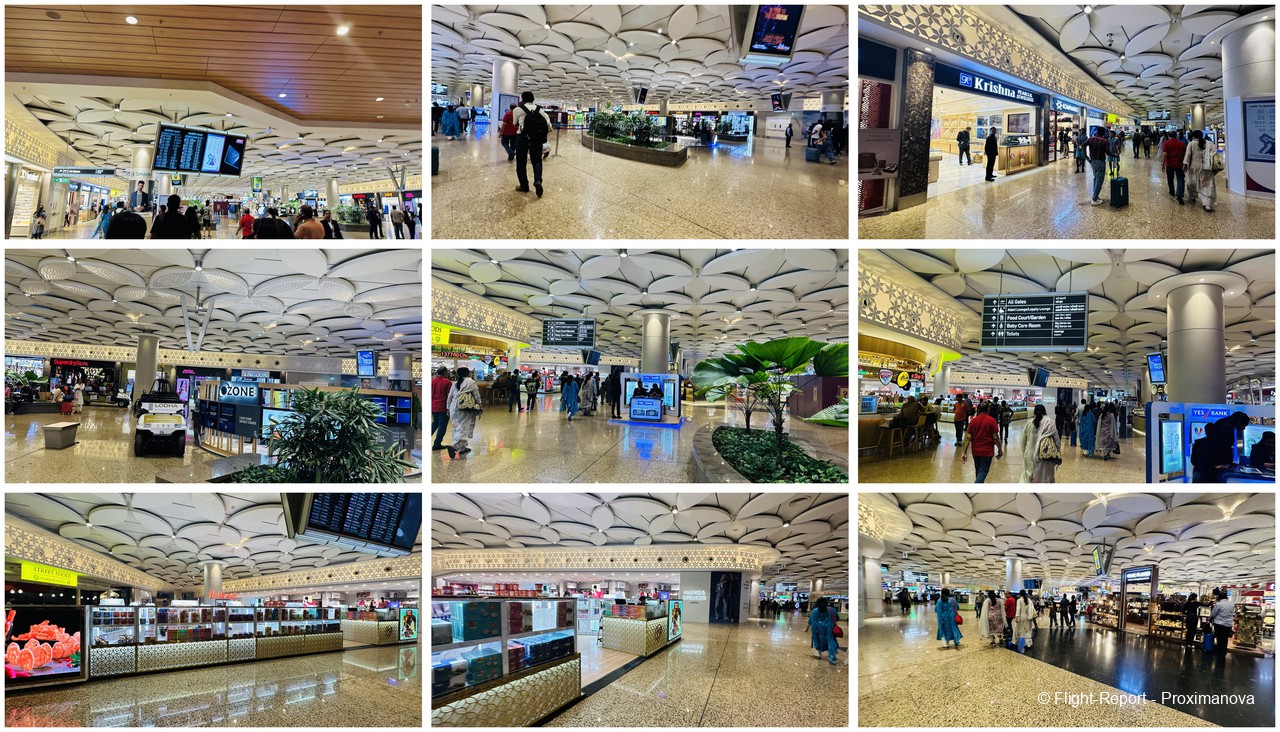
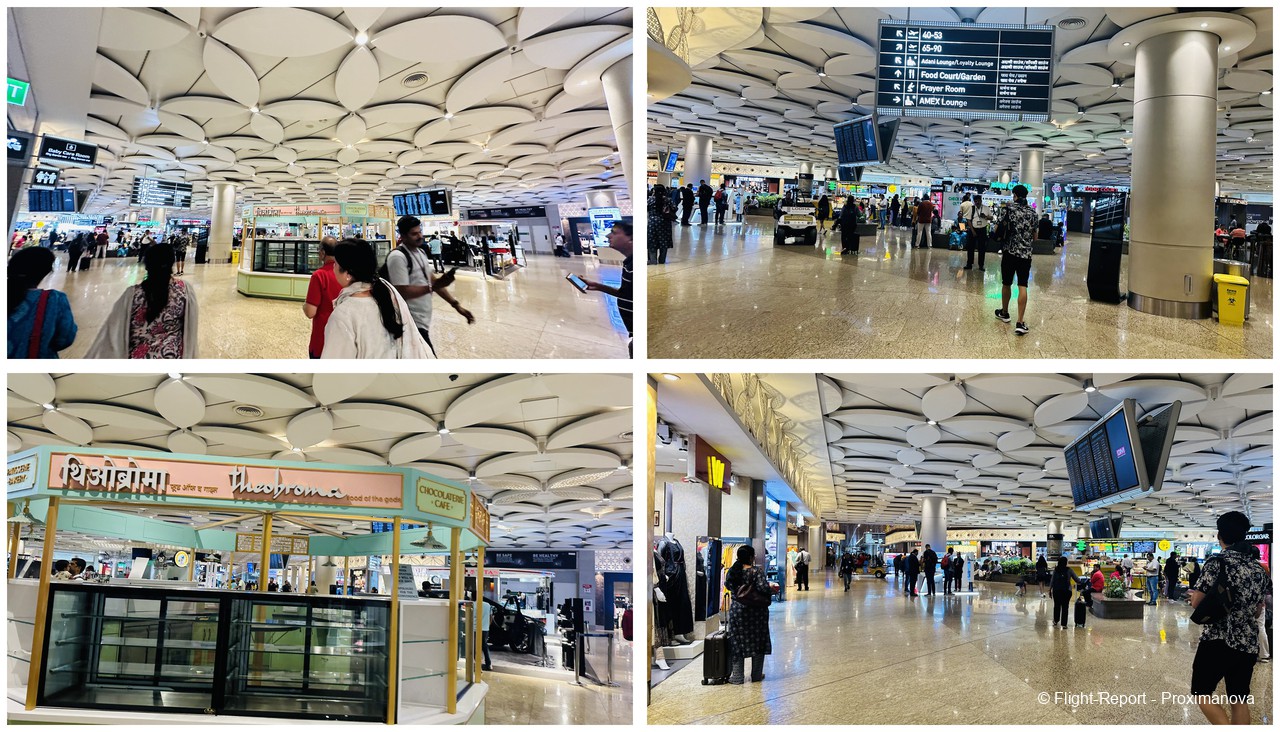
I found a bookstore called Bookscetra, which I had never scene — ahem, seen — before (Scene is Vistara’s corporate font!), and immediately decided to buy a couple of books that I had been reading for the past few weeks.
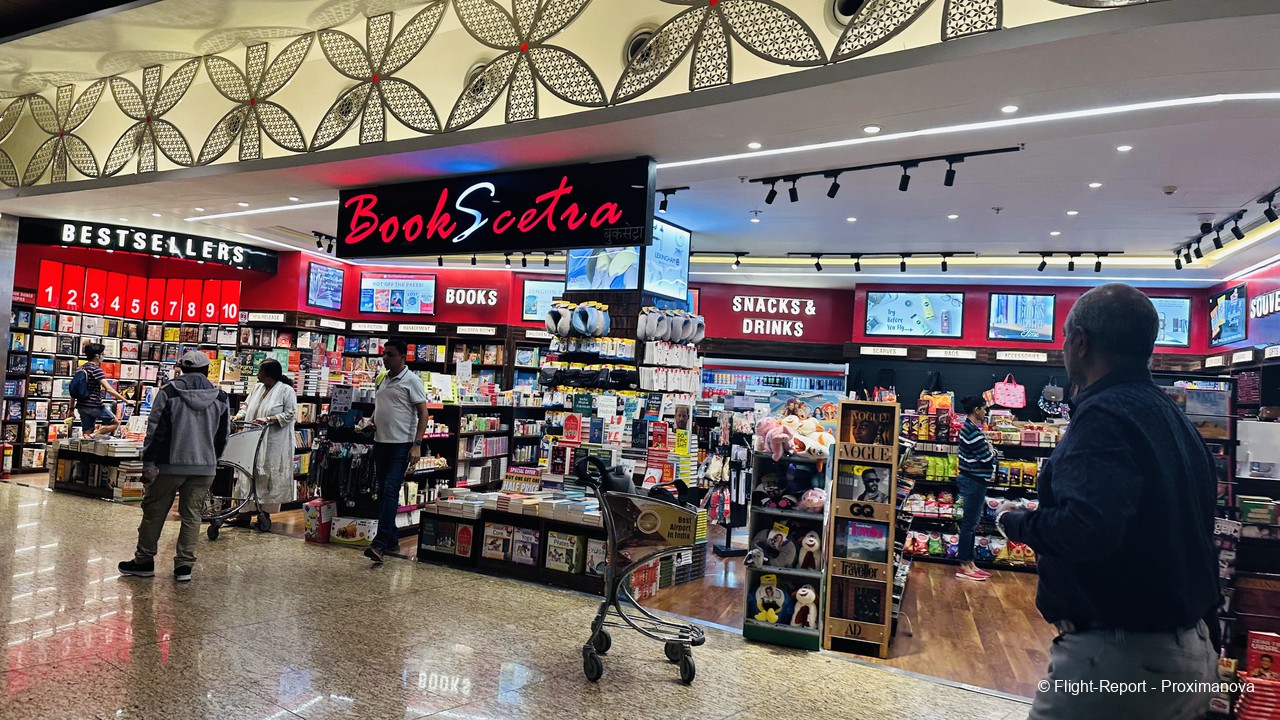
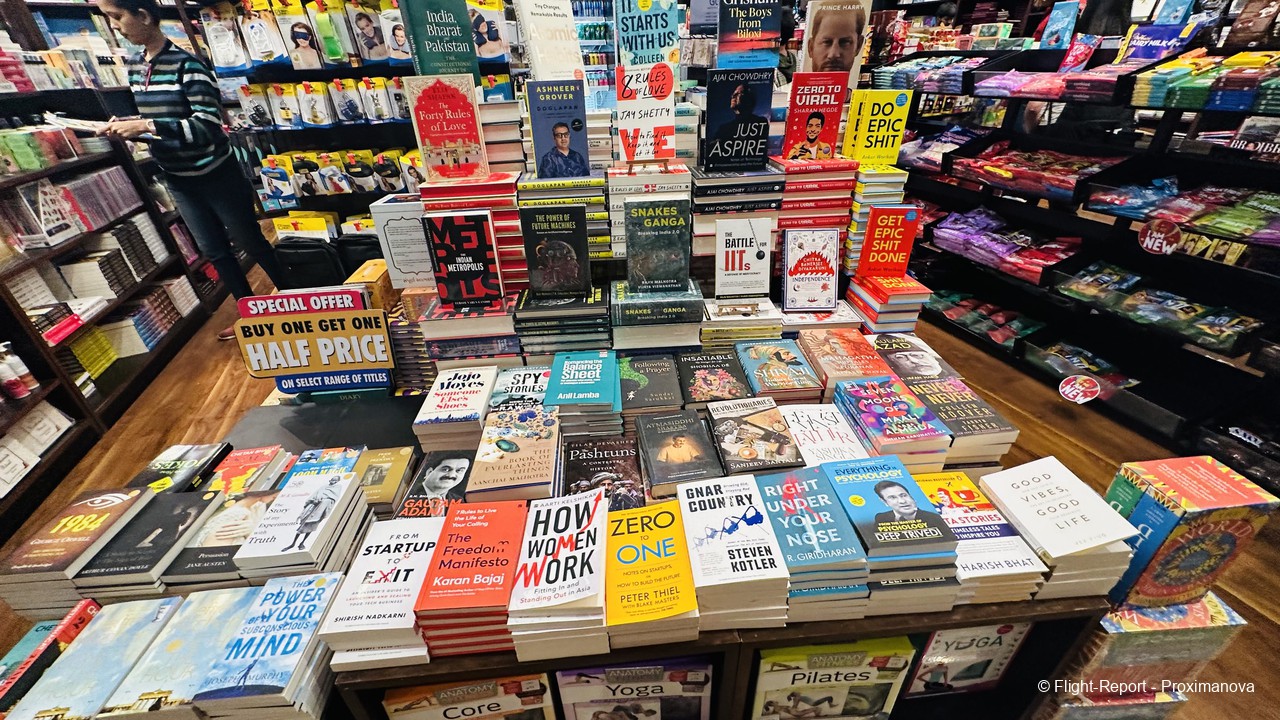
The bright, colourful covers were the gateway to eye-opening content: one was a window to the mind, and the other to the body — specifically those parts that should not be talked about.

The domestic departures at T2, as you’d expect, were dominated by IndiGo, Vistara, Air India and the odd SpiceJet flight, with the state-run Alliance Air (9I) barely present. Many other IndiGo flights use T1 instead, as do low-cost carriers Go First and the newcomer Akasa Air.

The food court had a sprawling view of the traffic on the tarmac, which few food courts can boast of.
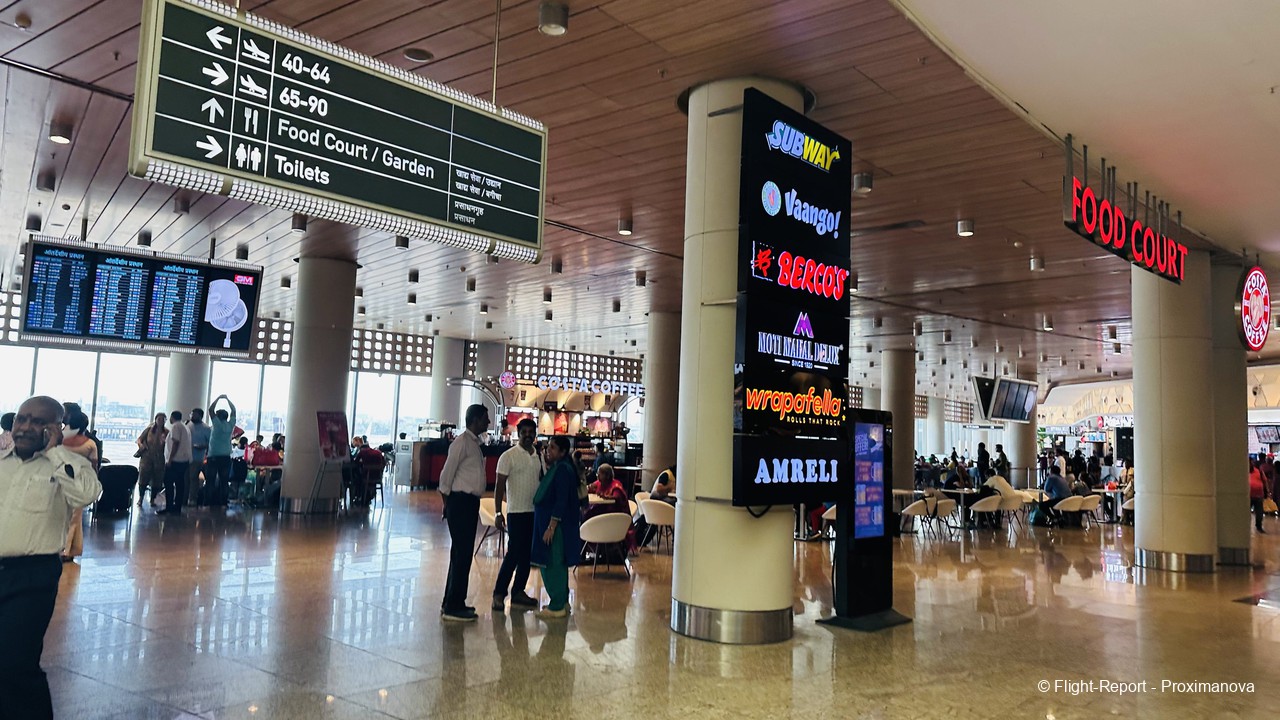
The one thing that detracted from the premium look and feel of the terminal was this accessories shop, which would be more apt for a low-end roadside setting.
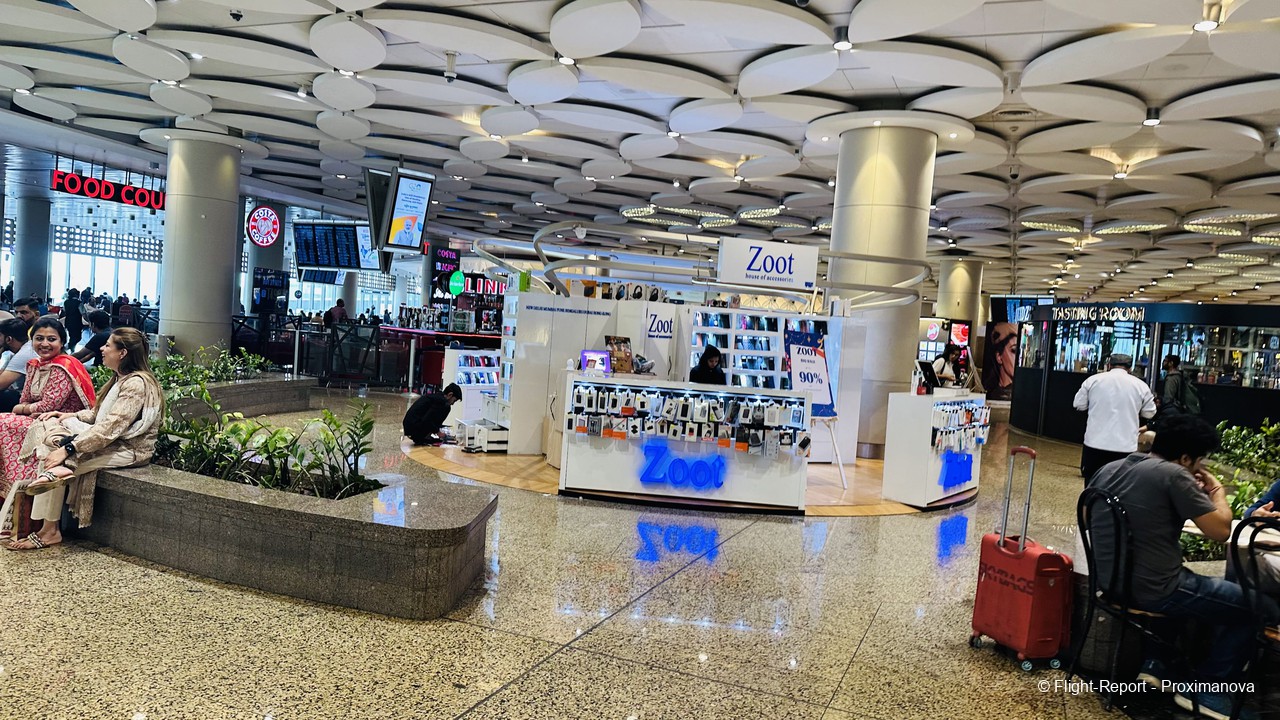
Having carried me from Singapore, VT-TVE was resting before her next mission to Dubai, the third consecutive day on the BOM–SIN–BOM–DXB–BOM rotation.
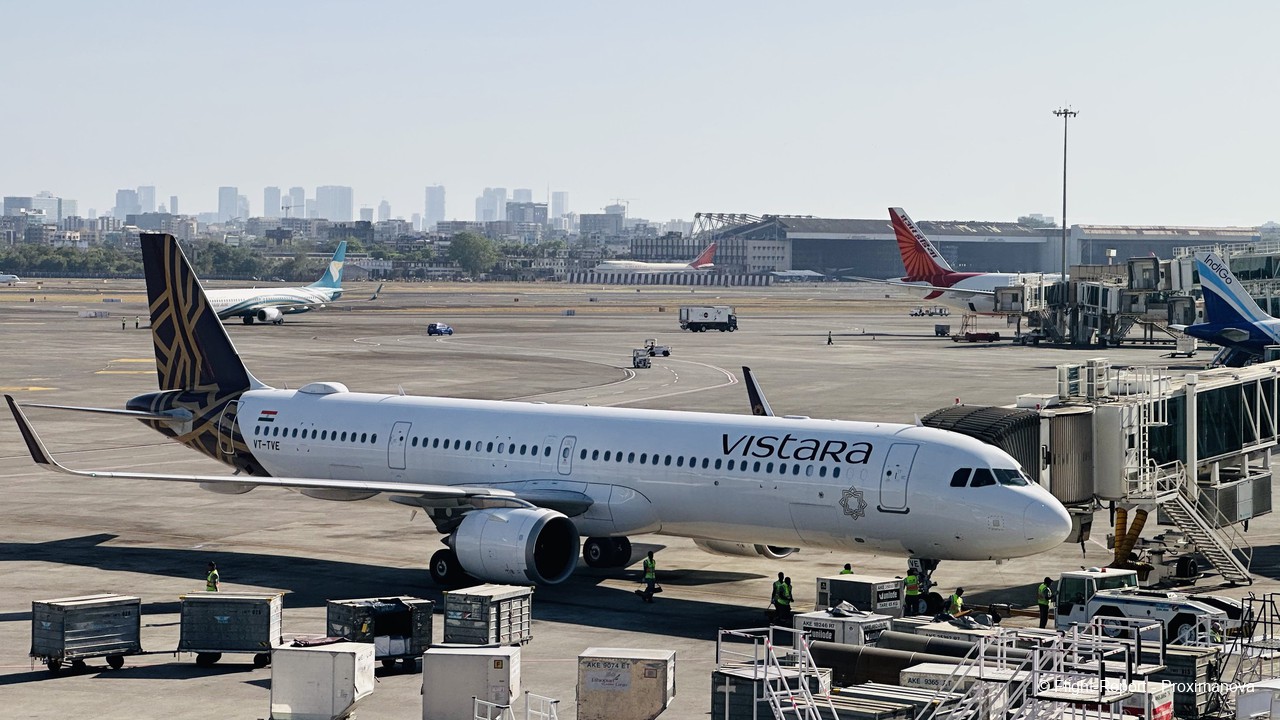
Meanwhile there was this very curious visitor from a Gulf country: not your typical wealthy monarchy but a war-torn republic, which like Syria never seems to catch a break. Yemenia operates four A320s plus a single A330-200, of which 7O-AFB had turned up from Aden, the country’s main international gateway, as IY854. The airline has a limited but regular network to international destinations across the Middle East and northern Africa, with Mumbai being the only one outside the region. You can well imagine the heaven-and-hell contrast for this flight’s passengers between war-stricken, rundown Aden and opulent, posh Mumbai!
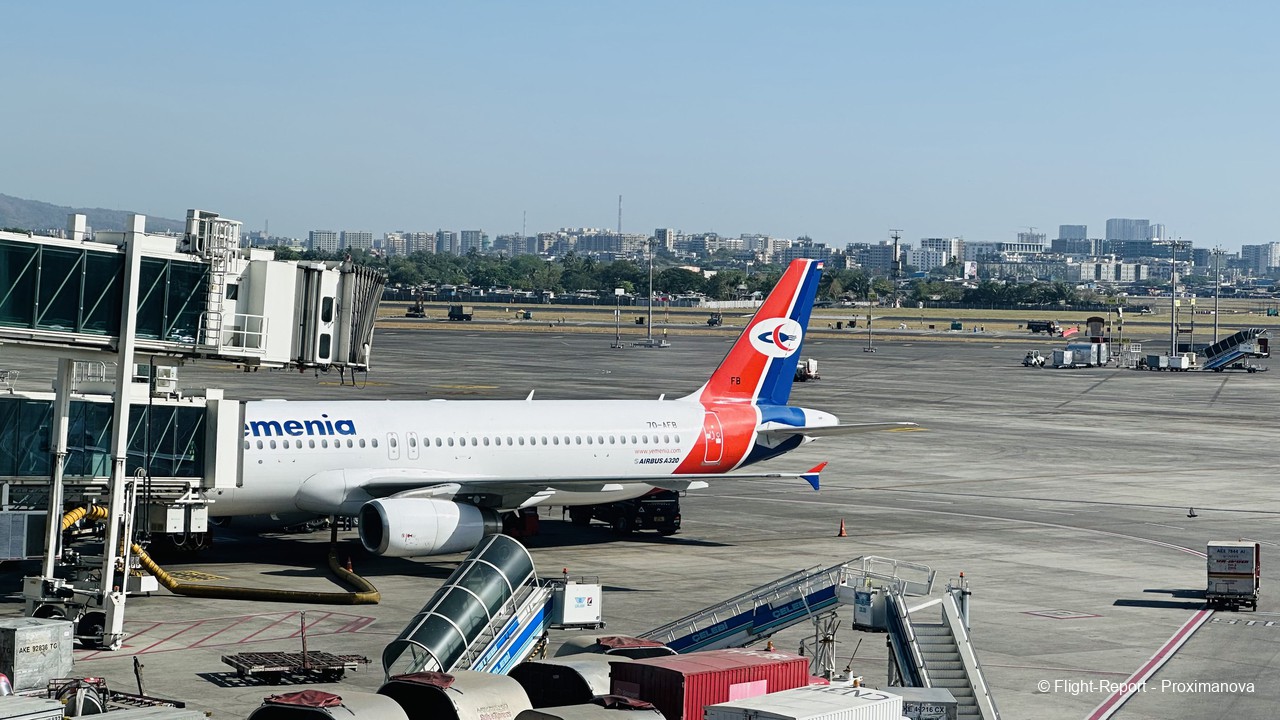
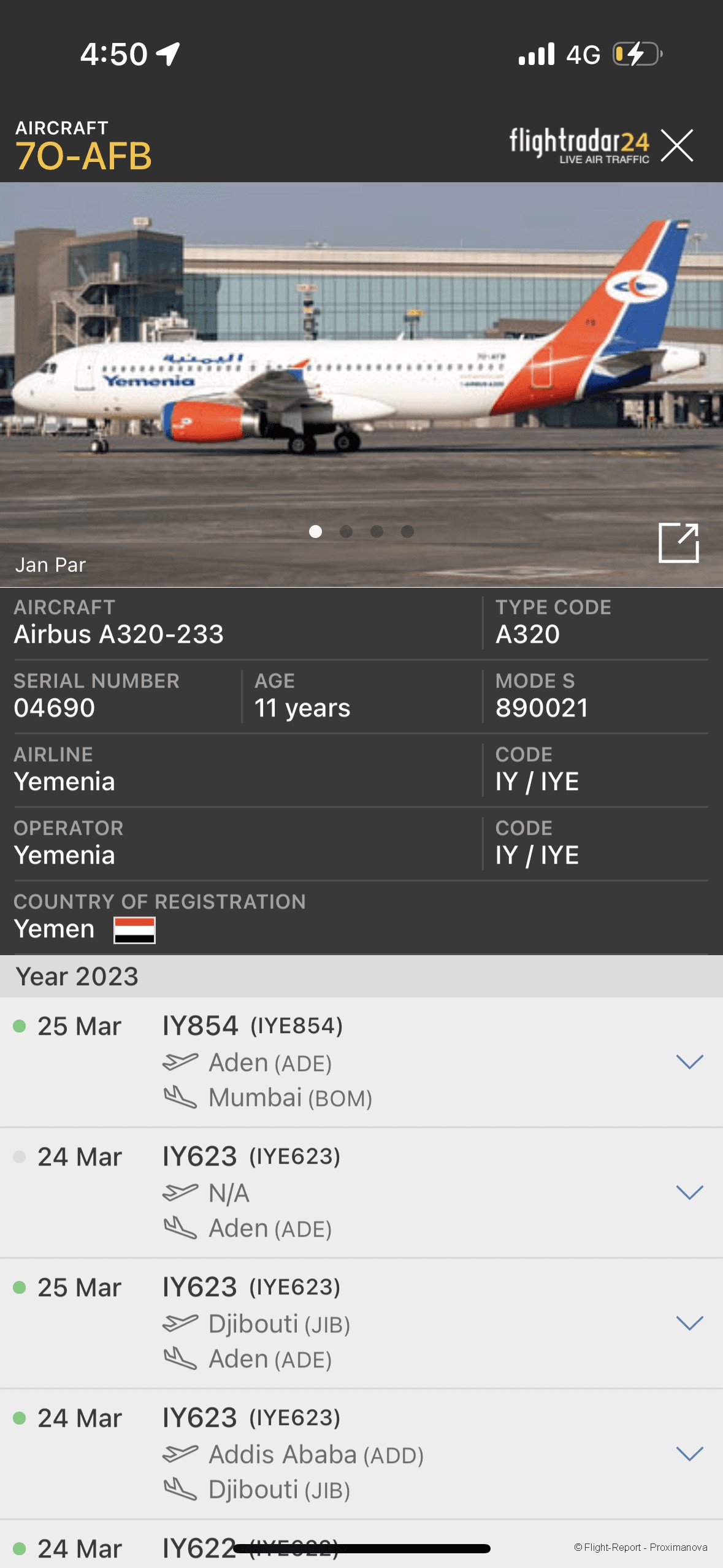
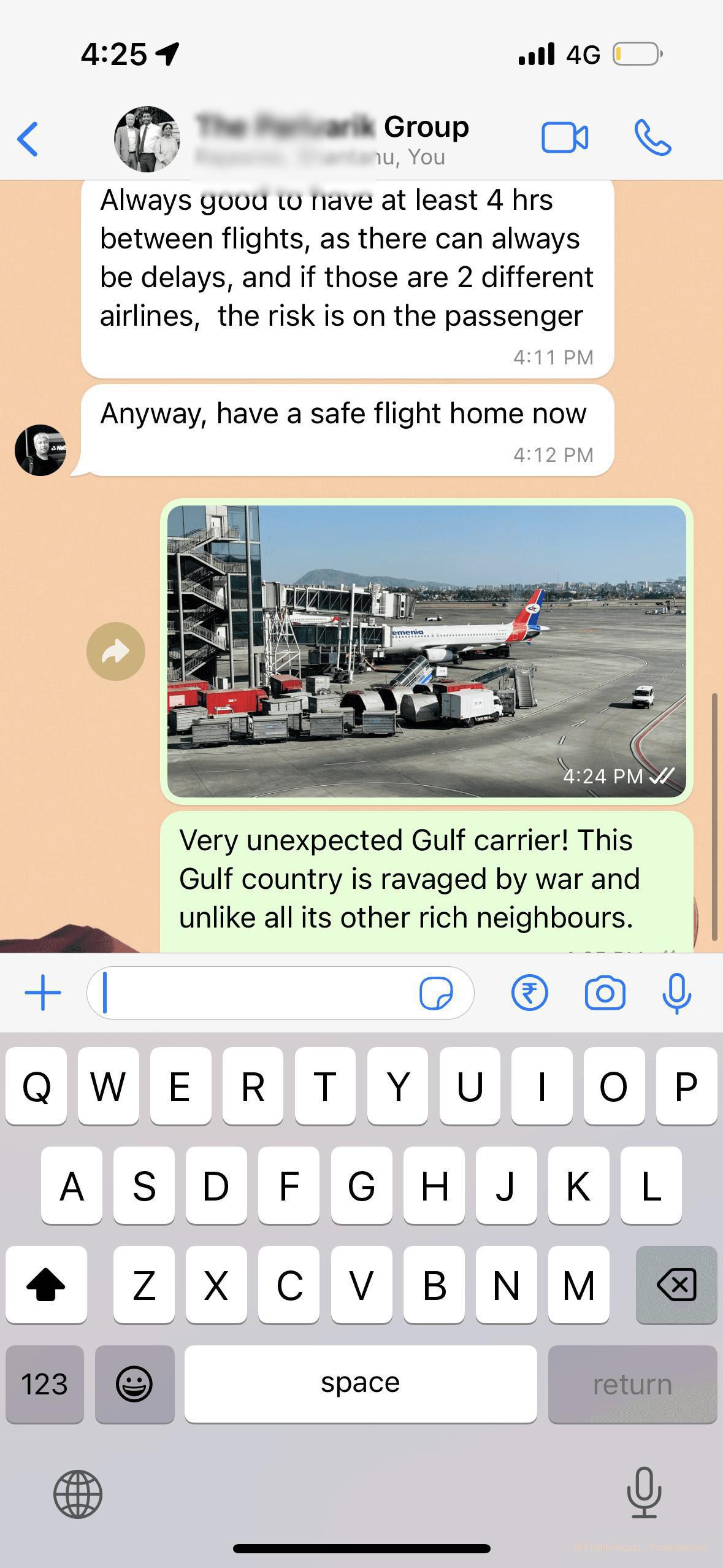
It, indeed, was the only one of the recent arrivals which didn’t have a VT registration. However, it was well in line with all the others in terms of manufacturer, which were almost always from the A320 family (not counting one helicopter) — save for VT-TGE, Vistara’s only other 737 left, me having caught VT-TGB on the way to the immigration hall.
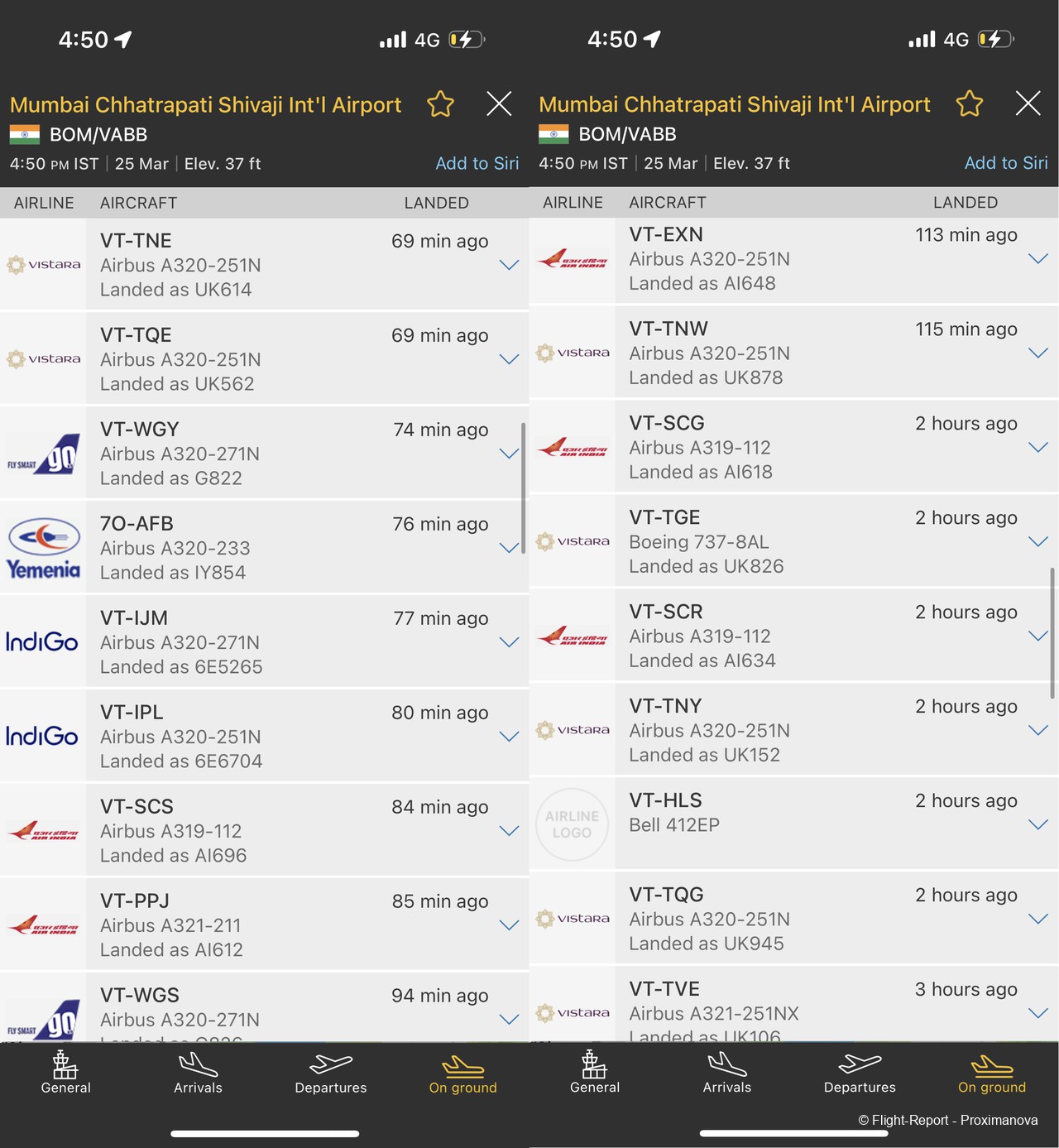
More colourful, chic cafés that would be as much at home on the streets of downtown Colaba or Bandra as in a major international airport.
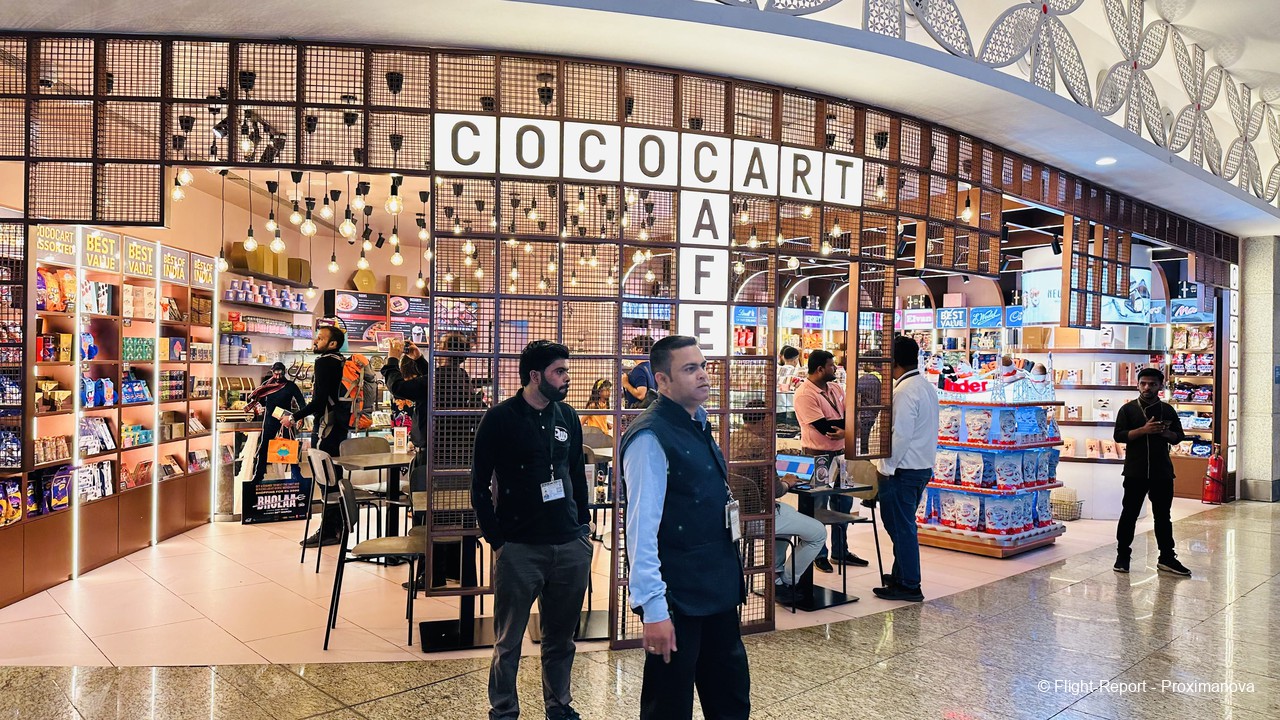
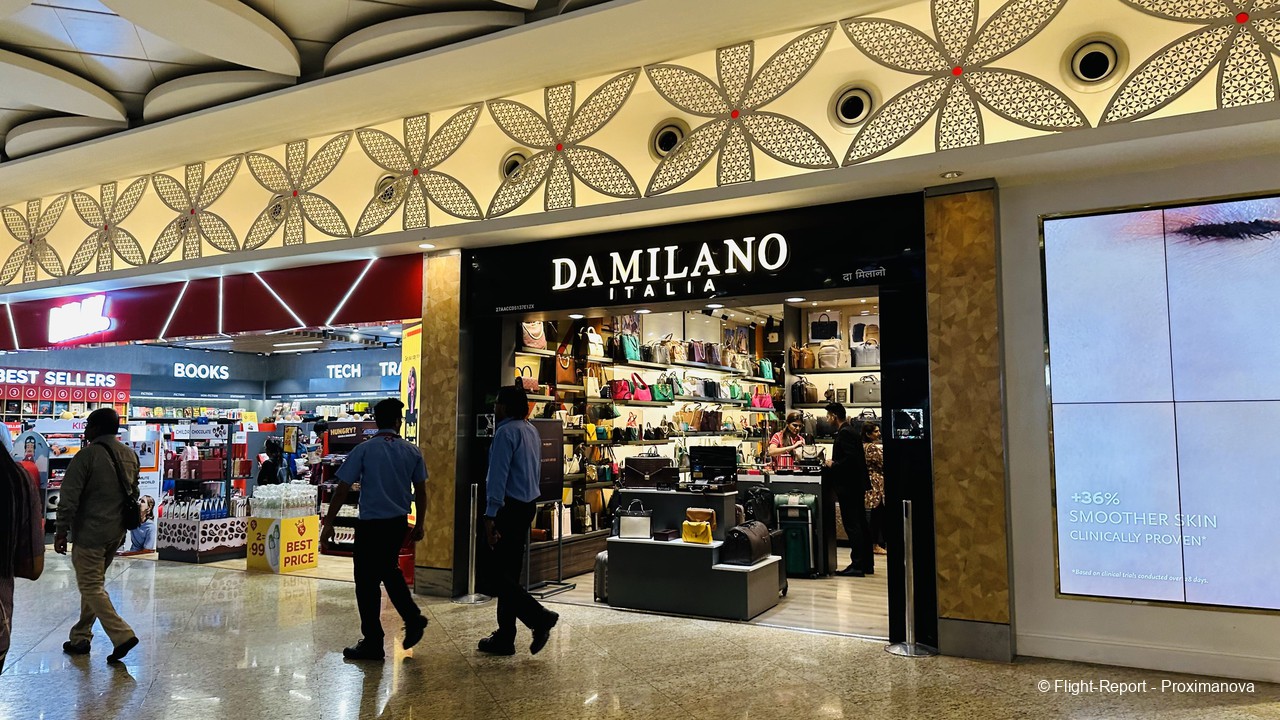
A broader view of the stalls making up the central section of the space.


Soon enough I headed to the gate, with ornate Indian architecture paving the corridor on one side…
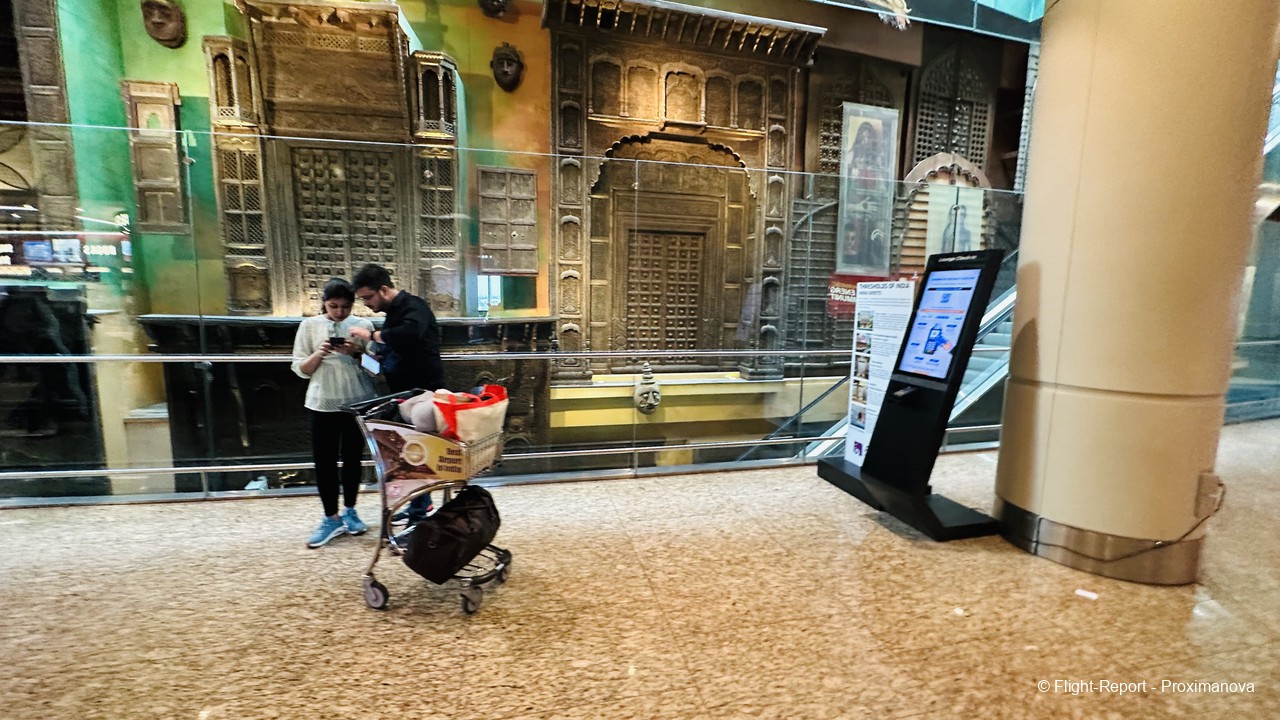
…and some strategically placed advertisements on the other.
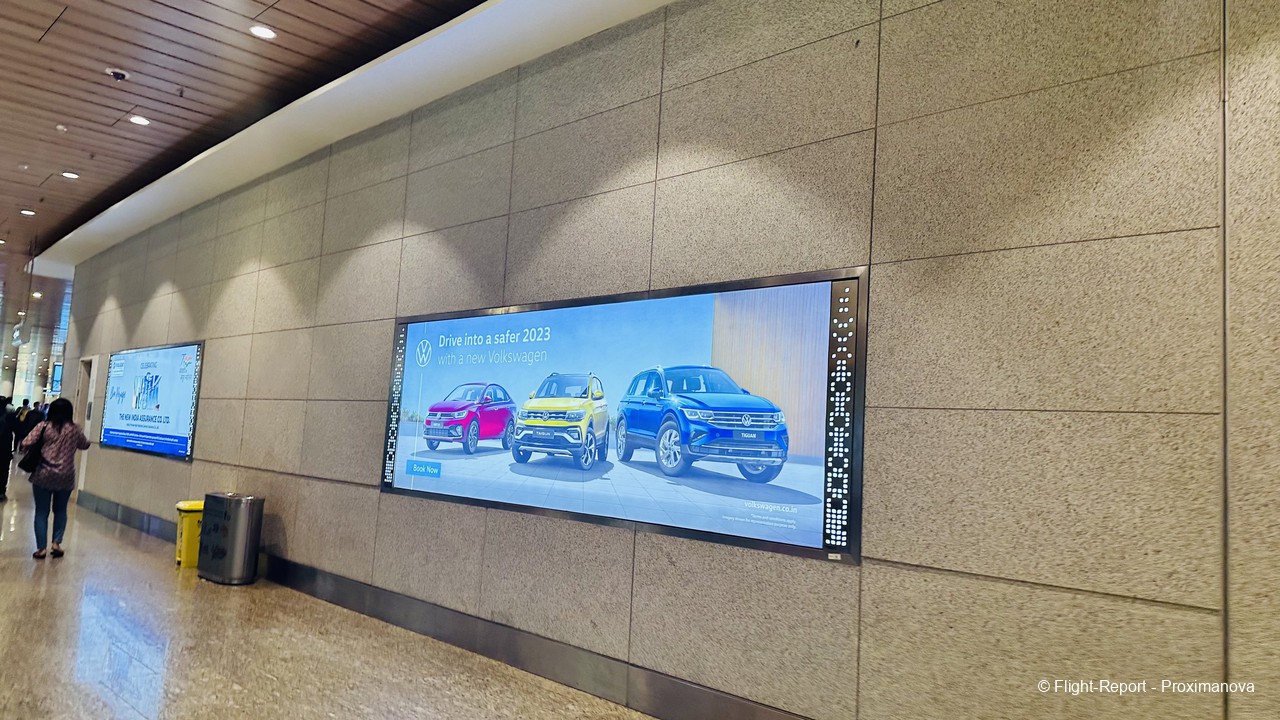
Out the window was the typical view of AI and IndiGo planes, with no exciting distractions apart from the Yemeni visitor.
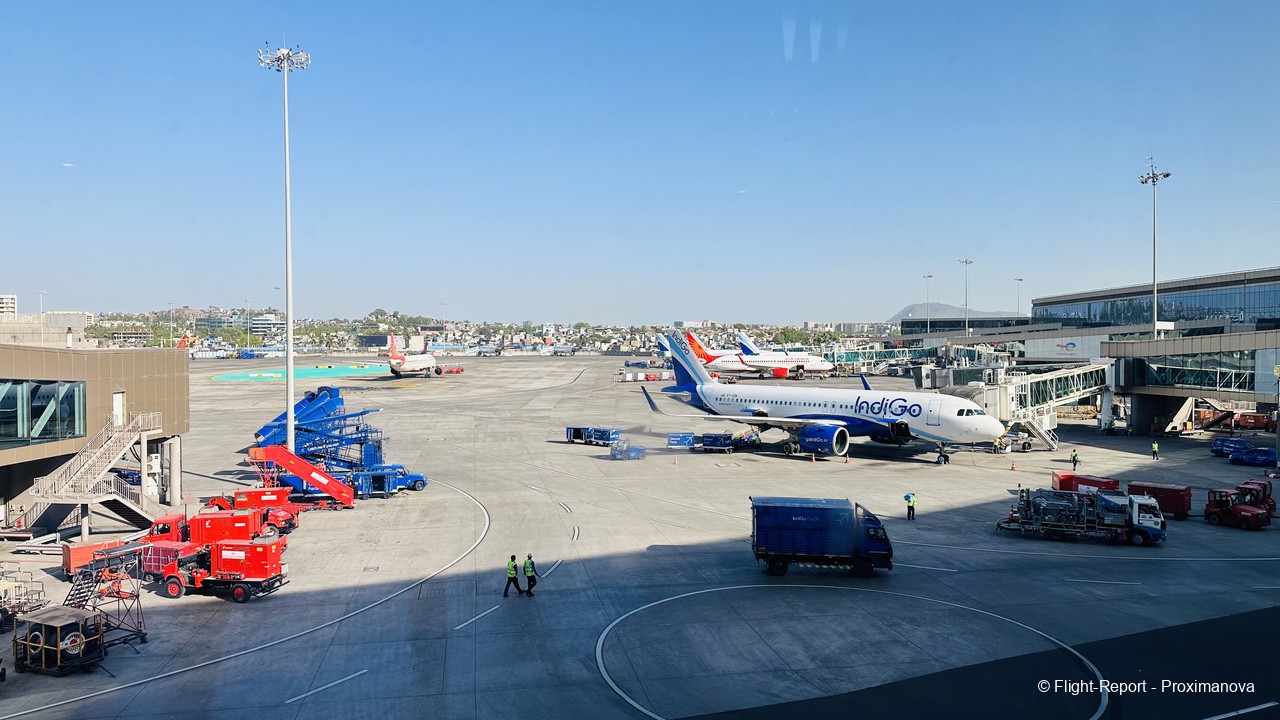
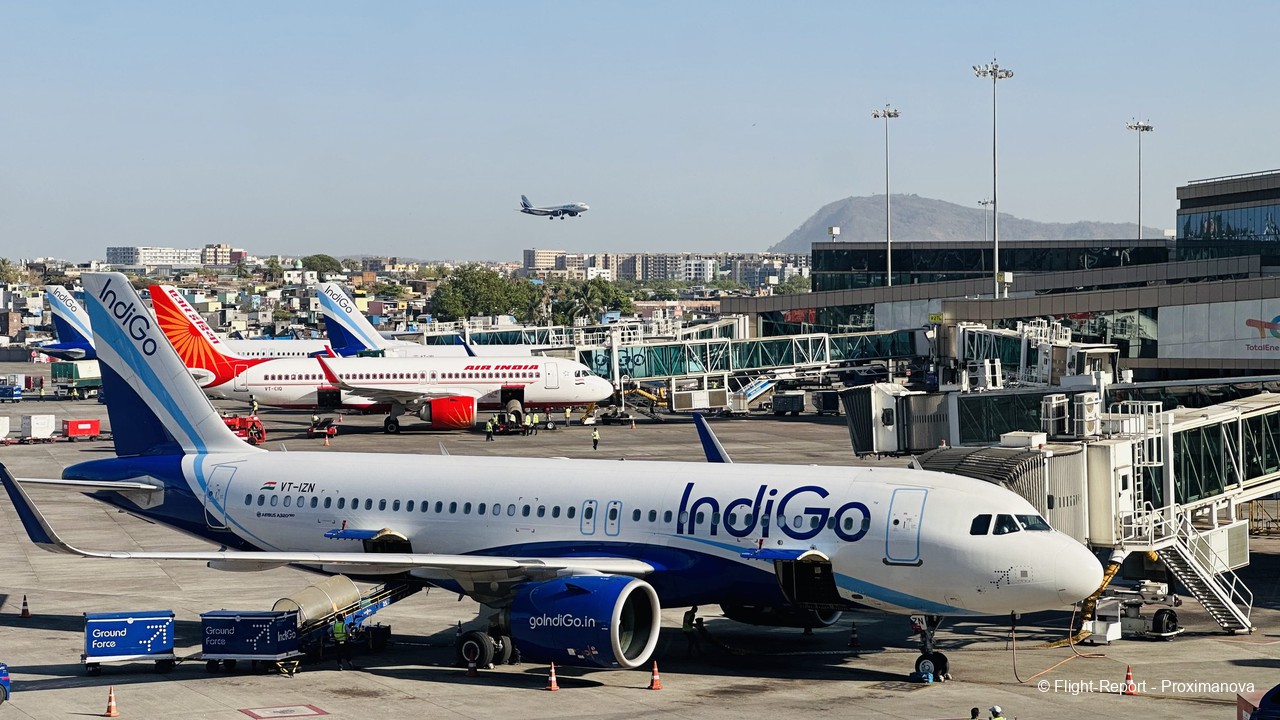
More small eateries popped up every now and then, with exquisite art and design at every turn of the head.
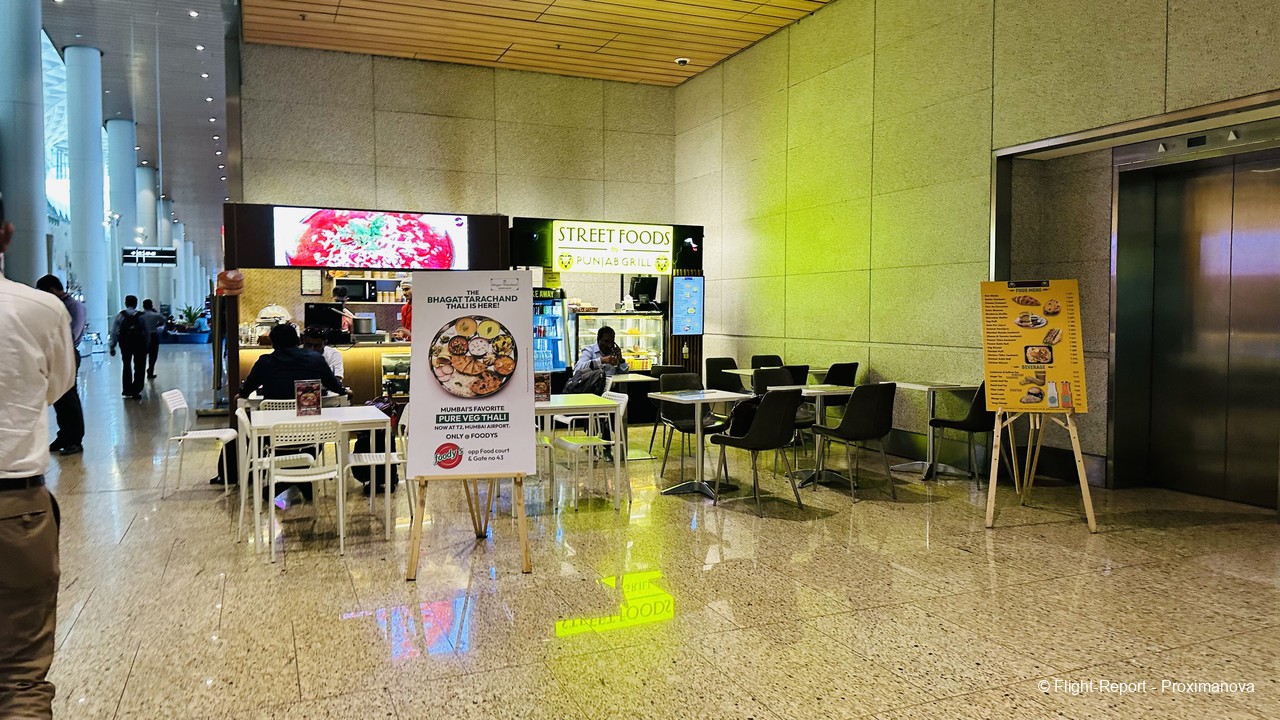

People continued to lounge about, either by the windows…
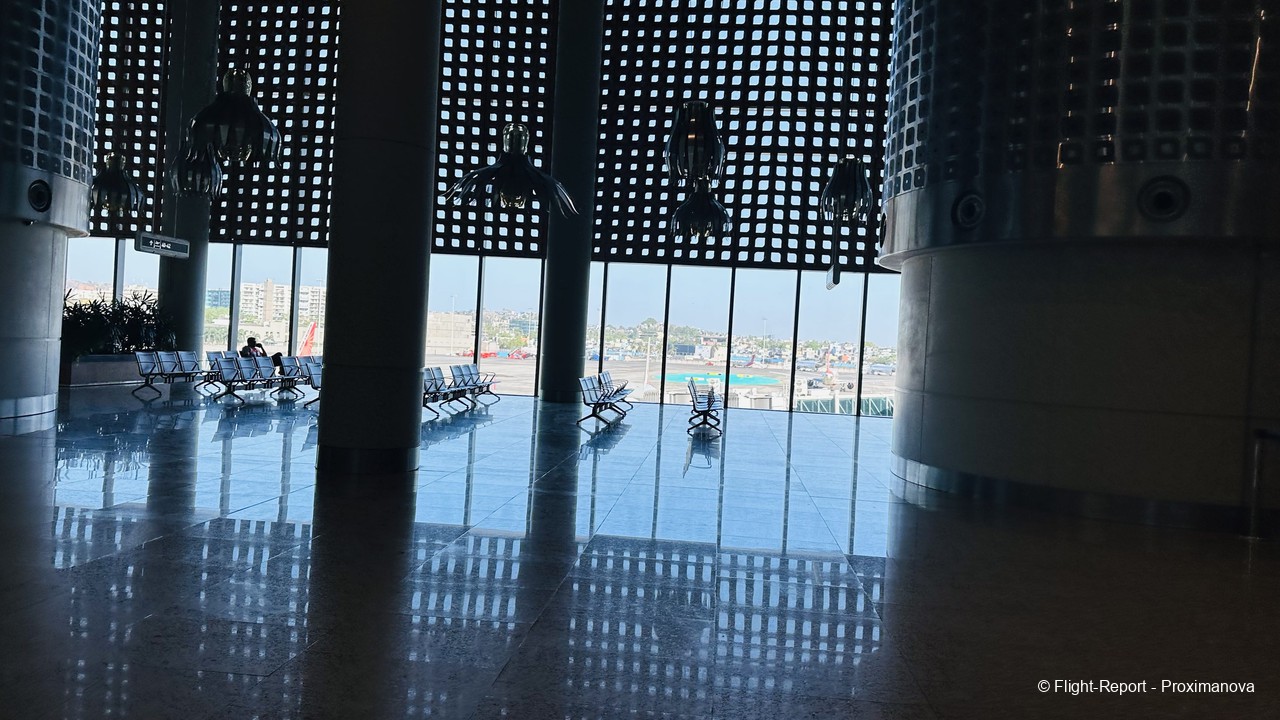
…or on the couches by the corridor, with intricate paintings above, making for one of the most picturesque terminals I have ever visited, and one reflective of the rich culture and history of Bombay or Mumbai.

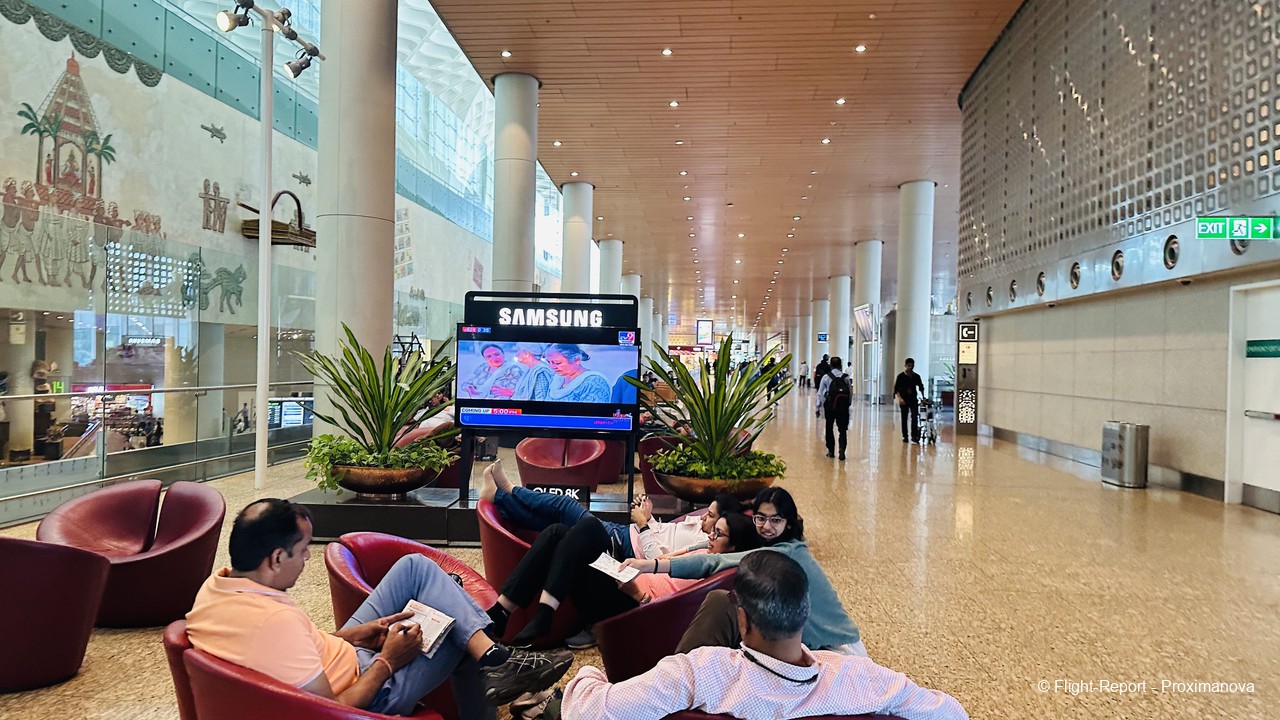
At length I reached Gate 42, with two Air India flights, to Chennai and Thiruvananthapuram/Trivandrum scheduled for departure. The gate was as beautiful as the rest, with trees suspended from the ceiling, a landscaped wall and the pixellated information display; I have chosen this as the cover image for the report.
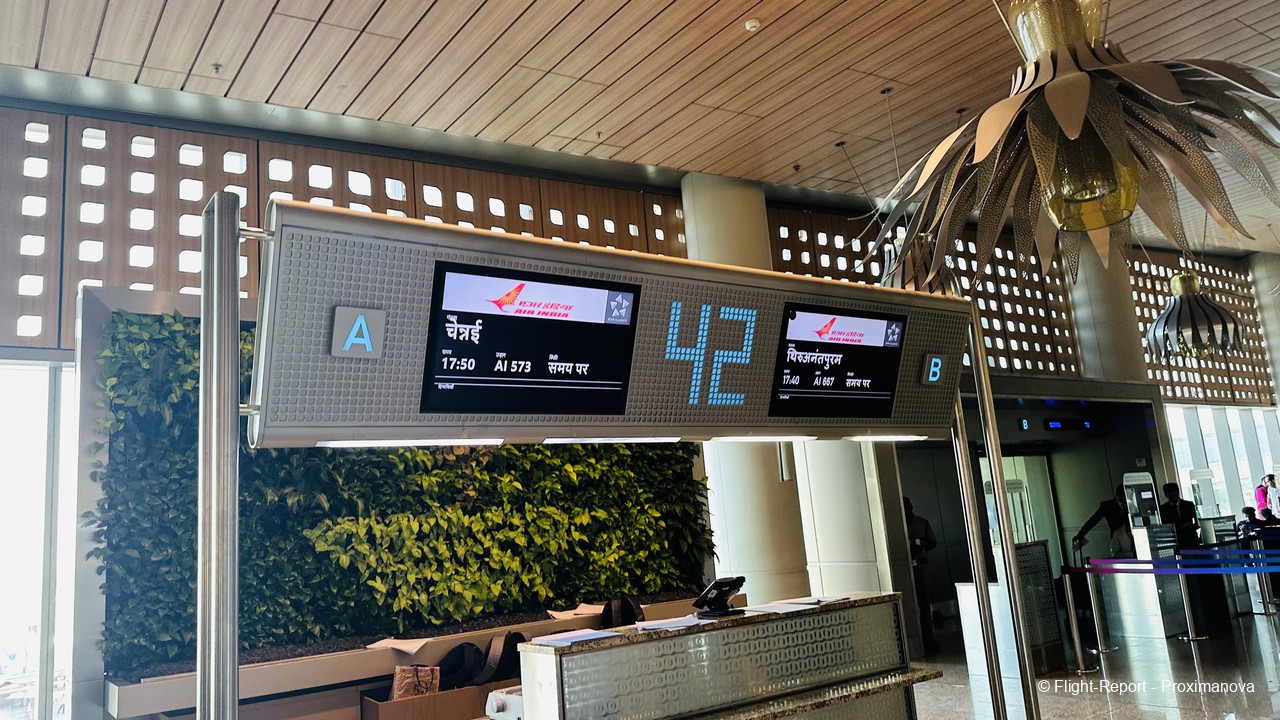
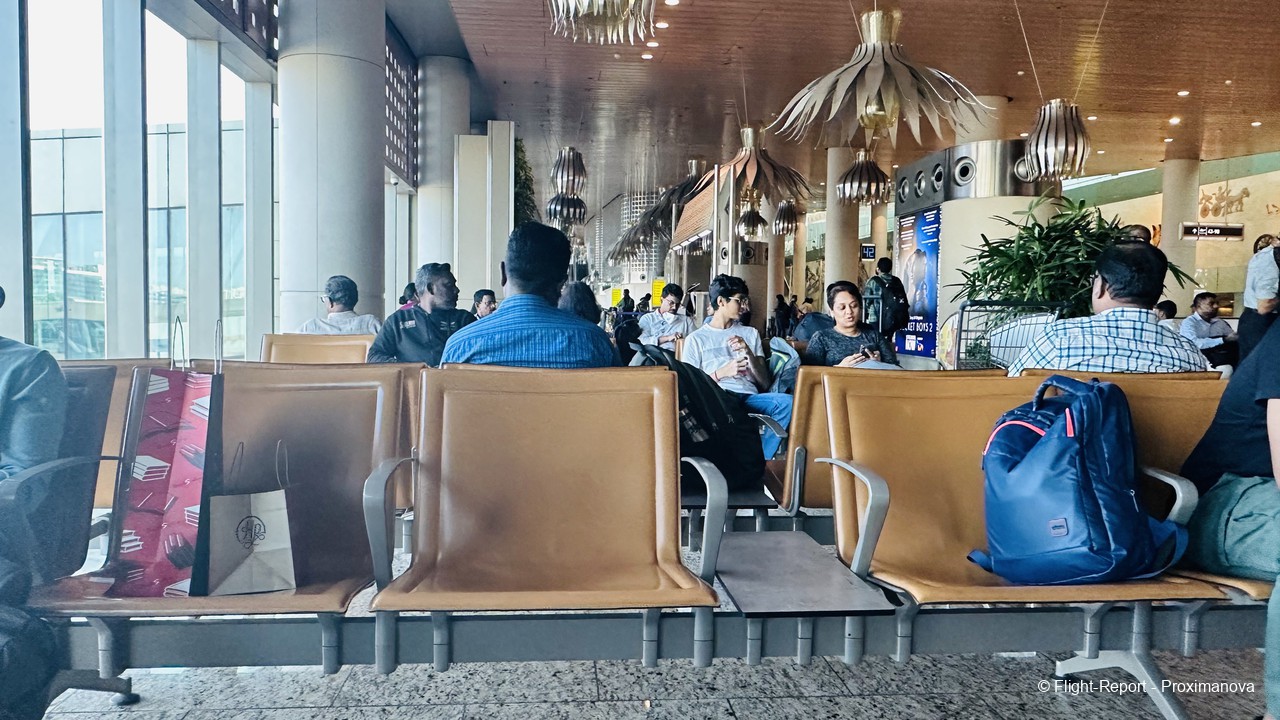
In my hand was bhelpuri, a chaat (Indian street snack), along with a cup of lassi, a sweet refresher.

The television was playing news coverage of the on-the-run fugitive Amritpal Singh, who was caught after a month. The channel, TV9 Bharatvarsh, had no shame whatsoever in revealing his passport number for millions of viewers!
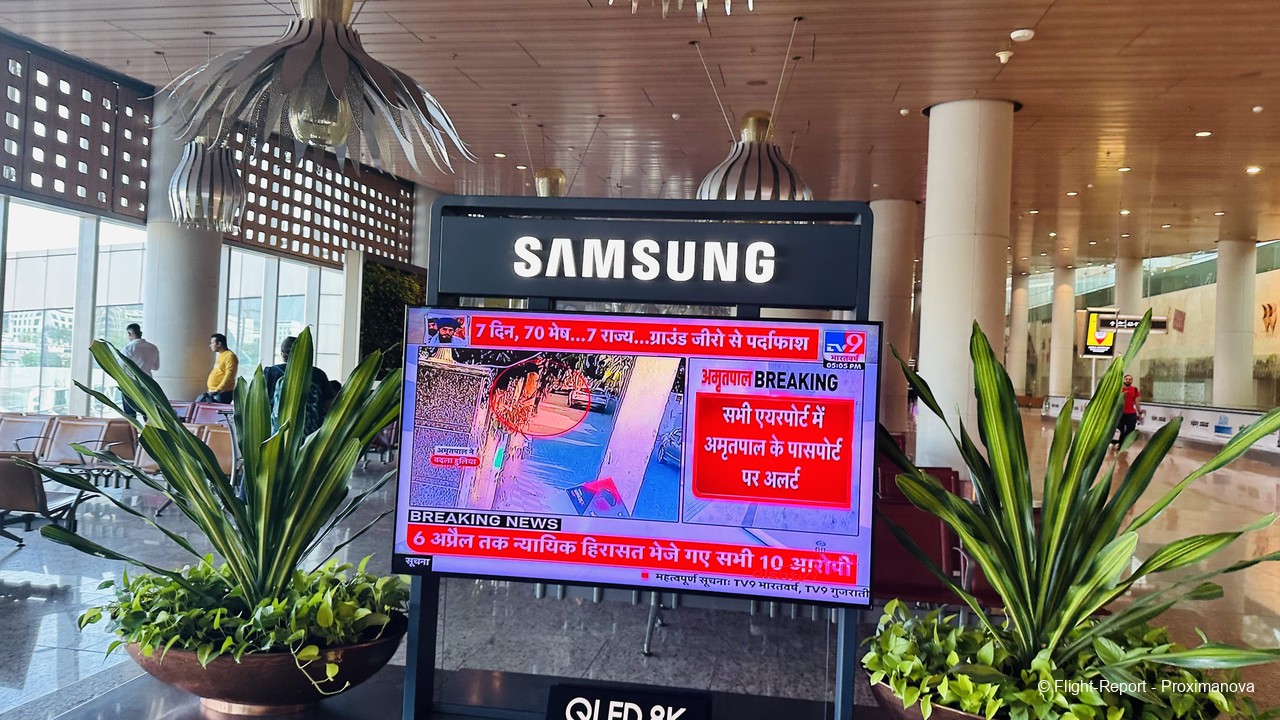
There she was: I checked the nosewheel of our A319, and it read ‘CR’, indicating VT-SCR, from a 2009 vintage and therefore just into her teenage years. AI’s last A319, VT-SCX, and its last A321ceo, VT-PPX, were delivered in January 2010, which shows how much the A319s and A321ceos are getting on with age. All of them are in their teens now — though I consider one aircraft year to be equivalent to three human years, so a 13-year-old plane like this is as good a 39-year-old human!
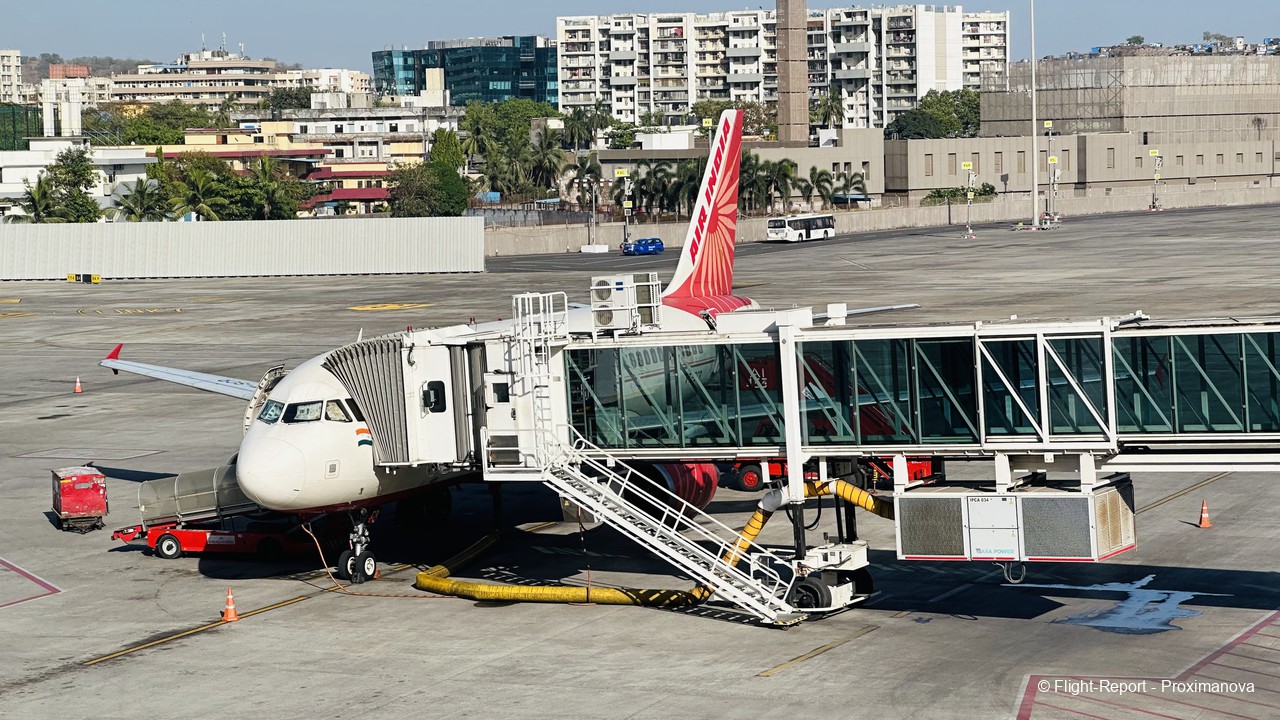
If it had been VT-SCT instead of VT-SCR, there would have been another Yemeni connection: SCT is the airport code of the remote island of Socotra, far removed from the conflict on the mainland, with unique endemic flora and fauna. Getting there is difficult, however: the only way nowadays is a once-weekly flight from Aden, which makes a technical stop at the small town of Riyan or Mukalla (RIY), there being no more international flight from Cairo via Seiyun (GXF) as there used to be.
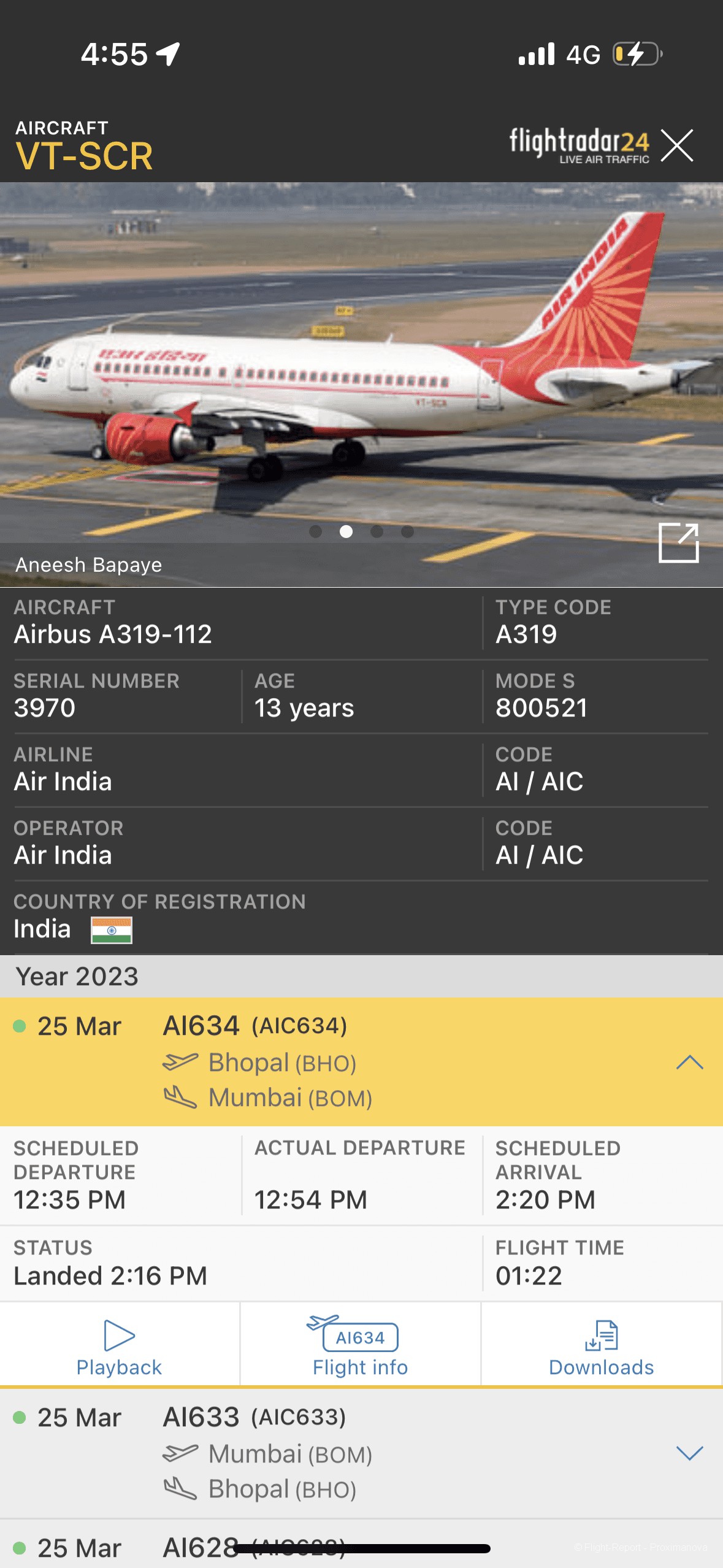
The TotalEnergies ad on the jetbridge made for a contrast with the buildings in the background. Indeed, Mumbai is blessed to have an airport a stone’s throw from important city attractions, though this has come at the expense of expandability, and the new Navi Mumbai Airport is urgently required.
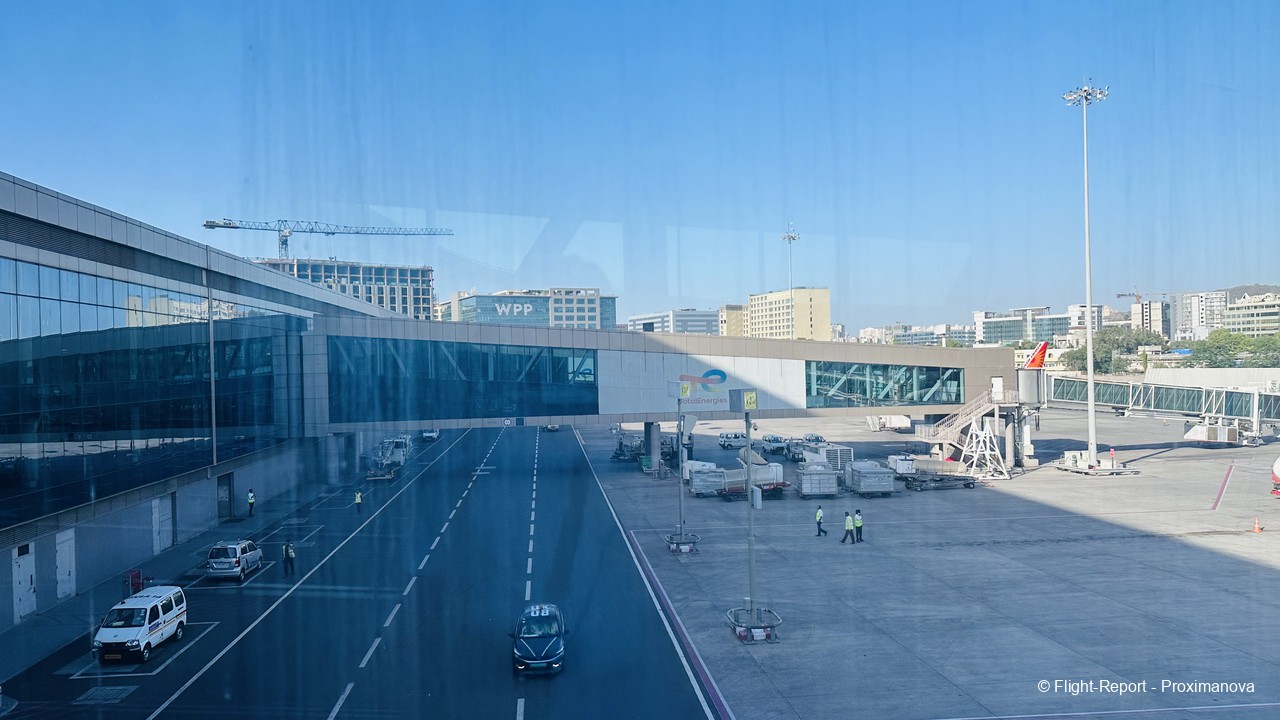
Passengers had started to line up for AI573, and I joined in, making my way on the jetbridge.
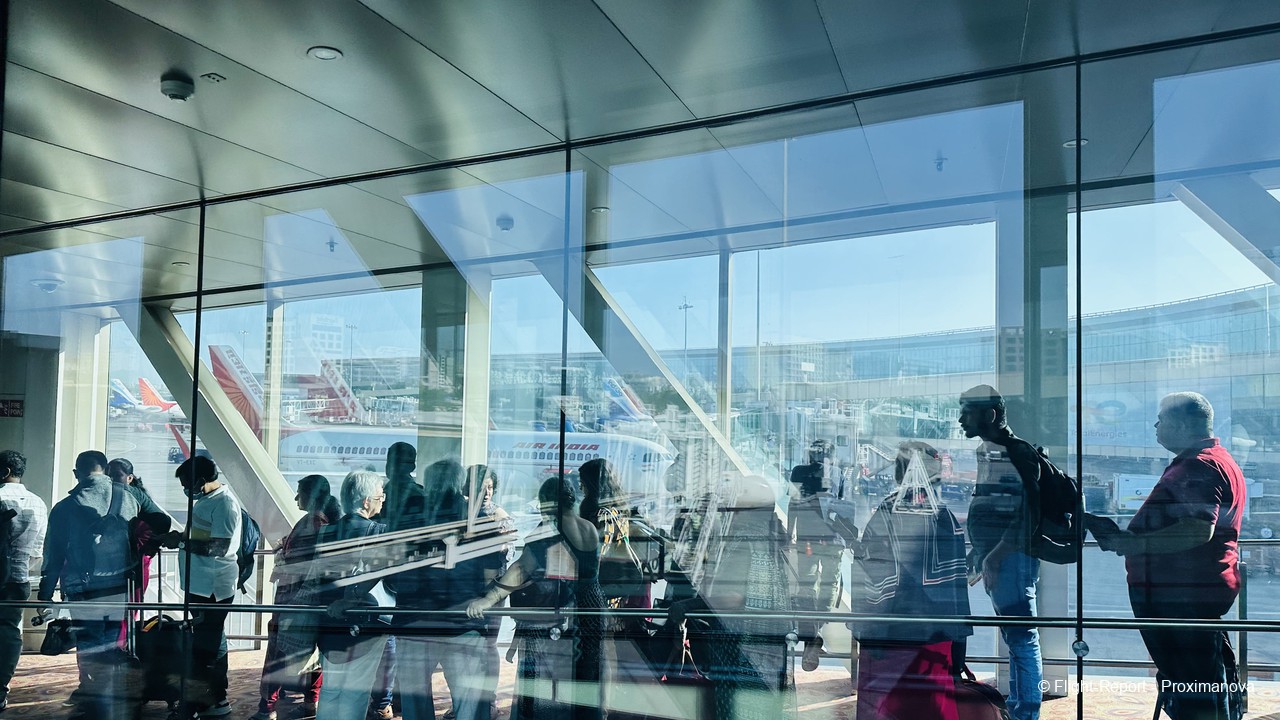
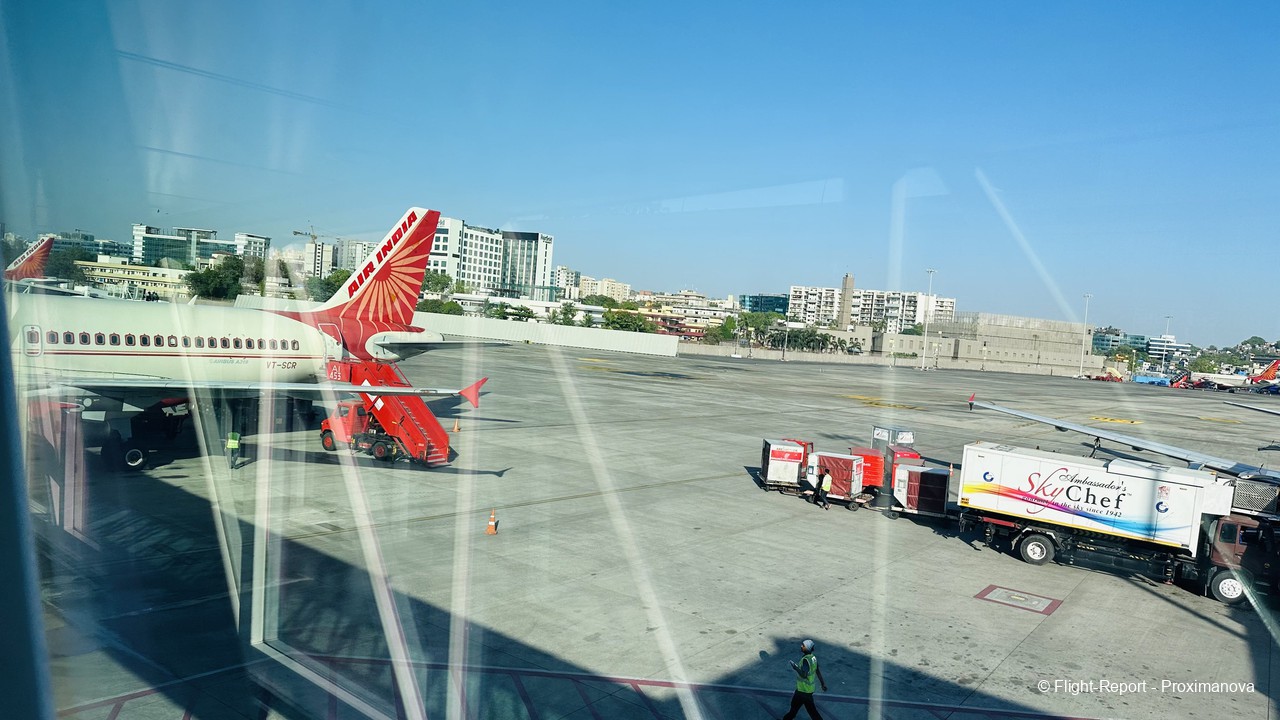
Now I was headed towards my first A319, bringing an end to my longer-than-expected but ultimately fruitful and enjoyable stay at Mumbai.
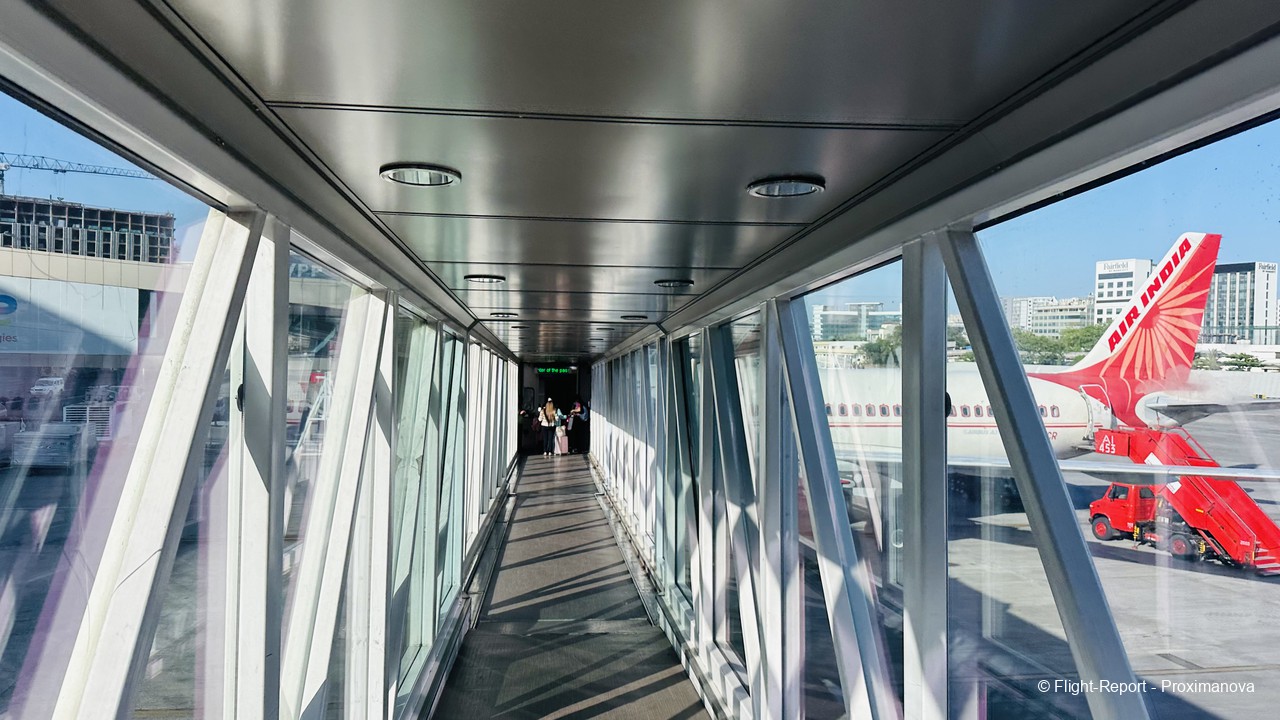
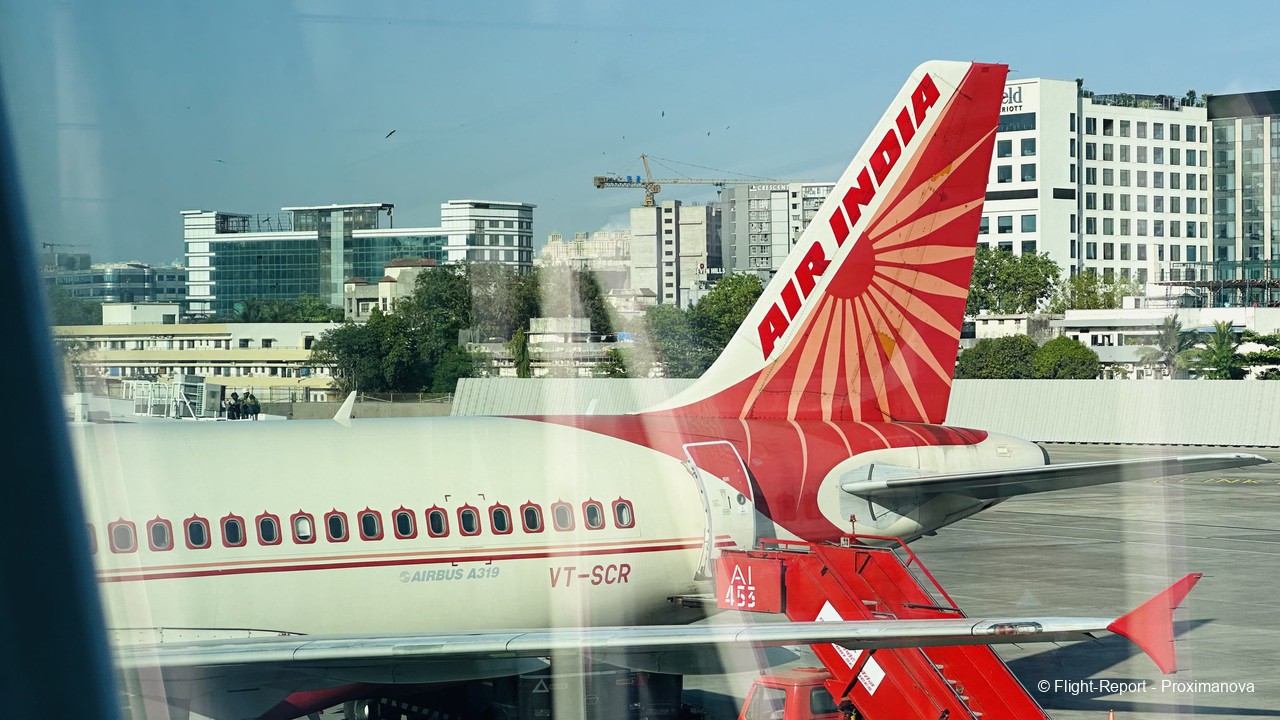
The flight: Boarding and departure
Flight: Air India AI573/AIC573
Date: Saturday, 25 March 2023
Route: Mumbai Chhatrapati Shivaji Maharaj (VABB/BOM) to Chennai (VOMM/MAA)
Aircraft: VT-SCR, Airbus A319
Age: 13.7 years at the time (built: 2 July 2009, delivered: 30 July 2009)
Seat: 10D at check-in; changed to 9C (exit row) after boarding
Boarding: 5:00pm IST (UTC +5:30)
Departure: 6:00pm IST
Arrival: 7:30pm IST
Duration: 1 hour 30 minutes
Notes:
* First flight on Air India since an ‘air bubble’ flight on the 787 in December 2021, my only flight for that year due to COVID-related travel restrictions. I have vowed to avoid AI on international routes until its equipment and product standards are improved.
* First flight ever on any Airbus A319.
The Business Class cabin is as you’d expect on an older plane like this: sub-optimal upkeep, worn fabric and hardly any improvement in hard product — in short, not worth shelling out extra on. Also, notice that on older AI A320-family aircraft, the IFE screens used to be operational ages ago, but now they are covered by the seat covers. Newer A320neos, and now the A321neo, never had IFE screens to begin with — but since AI will be India’s only full-service carrier for some time to come after it strikes Vistara dead, it must introduce at least a basic streaming IFE system like Vistara World if not a proper seatback IFE like that airline’s A321neo fleet has.
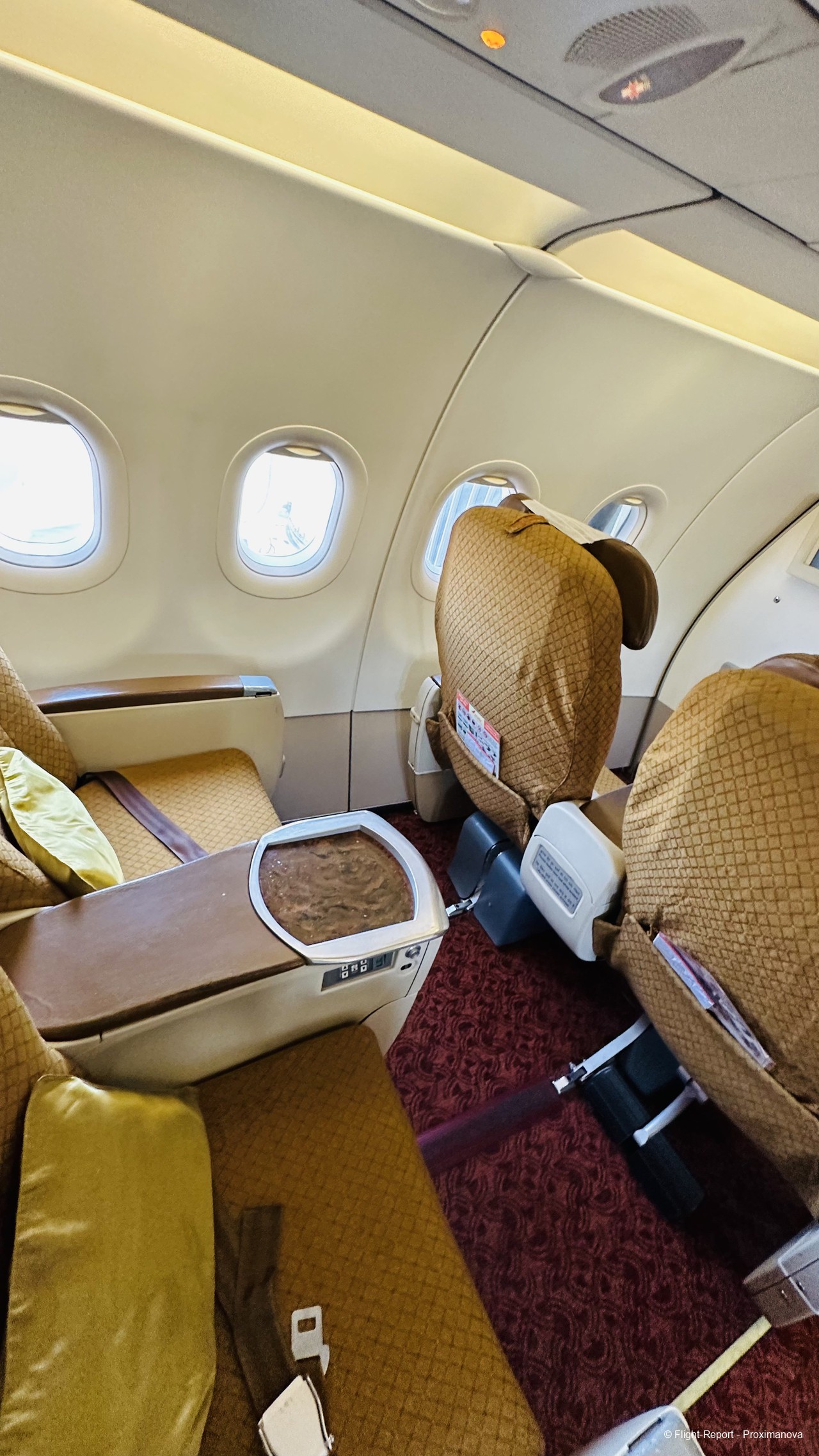
I settled into my seat, 10D, just behind the exit row. Sadly every single window seat was occupied.

Unlike Vistara, AI has plastered its seats with unnecessary advertisements, in this case for Punjab National Bank.
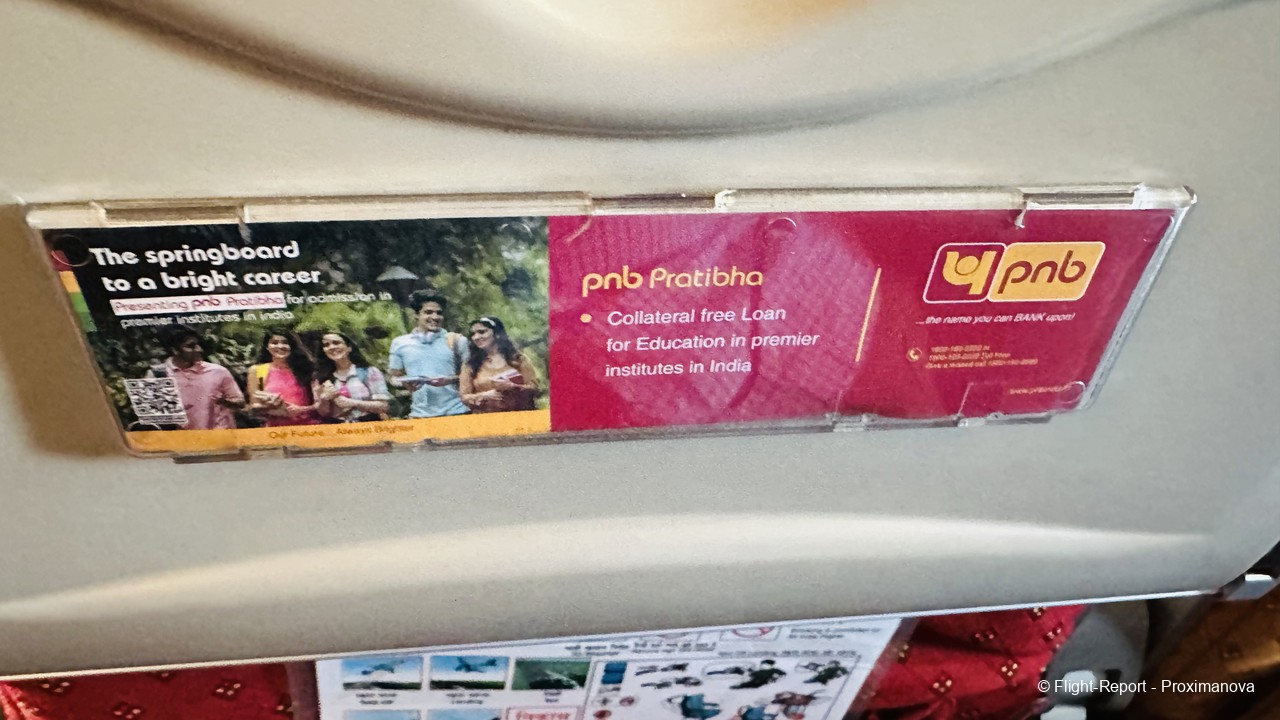
Juxtaposing the two boarding passes of the day, it was clear that while the maharaja may have won at the front…
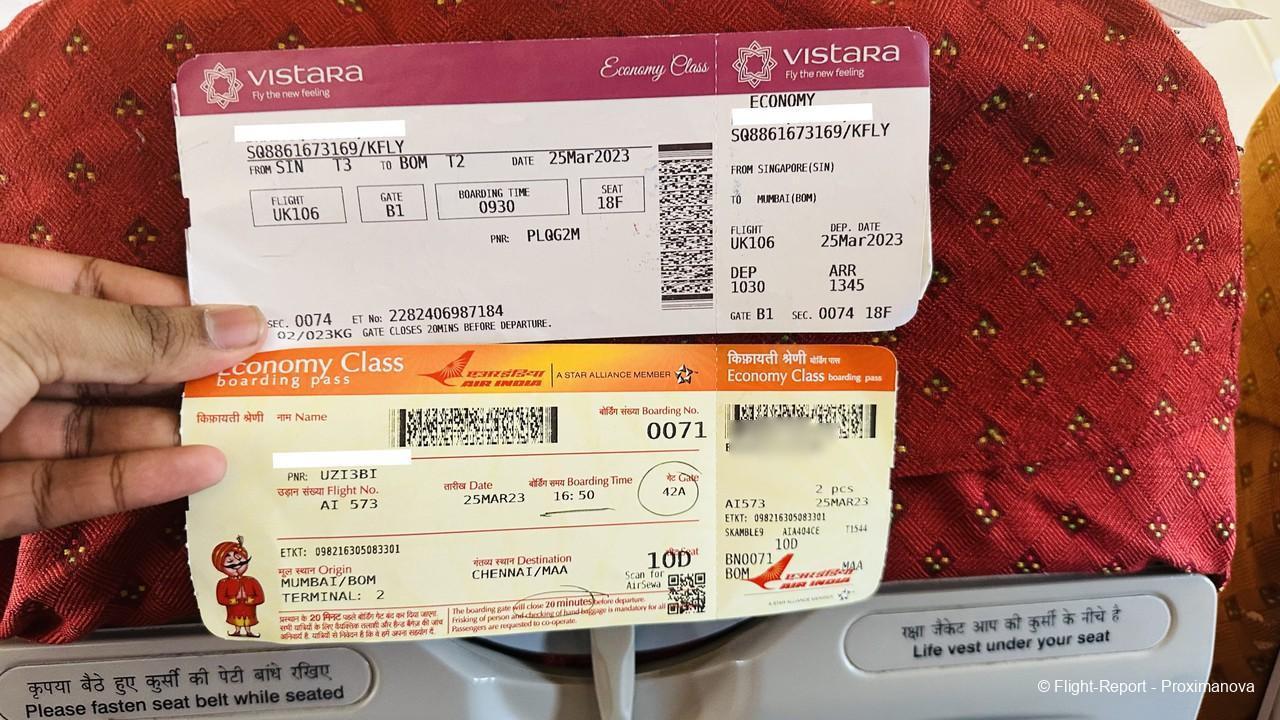
…Vistara’s professional photoshoot at the back edged it past the finishing line. Still, these two are far better than the unadorned passes SQ and Co. hand out.
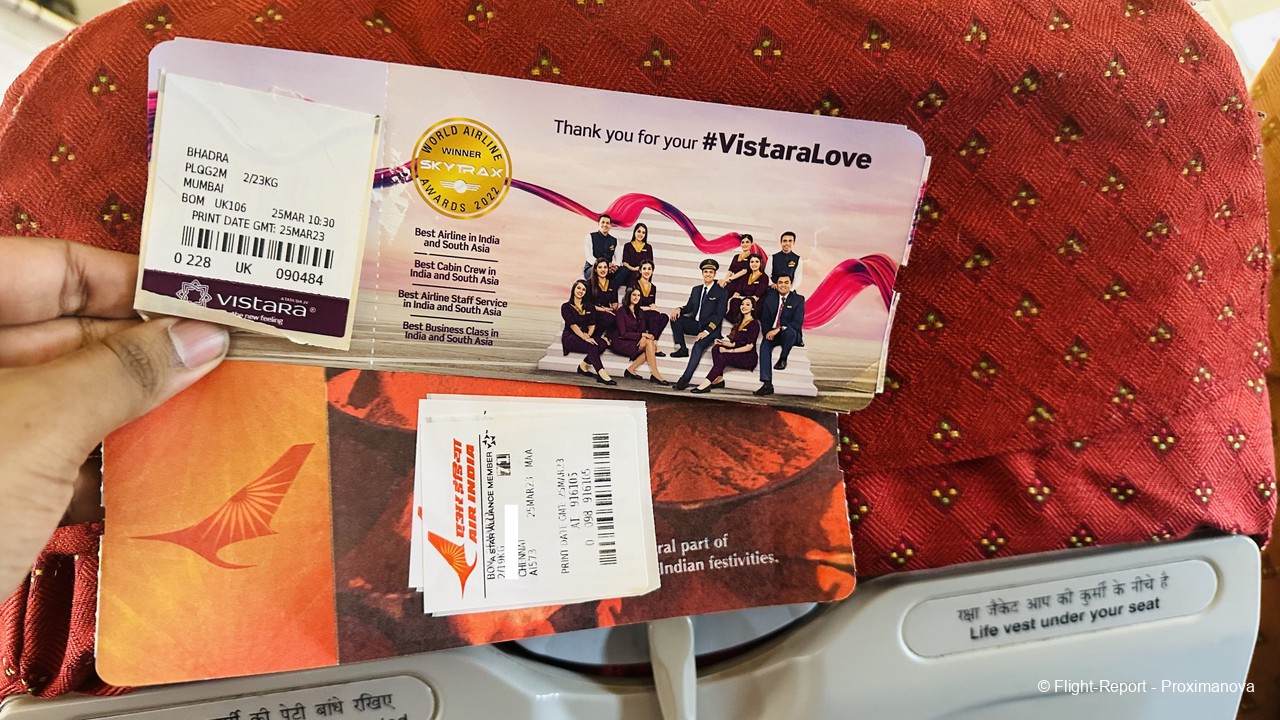
Even on this baby-bus, the flight was only half-full. It sure felt different to already be halfway down the plane at row 10, instead of the typical exit rows 12/13 on the A320 — that is, if the airline isn’t superstitious enough to skip 13 altogether; I know for a fact that IndiGo skips 13.
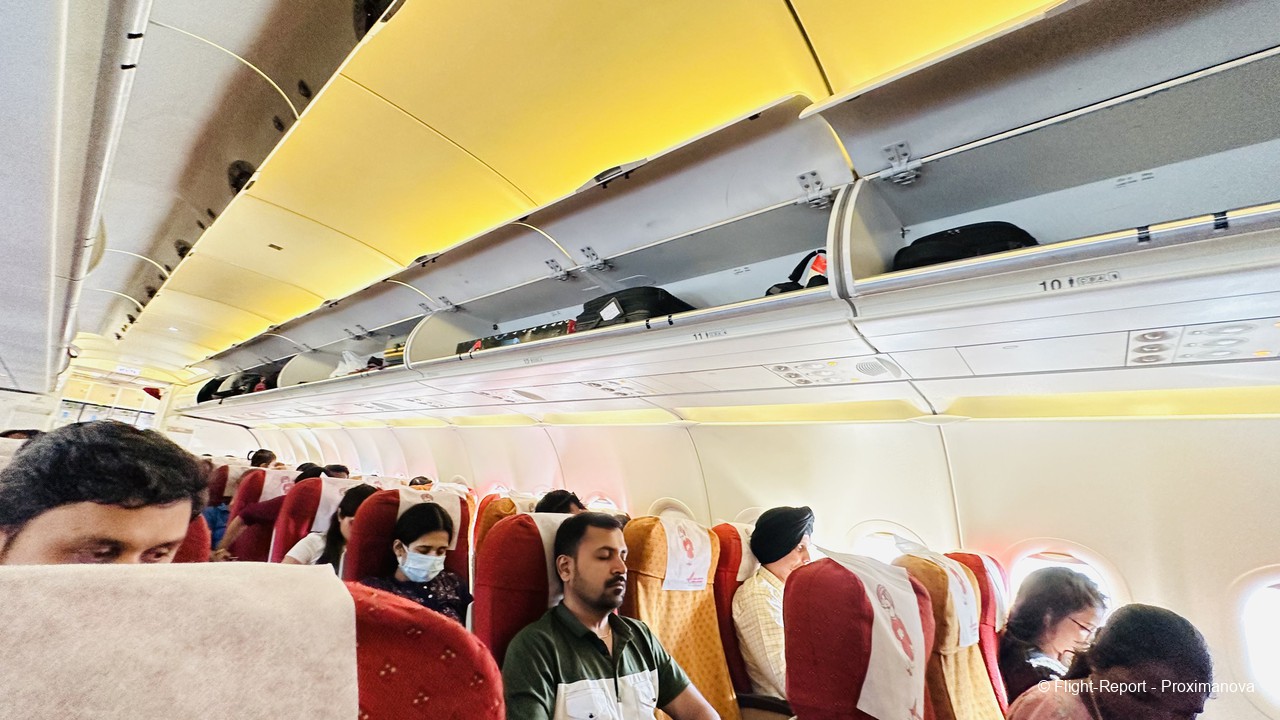
Out the right-hand window was VT-EXJ, an A320neo which I flew in January 2019, on a morning-to-evening flight from Chennai to Singapore. I have no intention to do so again, not until AI’s A320neos become on par with Vistara’s if not better.
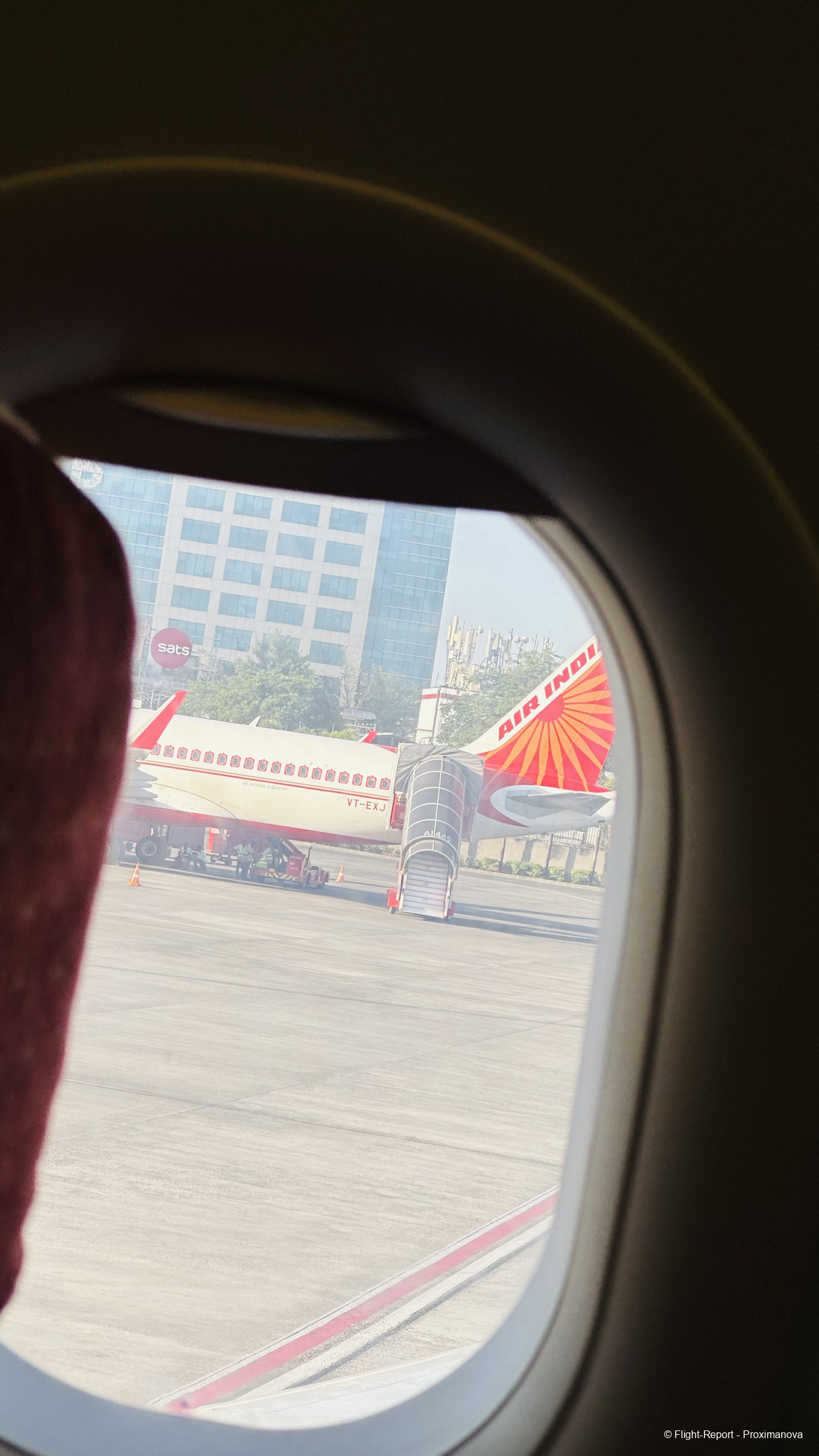
On the left side was VT-IFL — I managed to catch the registration through the window as we taxied — which I’d flown to this very airport on 31 May 2019, which was the last time I came to Mumbai. For the record, it was the MAA–BOM late-morning flight, which was numbered 6E782 at the time.

Now Monali, the saree-clad lead cabin crew member, made her boarding announcement, starting with a lovely ‘Dear guests…’, which was included in every announcement of hers. It went a long way in making the passenger feel at home, and the other three members of today’s all-female team — Pinaz, Shilpi and Esha, who wore tunics instead — made this a standout flight, Pinaz in particular being a rockstar. I could not catch the names of the pilots, but these girls were all the names I needed to know.
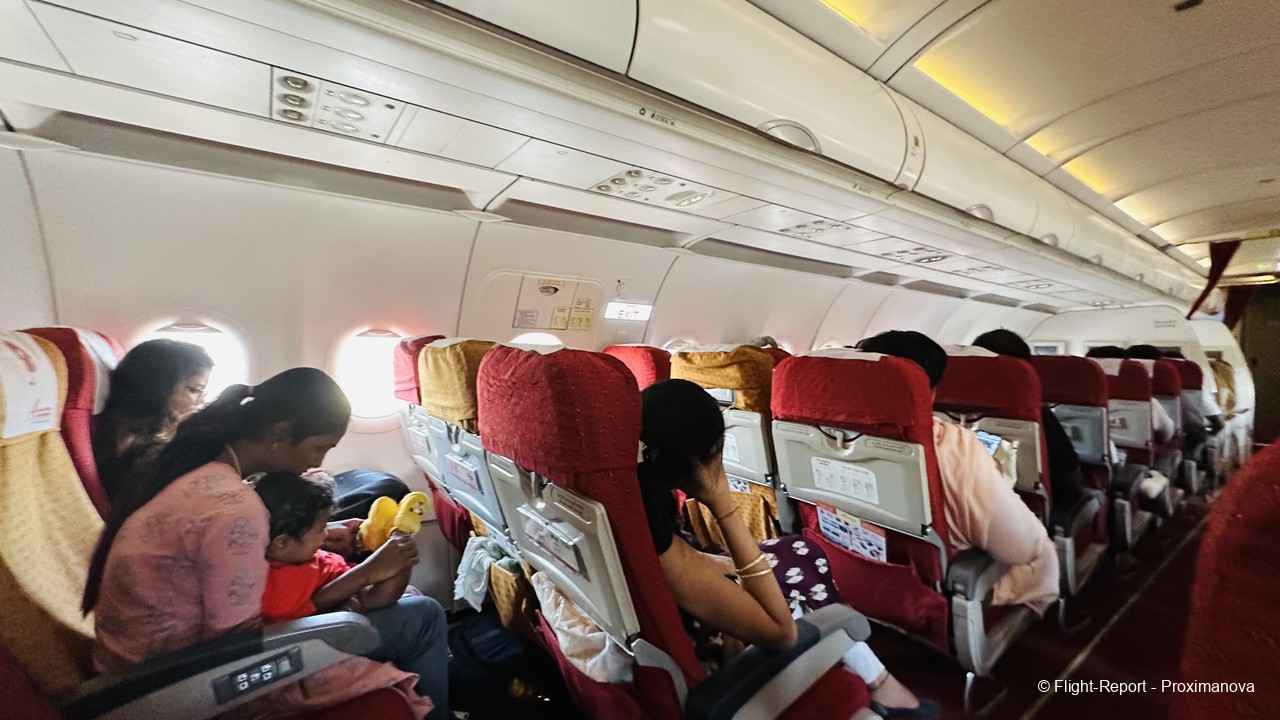
While I typically voice-record all onboard announcements for posterity, unfortunately I was not able to record her boarding announcement due to the app hanging on me. However, I wanted to move to the exit row, so when Shilpi passed by during the safety demo, I requested her to do so. Her reply: it was possible only after takeoff, and the F-seat (right window) was inoperable, so I opted for an aisle seat instead; moreover, I would have to be briefed by them regarding how to open the emergency exit door. At the end I asked her the name of the lead cabin crew, which was duly recorded — which was a lucky coincidence for me, since I happen to be writing a novella where one of the protagonists is also a flight attendant called Monali!
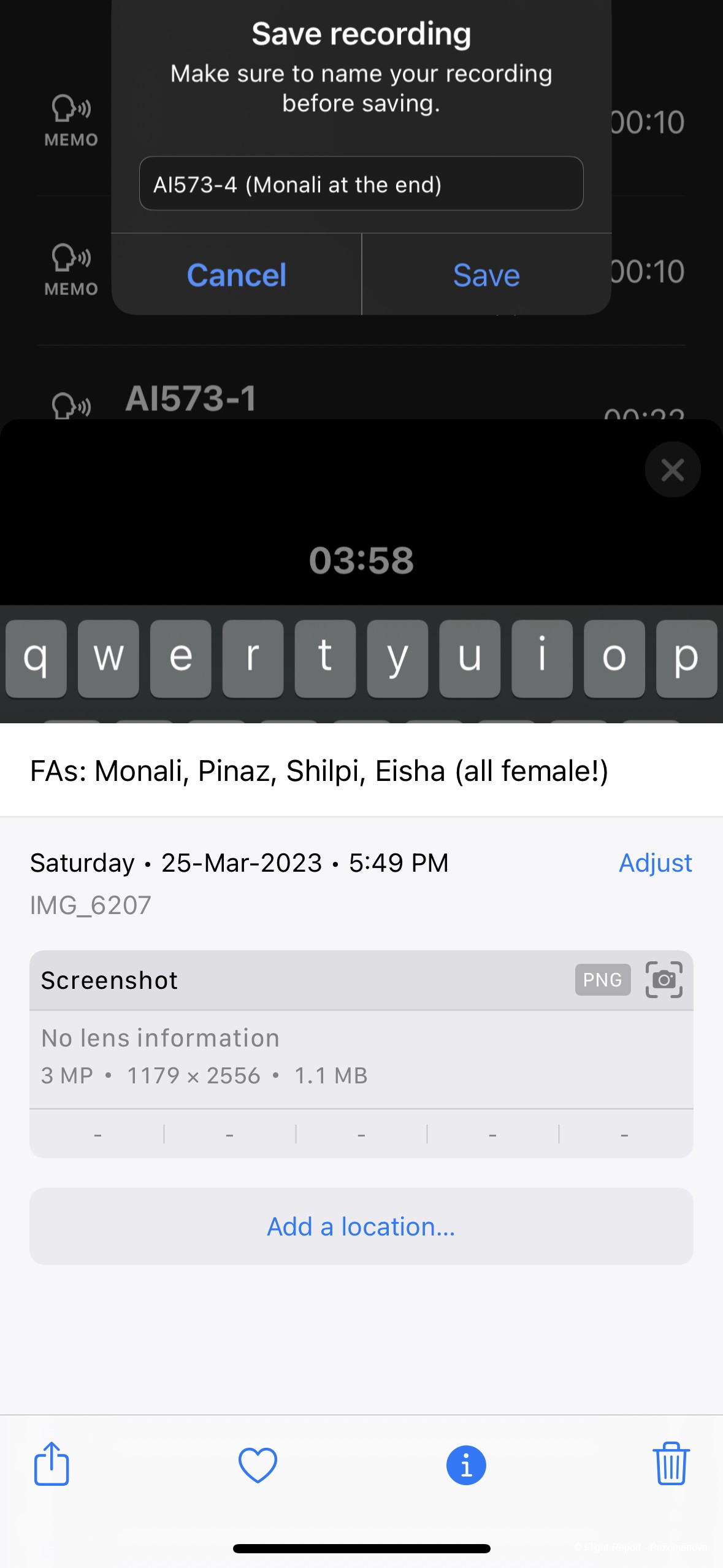
One of the most striking planes in Indian skies had just landed: VT-ATV, Vistara’s pseudo-retrojet in a ‘Tata-SIA Airlines’ livery. Also, there was now a non-VT aircraft at the terminal: All Nippon Airways’ JA884A had arrived as NH829 from Tokyo Narita. This is its only Indian destination apart from Delhi, since ANA has sadly abandoned Chennai permanently, while its rival JAL — which serves Delhi but not Mumbai — stays committed to BLR and the techies flying to San Francisco. Diverting a bit here…
JL753/754 serves as an alternative to AI’s non-stop AI175/176 BLR–SFO, which is now operated by the new ex-Delta 777-200LRs (VT-AE*) instead of AI’s three falling-apart-at-the-seams 777-200LRs (VT-ALF/ALG/ALH), which are in dire need of refurbishment. The difference between them is stark, even though they were all built in 2009 like this A319. (Also, SFO is a far more important destination for AI than LAX, which has not seen any non-stop service to India for over a decade, though it is anyone’s guess whether AI will return there after its mega-order.)
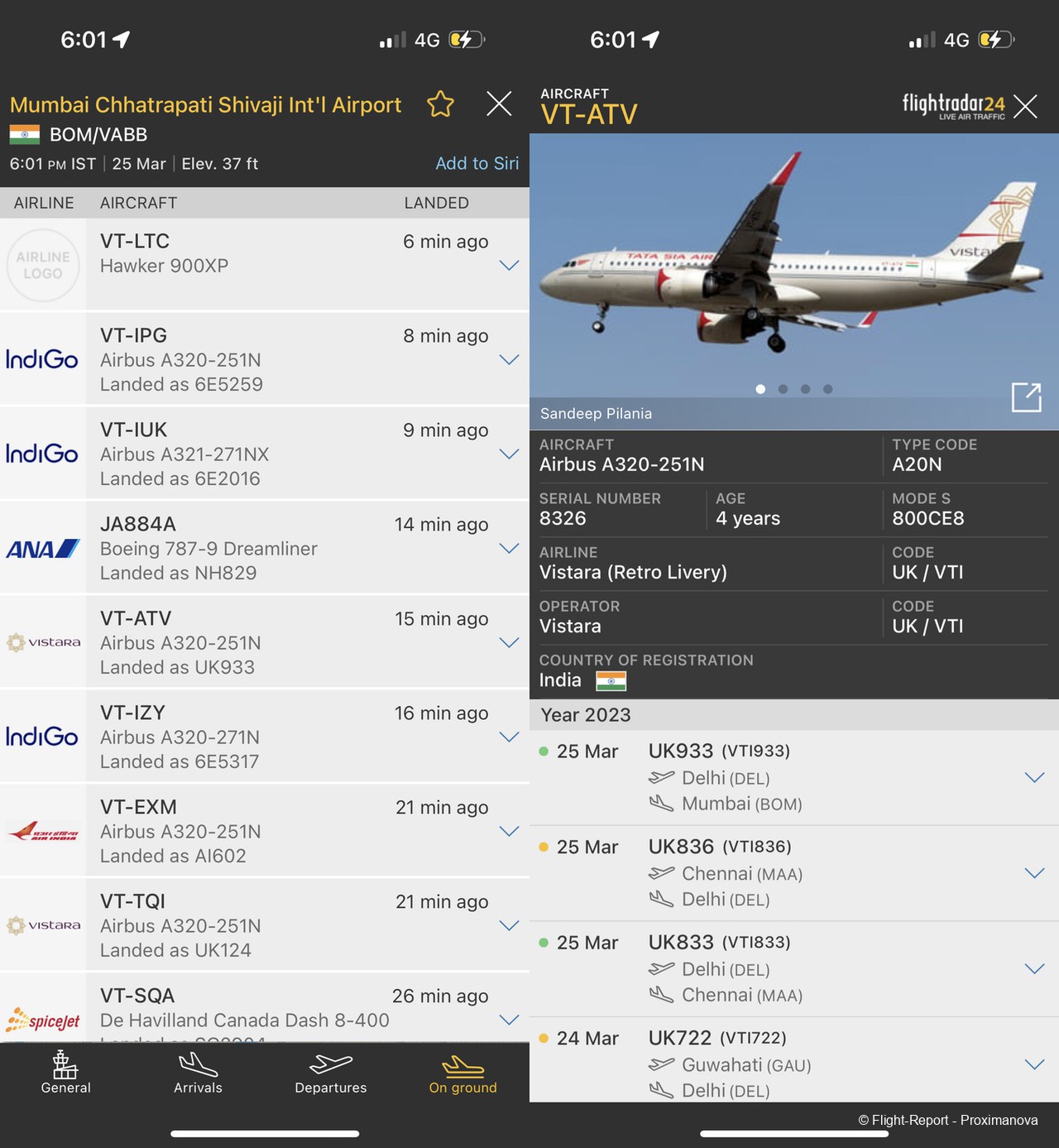
At 6pm sharp the wheels were up, and so my stay at the country’s financial, trade and entertainment capital came to an end.

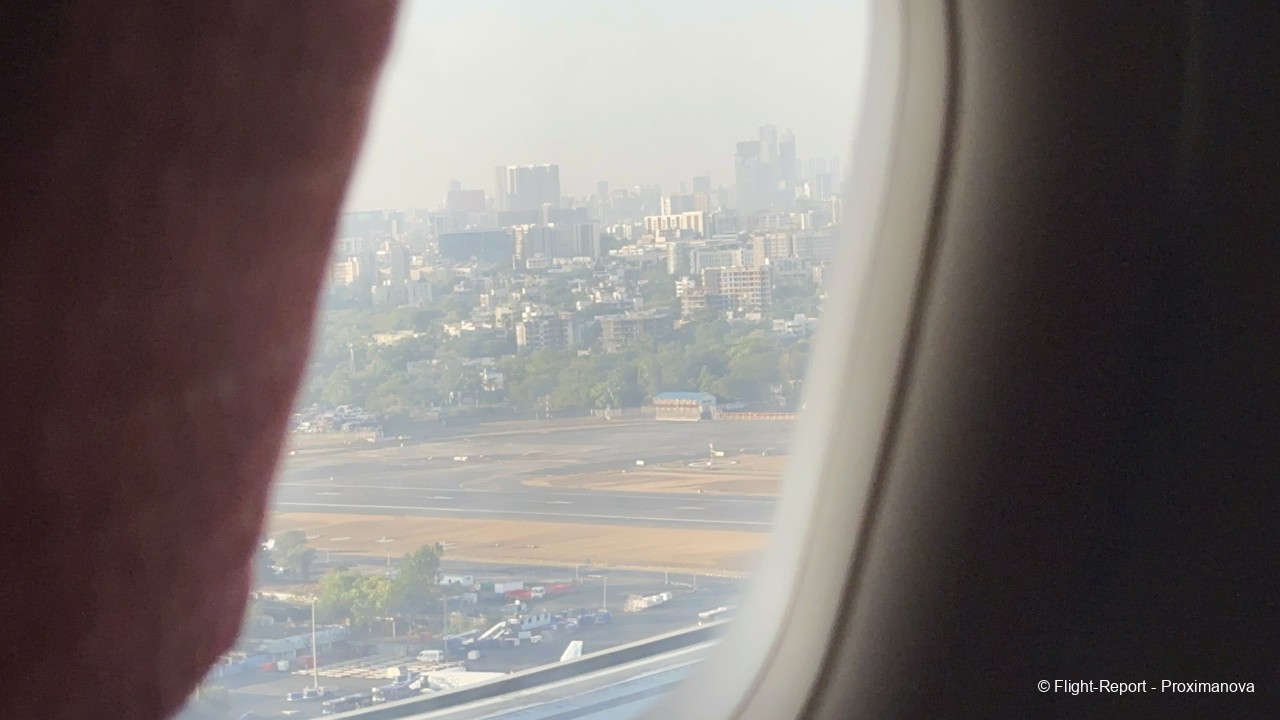
The beautiful evening light streamed through the windows, while I settled in with two more books I’d bought earlier, written by Bollywood celebrities.
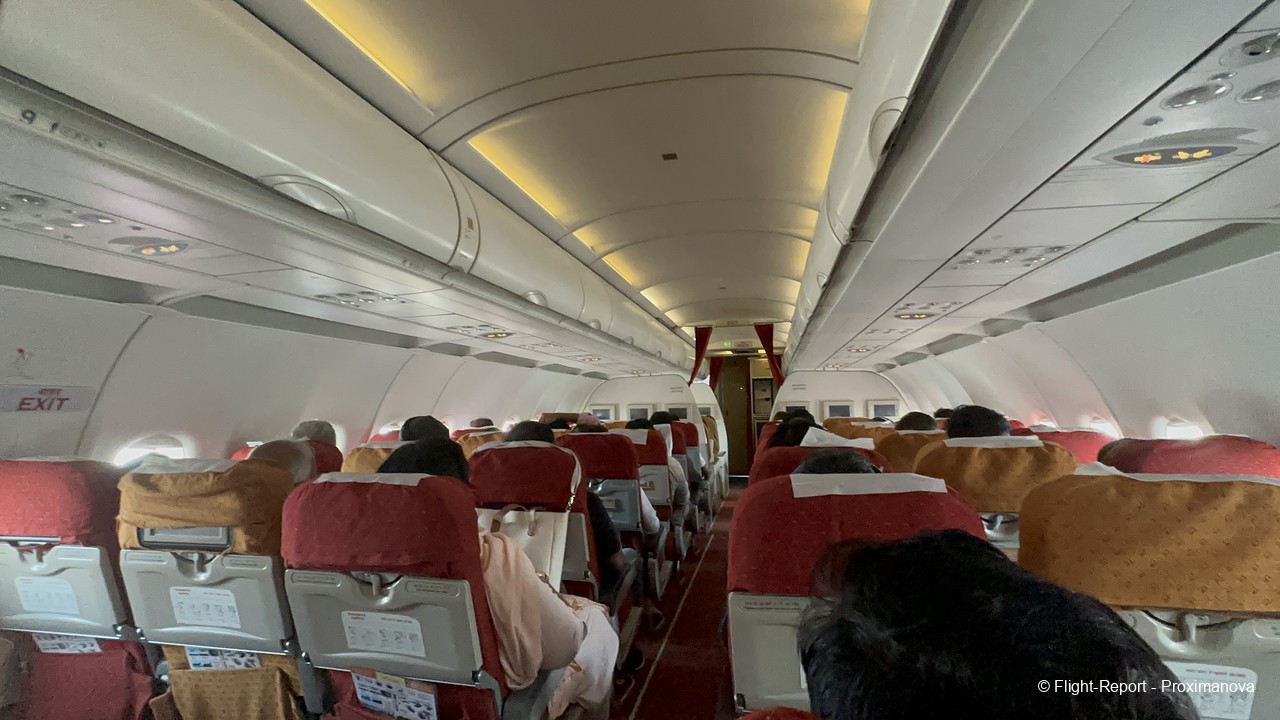
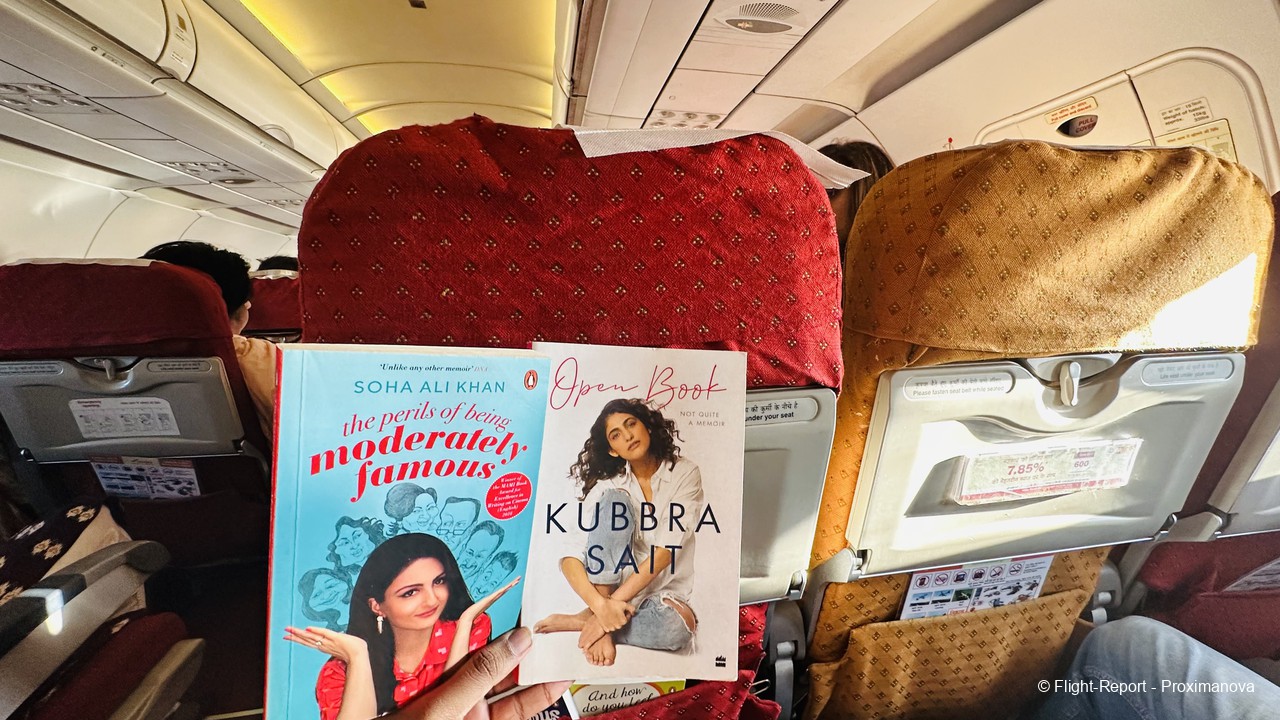
The window passenger prevented me from getting a proper view of the registration on the right wing. You won’t find the over-wing registration on most aircraft nowadays, so this was a rare opportunity. Still, I did what I could by zooming, and managed to get a semi-clear view of the wing against the evening sky.

Catering: Exceptional
Soon enough the evening meal was rolled out, and must I say it — the chaat in particular — was exceptionally good! The vegetarian option, which I chose, was pav bhaji (bread and tangy dip) with the green paneer hariyali tikka (barely visible to the left), along with the most mind-blowing chaat (the salad-like snack in the white bowl) I have had in ages, which I believe was made of lauki or bottle-gourd. The non-vegetarian option, for the record, was mac and cheese with chicken strips. In either case it goes to show how much the Tatas have raised the bar in the parts of AI’s narrowbody product which can be improved with not too much investment — though I can’t say I have ever had a bad meal on AI, even in its government era, its hard-product failings notwithstanding. In fact, even other passengers were asking for that chaat, a sign of how extraordinary it was!
To boot, it was served with gleaming metal cutlery — a first on AI! — and two bottles of Aava water, along with a bar of Schmitten dark chocolate to round off the proceedings. The revamped tray paper with AI’s new Concourse font used for the ‘visit www.airindia.com’ text was an extra pleasant surprise, and it goes without saying that this far beat the nondescript snack I had on the Vistara BLR–HYD flight three months before, though UK’s cardboard box was better designed.

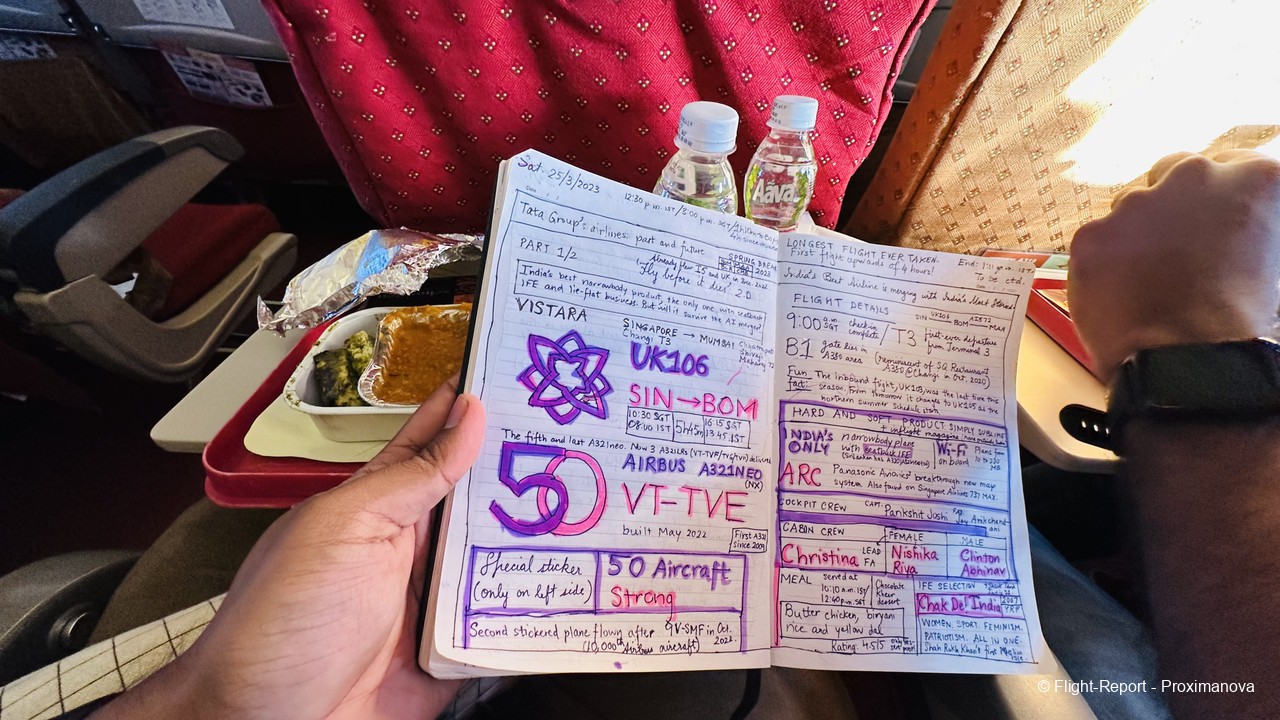
Indeed, the meal brought to mind memories of Jet Airways’ outstanding catering during its heyday, with my mother recollecting the pattices that were served on our final flights on the airline via Guwahati in the northeast in 2018. Too bad the ‘Joy of Flying’ will forever be confined to Indian history, with 9W going from almost-ready-to-launch to sunk-like-the-Titanic in a matter of months.
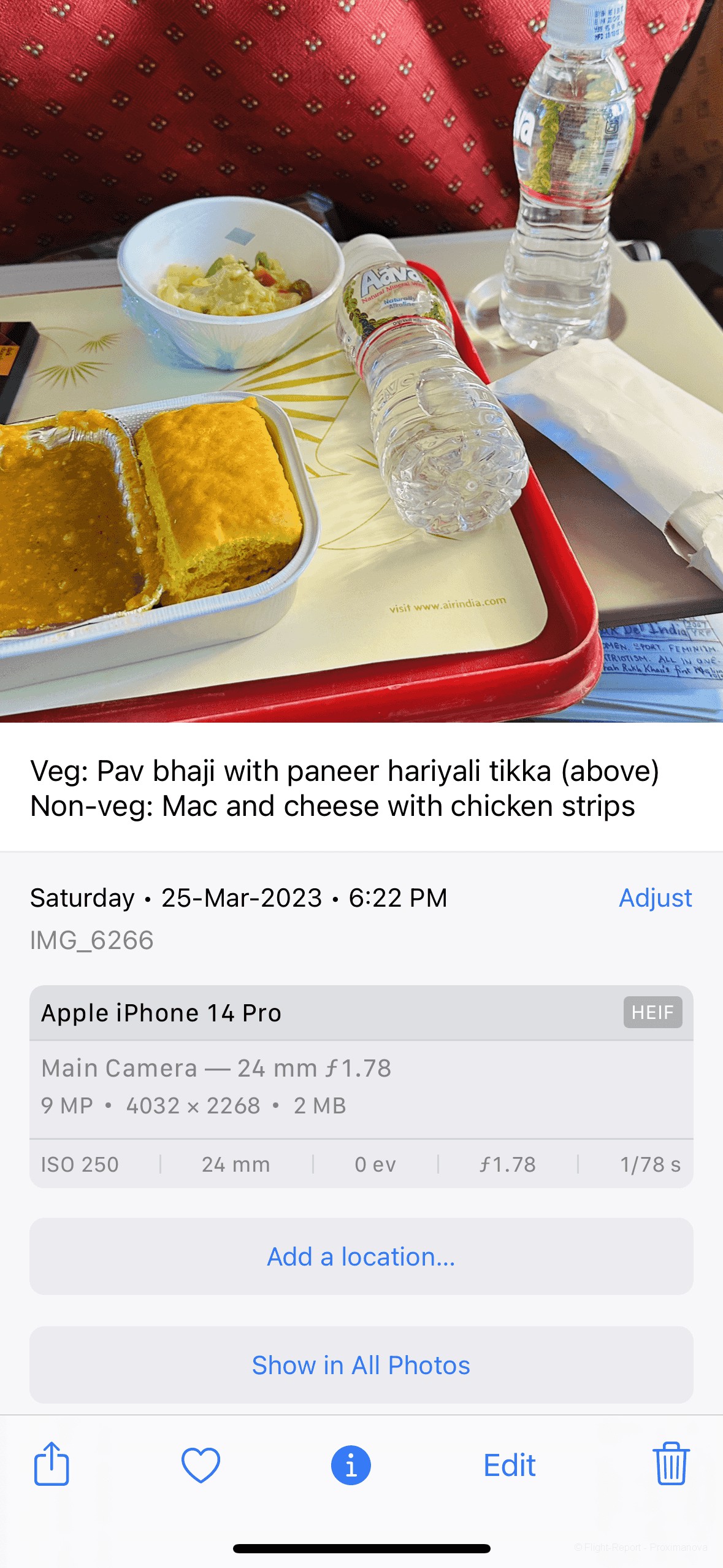
The dark chocolate was a simple but welcome conclusion to the meal, far better than stale croissants or yucky puddings: Vistara, take note.
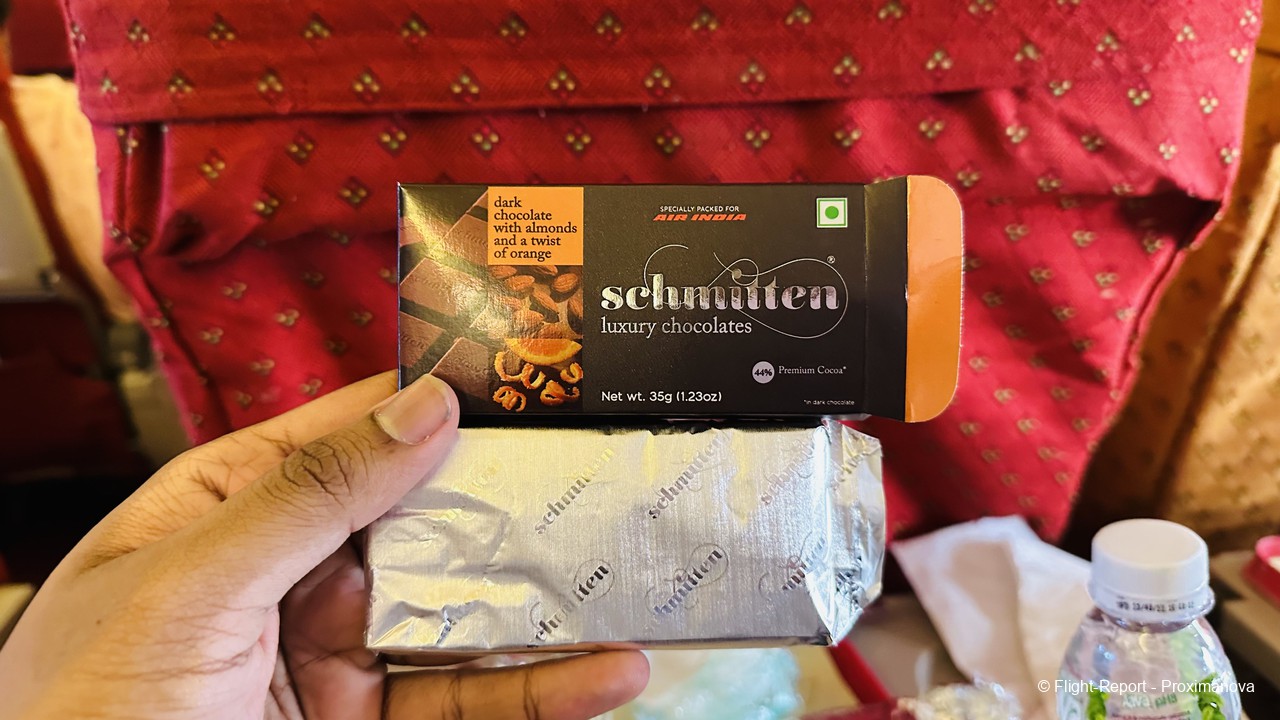
Soon the meal service was wrapped up, with the beautiful, picture-perfect purple-pink sunset taking centrestage. I had by now moved over to 9C, with the strands of hair belonging to the woman seated at the window there, who curiously asked me whether I was indeed this passionate about flying.
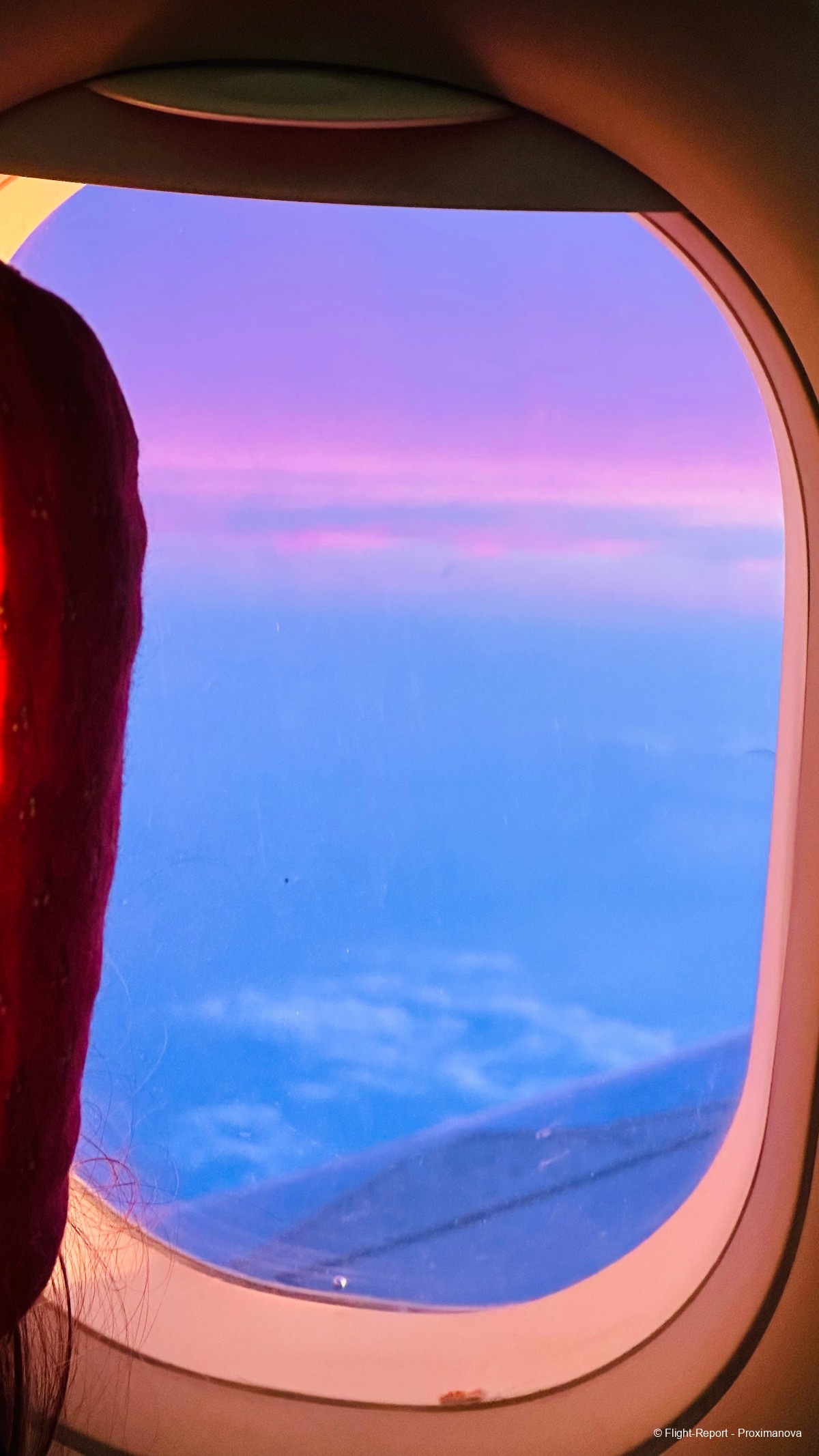
Now I penned my journal entry for the flight, recounting how everything — while not according to the original (doomed-to-fail) plan — had turned out excellently, with pleasant surprise after surprise. I had not reckoned that the ‘another in a saree’ was none other than Monali herself, as there was no name badge on her, while the others had name badges.
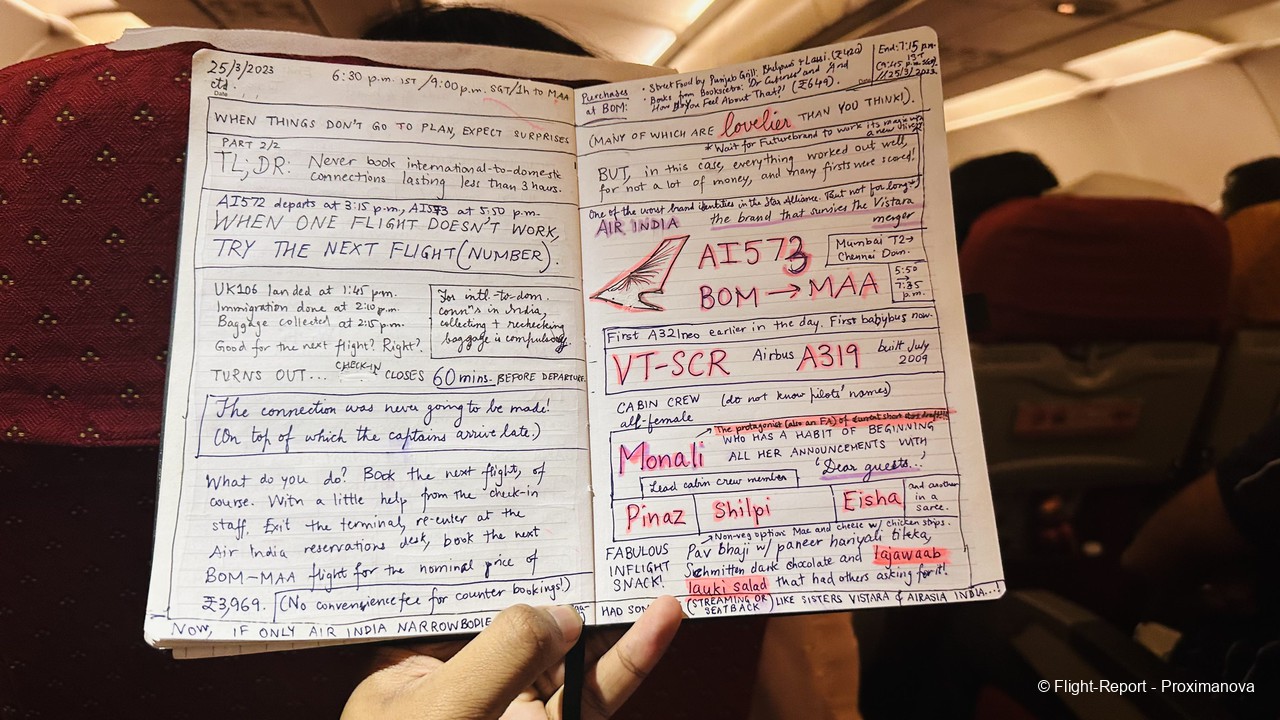
There was a brief coffee and tea service in between, but I prefer cold juices to hot drinks. I asked Pinaz whether there was any juice to be had on board, but she replied in the negative. So you can imagine my delight when, lo and behold, she turned up with a cup of orange juice out of nowhere! Such surprise-and-delight service is what I feel was a little but lacking on my previous flight on Vistara, for all its advances in hard product and IFE. While I didn’t interact with Esha, the others — Pinaz, Shilpi and Monali — made for such a wonderful crew that I normally expect only on IndiGo. (Those on foreign carriers like SQ, I feel, are polite but a little standoffish, and the familiarity of Indian crew cannot be beaten.)
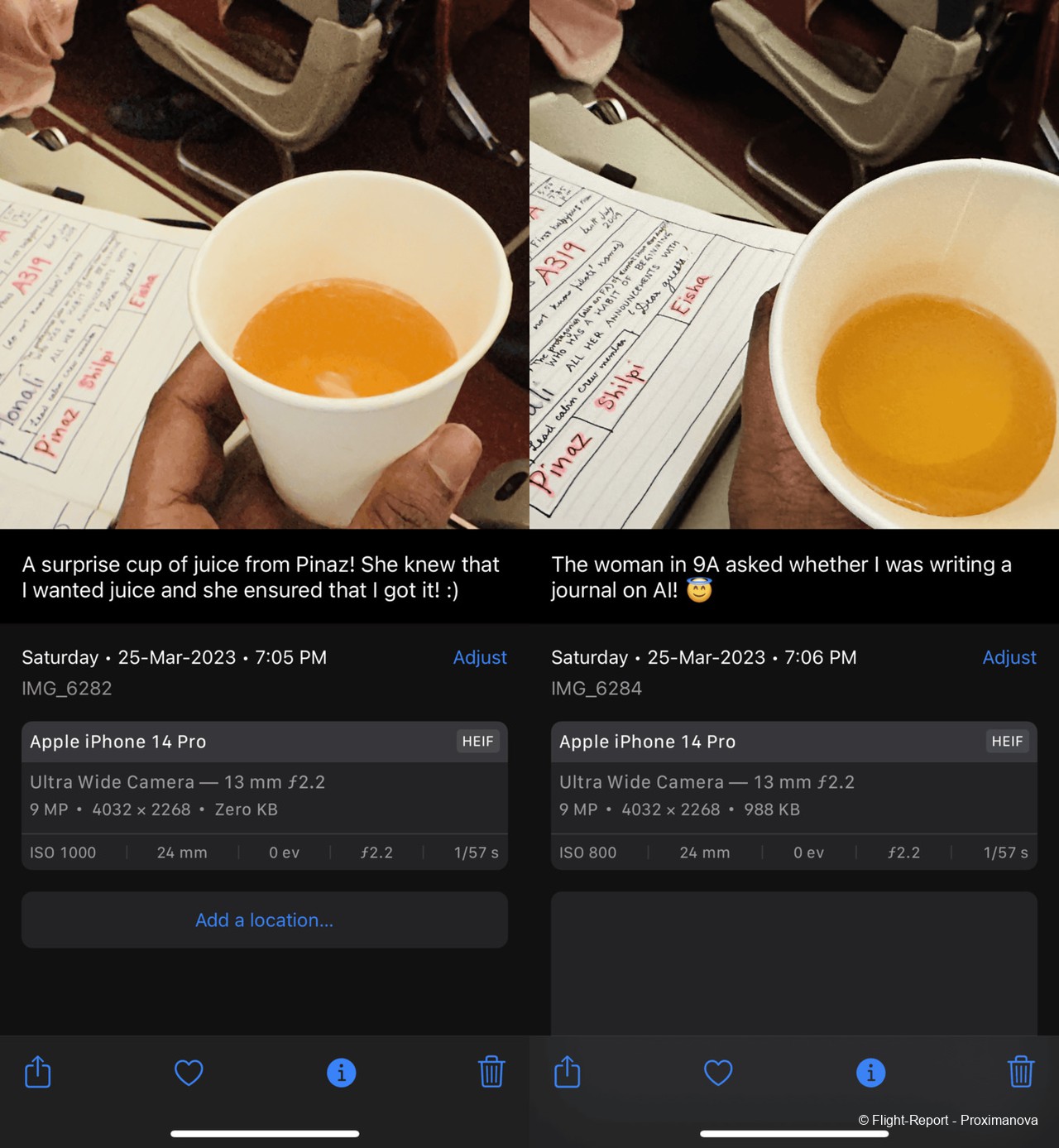
There was another little anecdote towards the end of the flight. While most of us can read the caption inside the picture, I will rephrase the text for the benefit of those who need a screen-reader, or in the event the picture doesn’t load, or for any other reason.
Since I was seated in an exit row, 9C, I had to be briefed on how to open the emergency exit door, which Shilpi did with less than half an hour into the flight. Now Pinaz came some time later and asked me to return to 10D as we were commencing descent. But within a minute she shamefacedly turned up again, confessing that I could stay in 9C, as it was only now that she had been told that I’d already been briefed on how to open the emergeny door! Another little incident that went a long way in increasing my respect for AI in the catering and service department, and while I would hesitate to fly them earlier, I will be more confident of flying them hereafter — domestically at least — as there will be no other full-service option within the country.
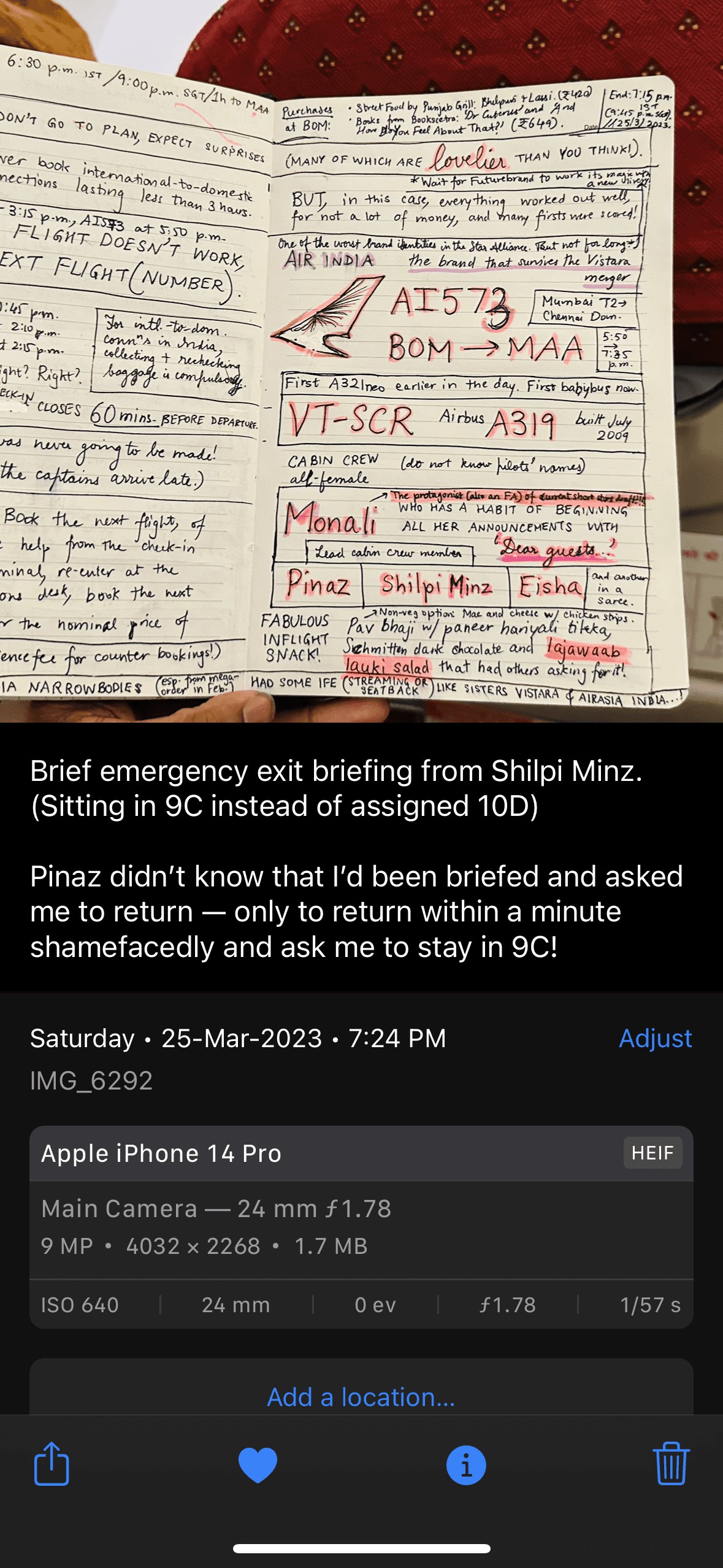
Descent into Chennai
The cabin lights were dimmed for landing, and as for my inquisitively curious co-passenger in 9A, she was enjoying the night lights of Chennai glow up against the black backdrop.
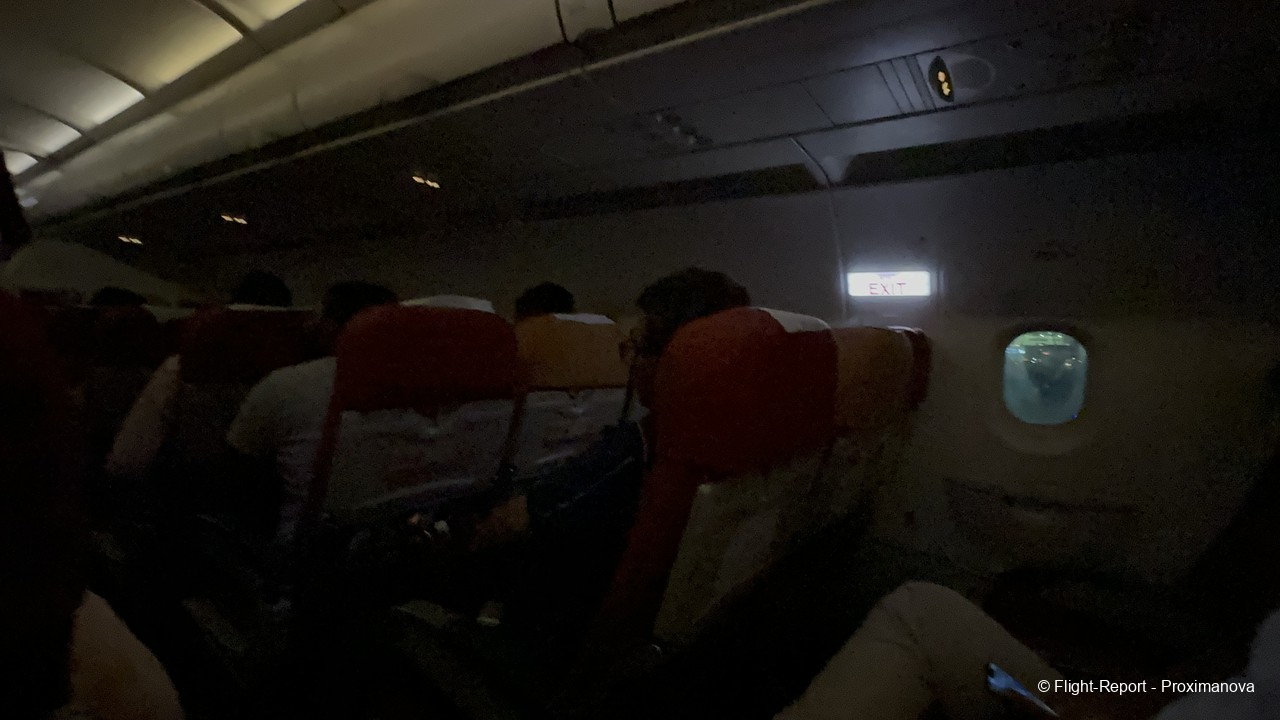
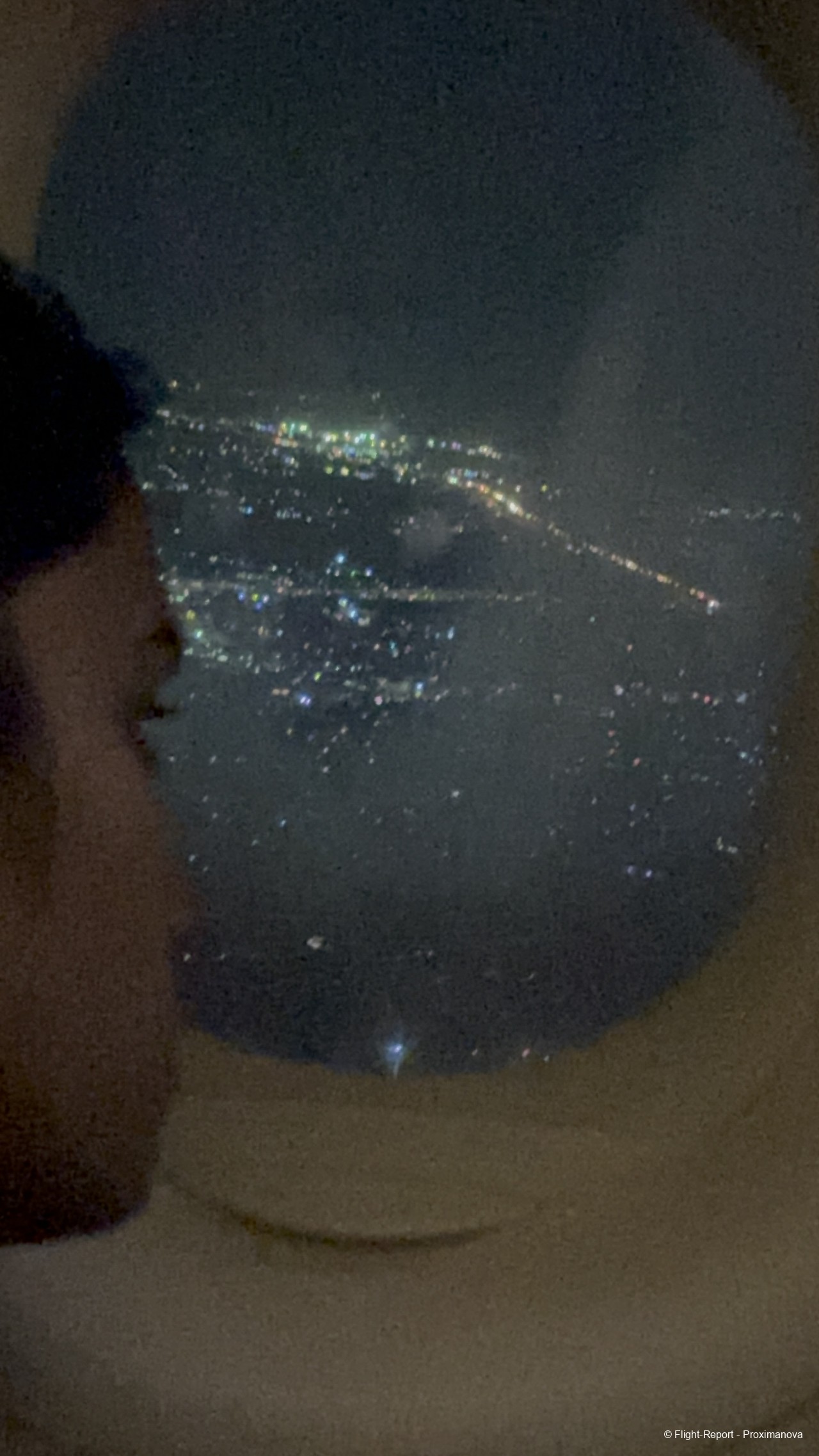
At 7:30pm we made a landing at Chennai Airport, one of the few major Indian airports not to have any special name like Indira Gandhi or Kempegowda — though previously its domestic and international terminals were named Kamaraj and Anna, respectively, after two politicians in the state of Tamil Nadu, but these names are no longer used.

We parked next to one of the cookie-cutter A320neos of the world’s biggest operator of the aircraft. VT-IT*, IV*, IZ*, IJ*, IS*, II*, IP*: what’s next by way of registration series? Not to mention the hordes of A321neos and ATR 72s, and with widebodies already in service — albeit leased 777s from Turkish Airlines — there seems to be no stopping the juggernaut of Indian aviation, especially as more of its competitors fall by the wayside, with a widebody order well and truly on the cards.
Shortly thereafter, I had thanked Monali and her lovely crewmembers for their brilliant service and catering, not failing to mention the popularity of the chaat among co-passengers, and wished them the very best of success after AI and Vistara fuse into one.
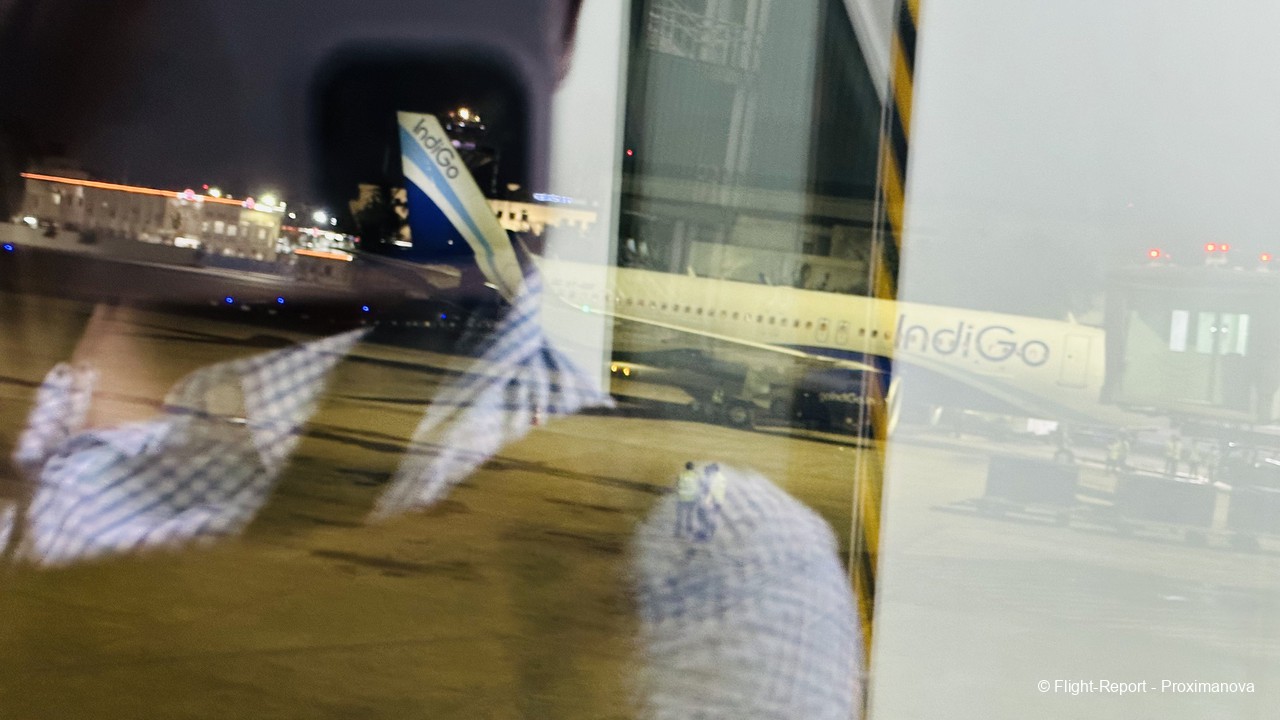
I’ve given Chennai Airport enough of a bad rep in the past, but its domestic terminal, while not as breathtaking as BOM or BLR, is at least decent and functionally modern, with some amount of eateries and shops, unlike the sad excuse of an international terminal it’s had so far. However, now that the new integrated international terminal has finally opened after ages, one can only hope that it will finally start catching up to superior private operators in the years to come.
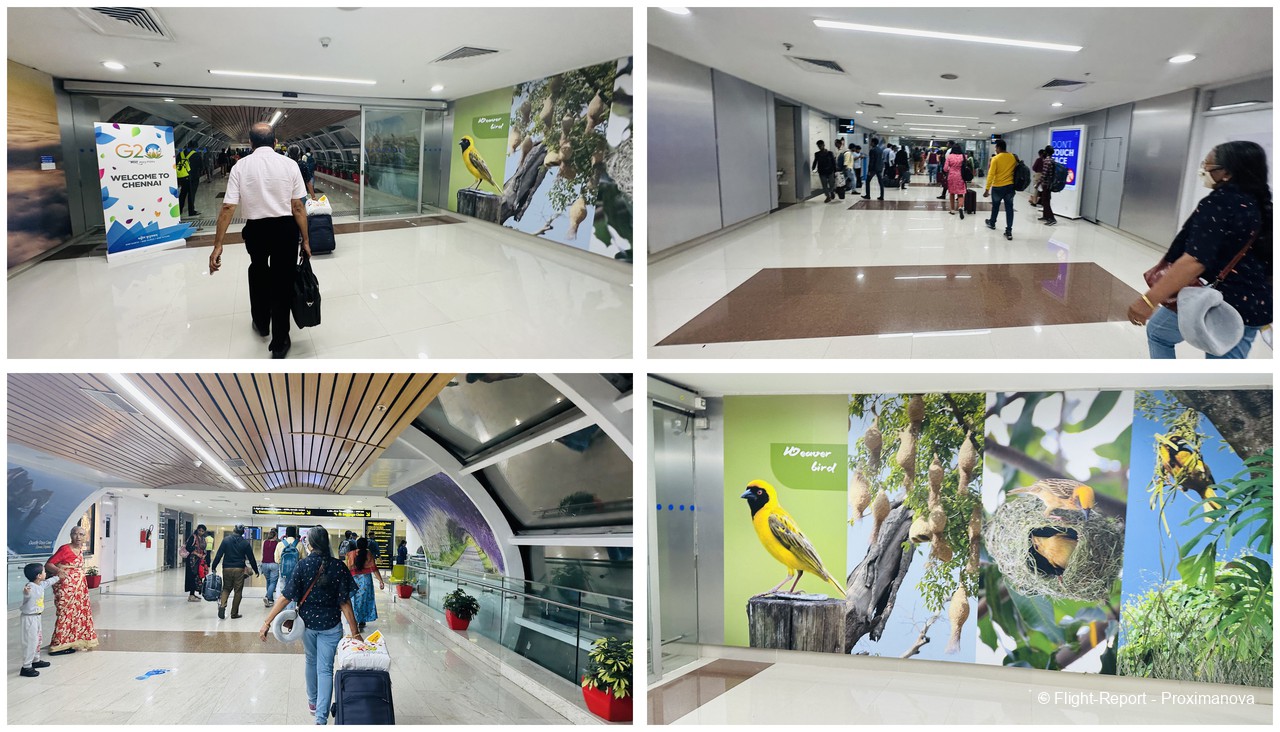
Downstairs, at the baggage belts, there were several ads for India’s G20 presidency in 2023.
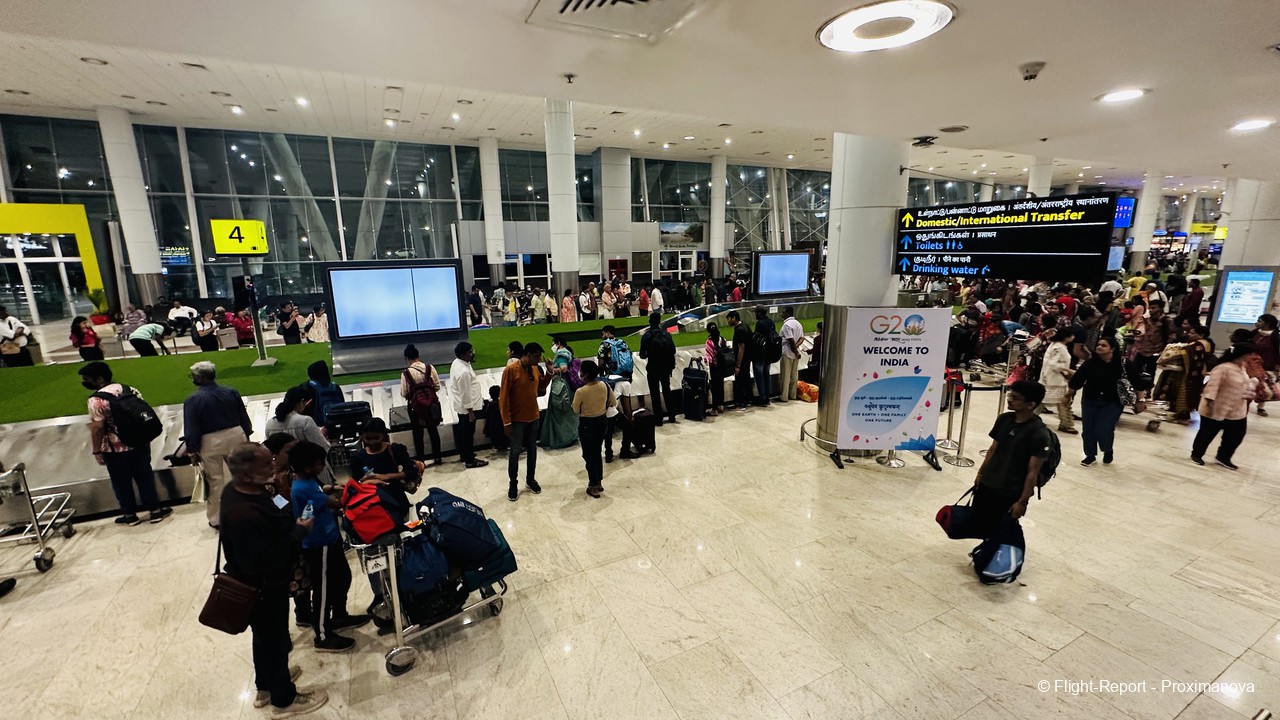
Unlike private airports, the conveyor belts themselves were not plastered with ads, but rather ads were shown on all nearby TVs. While the décor is serviceable, these random pictures of global tourist attractions cannot hold a candle to the wondrous wooden ceilings of Mumbai’s arrivals hall.
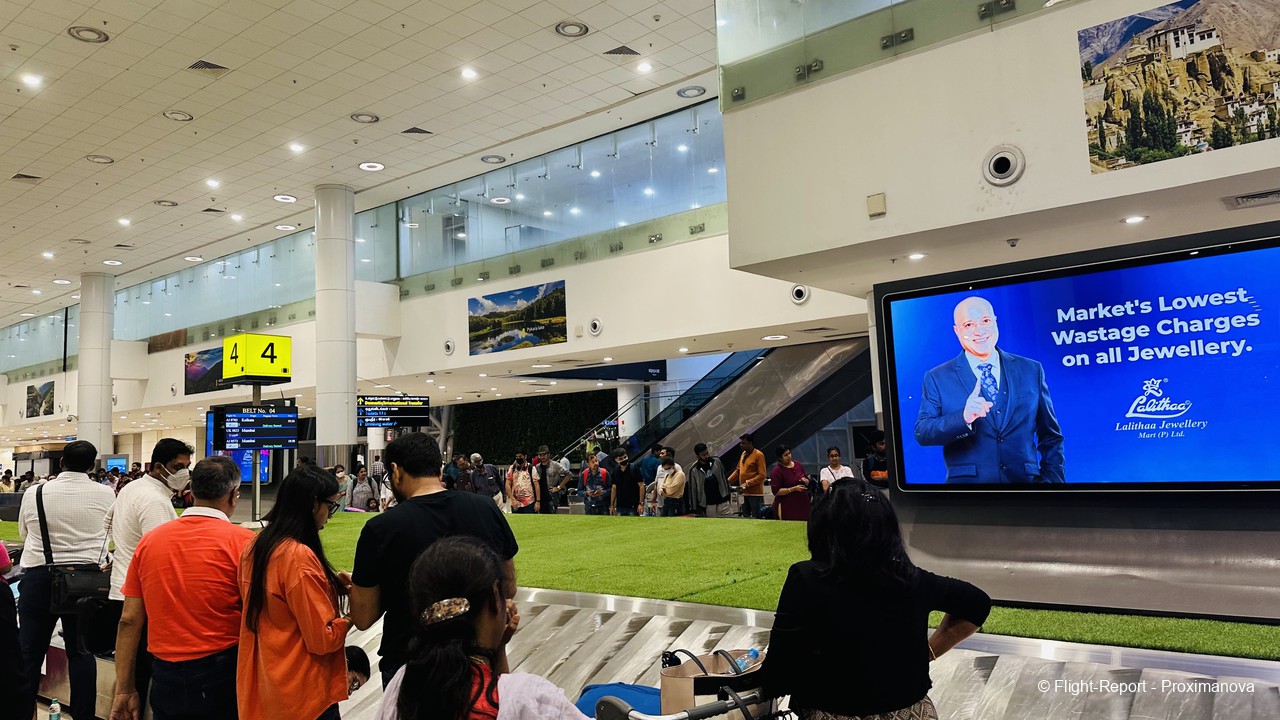

Before long I was out the airport; as usual, people had lined up in droves, either waiting for their near and dear ones, or with a placard to whisk off some business traveller to his or her hotel.

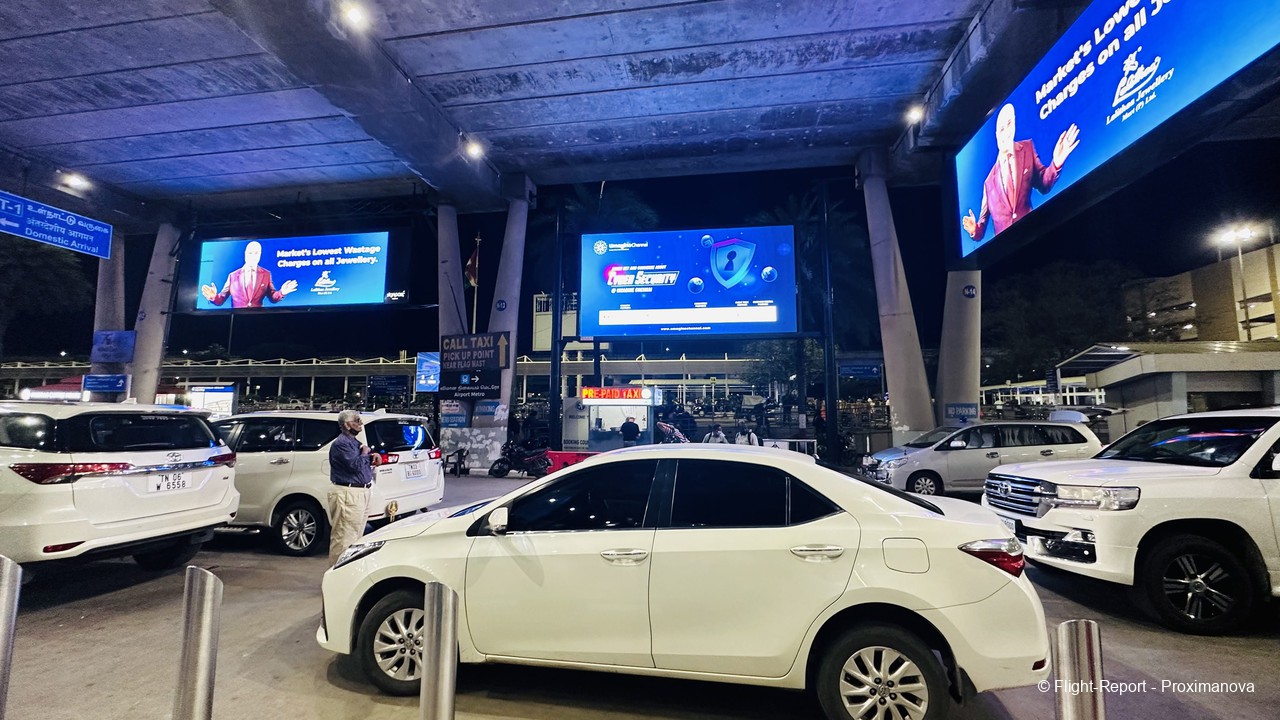
For me, though, it was a longer wait, given the drastic changes in the airport traffic arrangement, and our car — with my mother, granny and trustworthy driver — had to take many twists and turns before it could enter the premises. (As we’re leaving Chennai, we’ve tearfully bid our driver of 15 years adieu, as well as so many support staff. The car’s future itself is under doubt.)
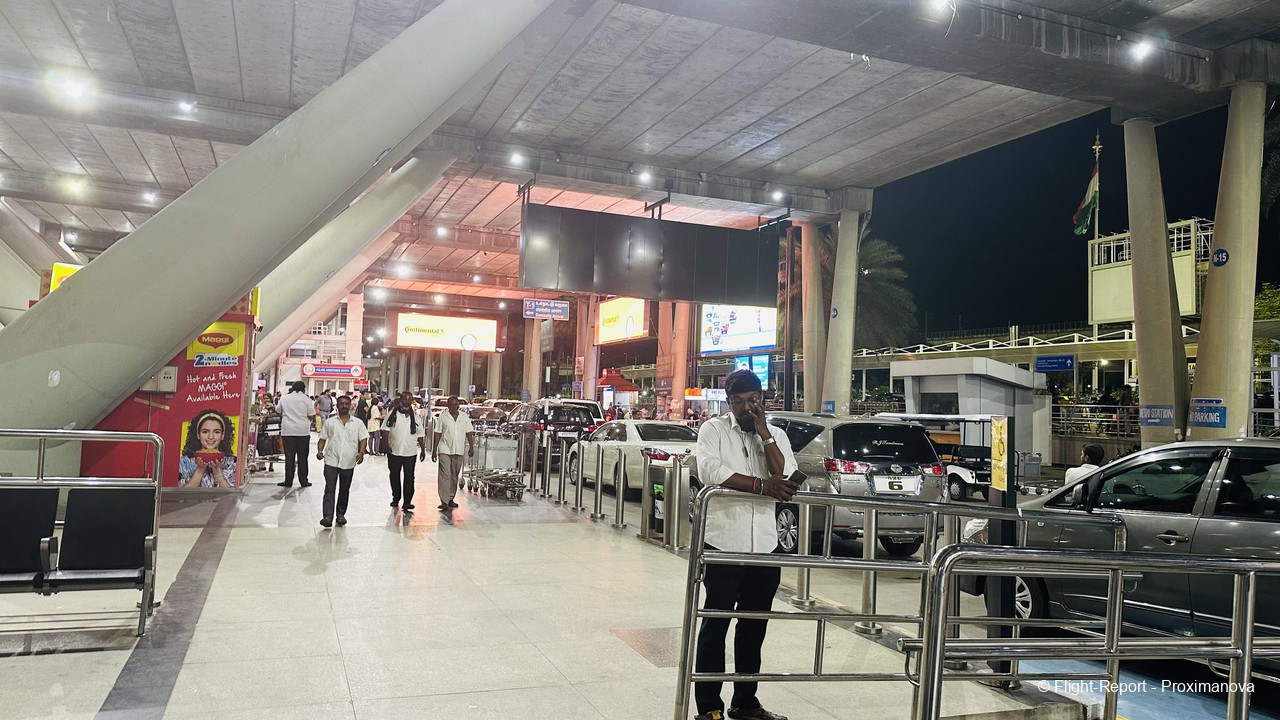
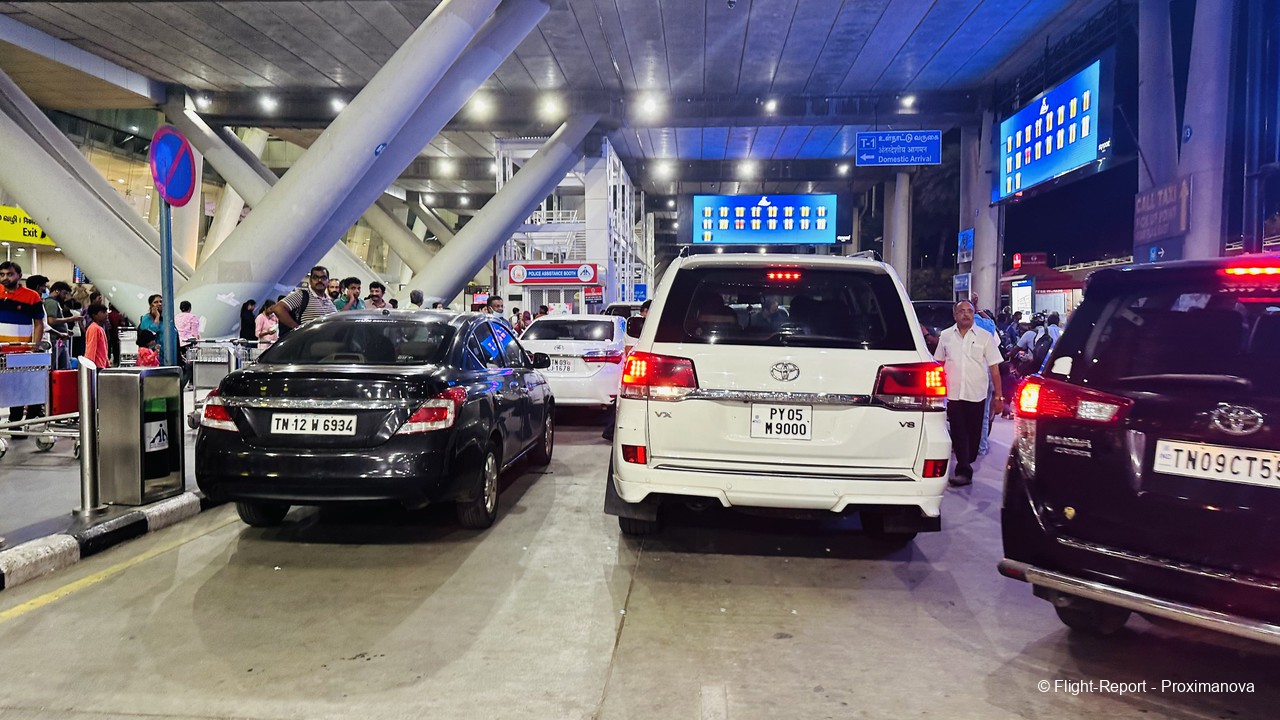
Anyway, by 8:30pm I was safely settled into the car, and on the way out I could not help but notice a Kia ad. The kid sister of Hyundai — which has enjoyed a strong presence in India since the 1990s — has grown tremendously, from nothing before 2019 to a significant market share on the back of its SUVs.
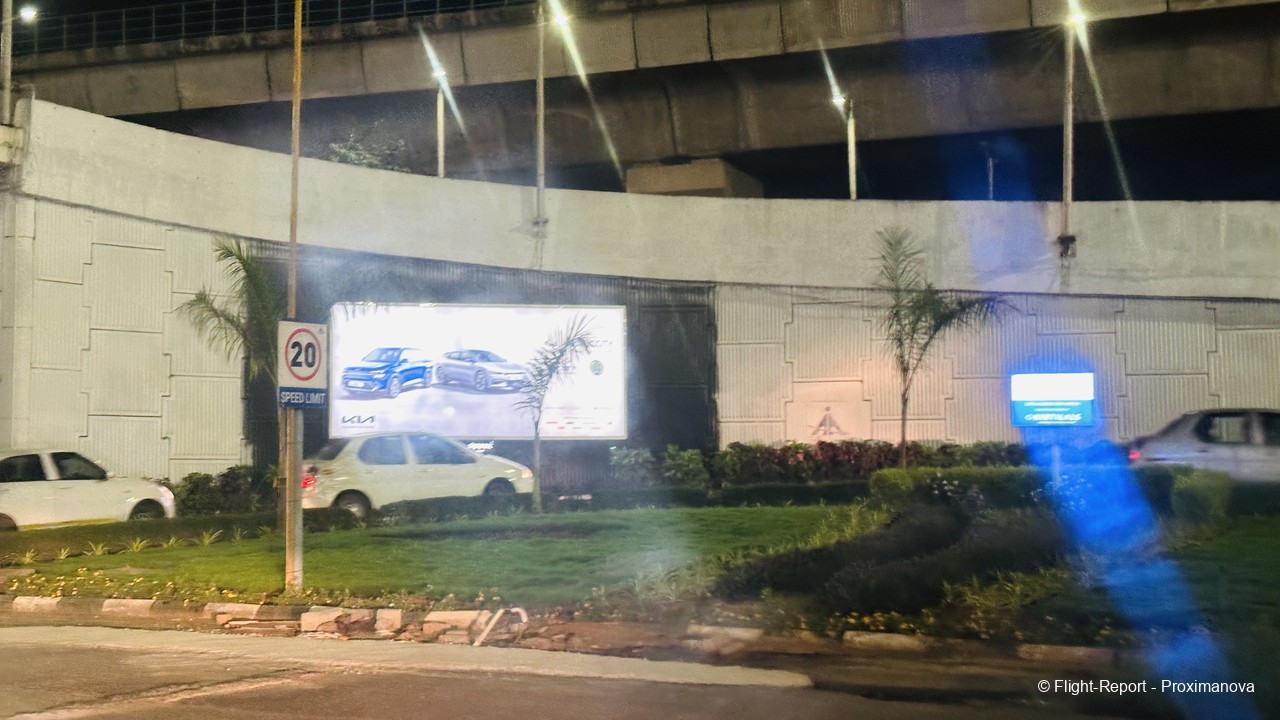
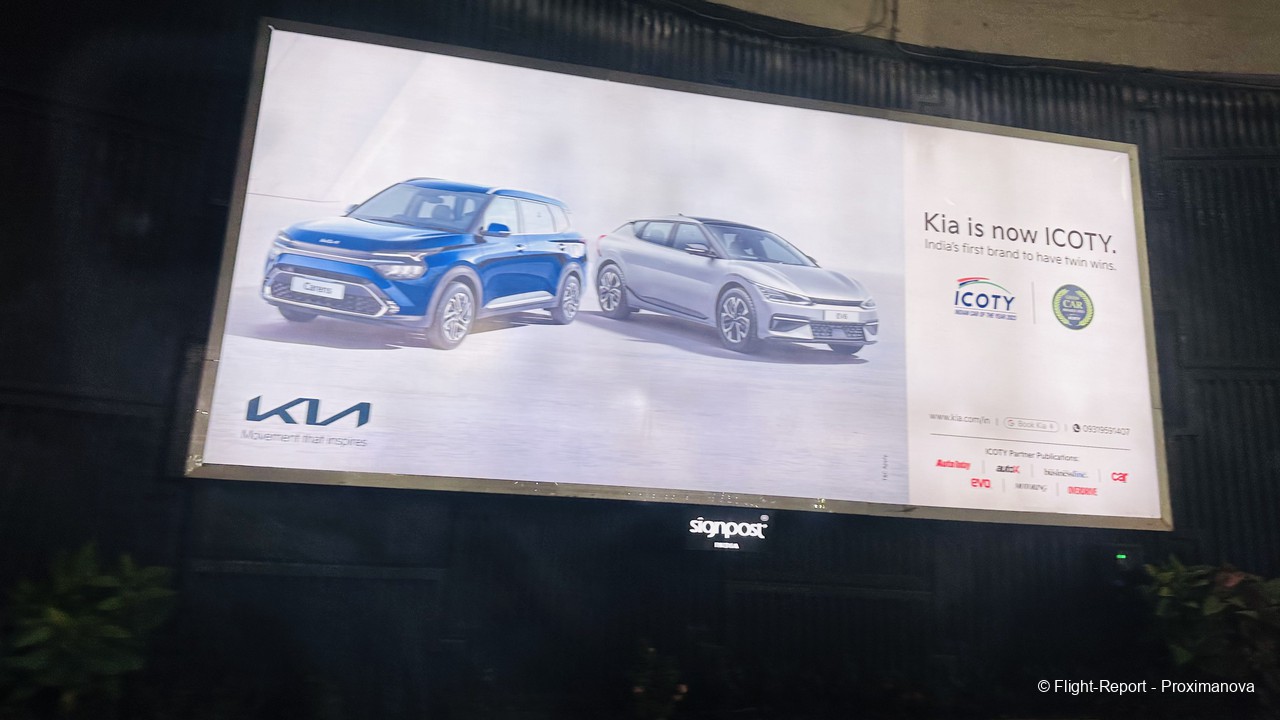

But home was not the next destination: we briefly paid a quick visit to Naidu Hall, a clothing store with a shiny new branch that had opened recently in the trendy shopping district of Shanti Colony near home.

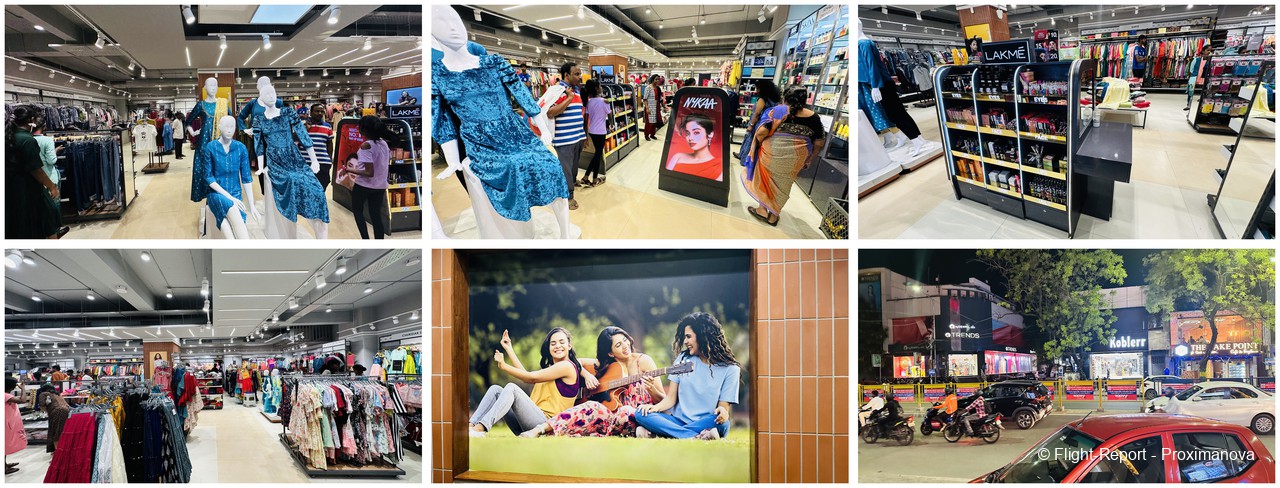
At home at last, I could finally tuck in to a simple but delicious meal, the last such homecoming meal in the city where I have spent most of my lifetime.
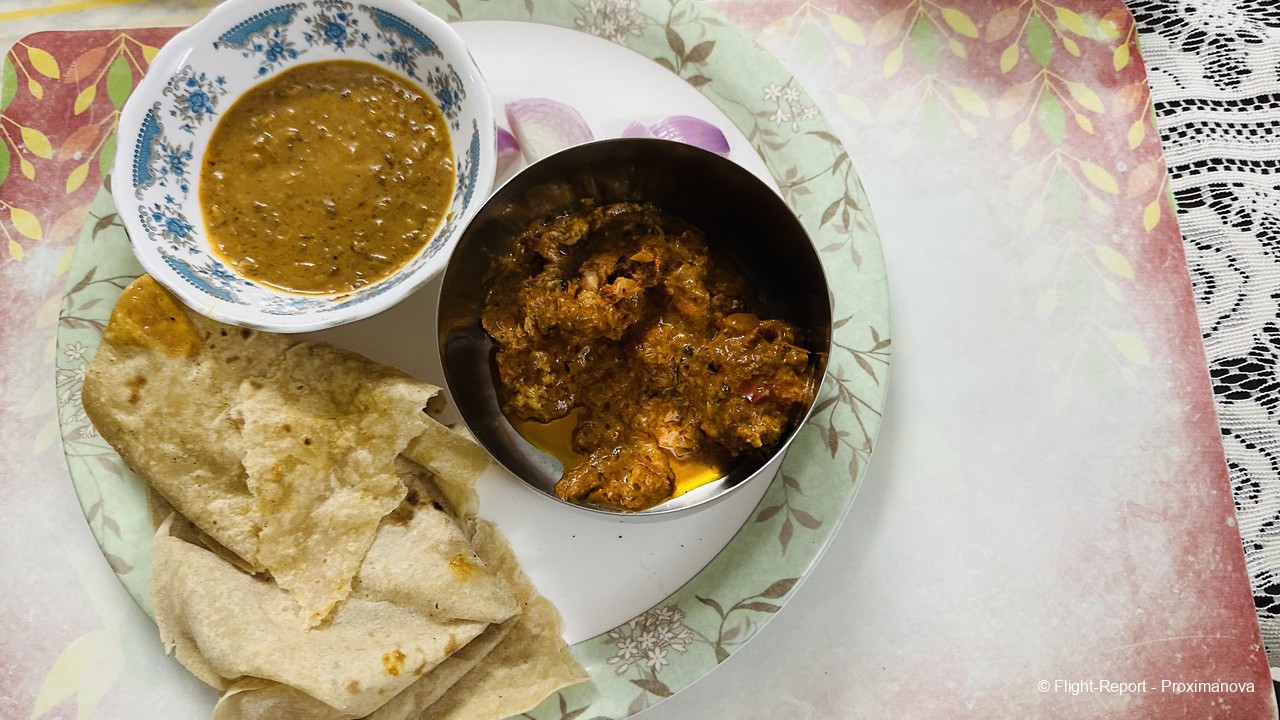
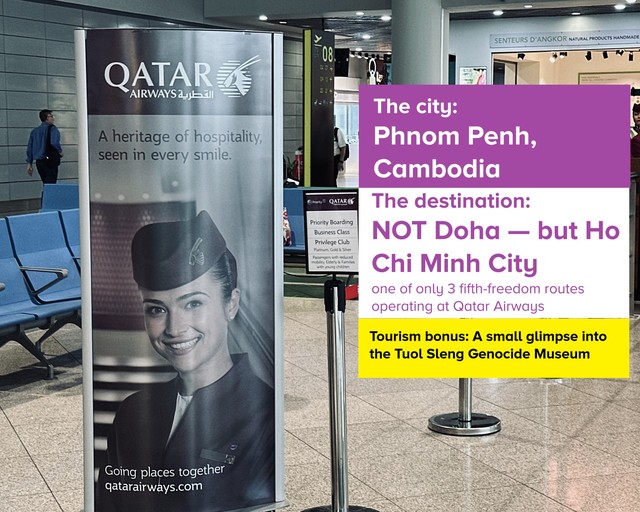
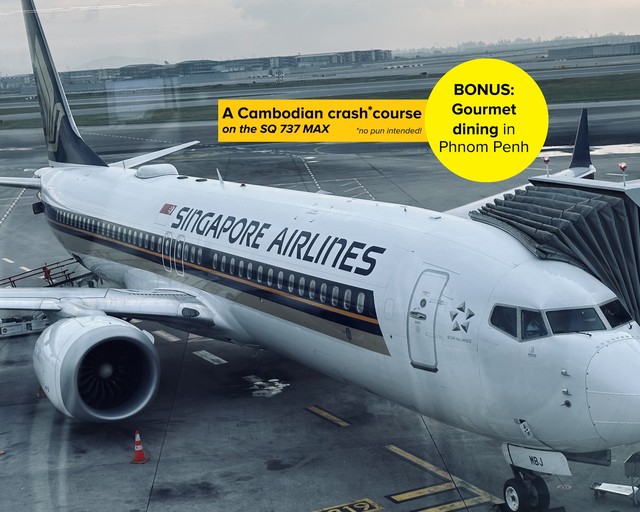

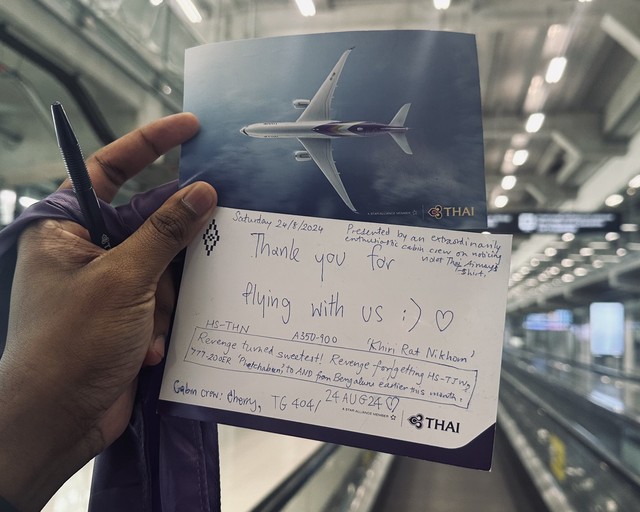
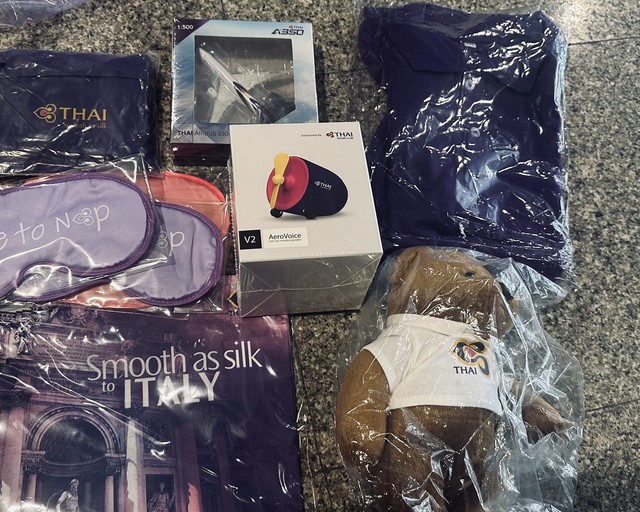
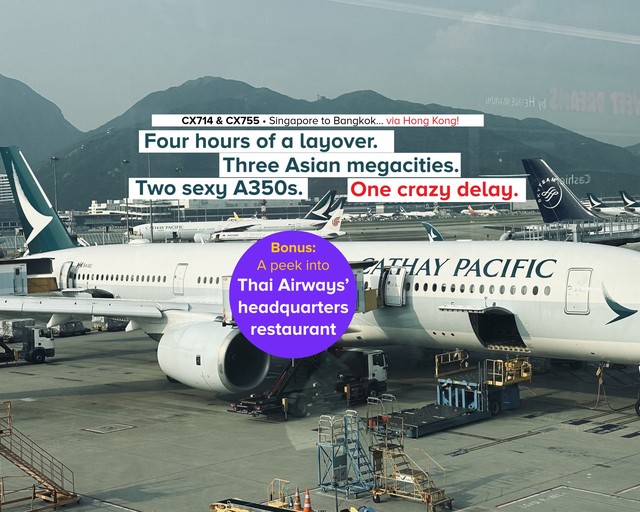

Beautiful report as always! The BOM terminal is gorgeous.
I am very pleasantly surprised to see such a positive review of AI short-haul. I was not expecting such a positive experience--the catering is exceptionally good for such a short flight! The cabin is looking tired, but I assume they'll get refreshed by Tata sooner than later.
Thanks for sharing!